Roberts Recorders • Califone • Rheem Califone/Rheem Roberts Part 2 of 2 • Go to Part 1
Roberts Recorder, Califone & Rheem reel to reel tape recorder Ads |
1958 Roberts reel to reel tape recorder ads
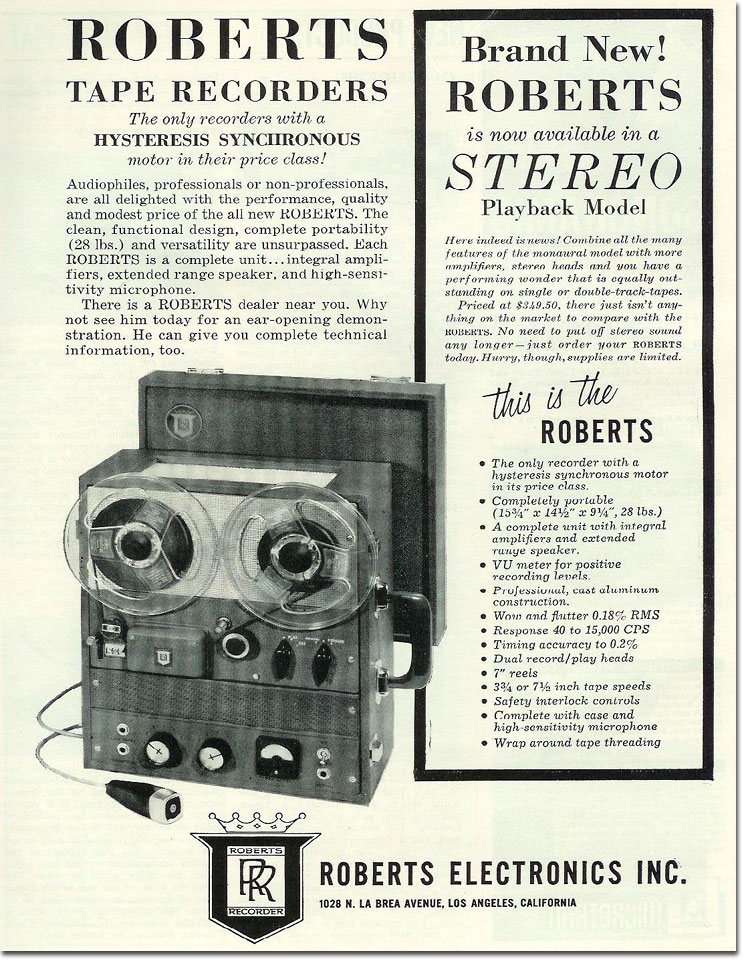

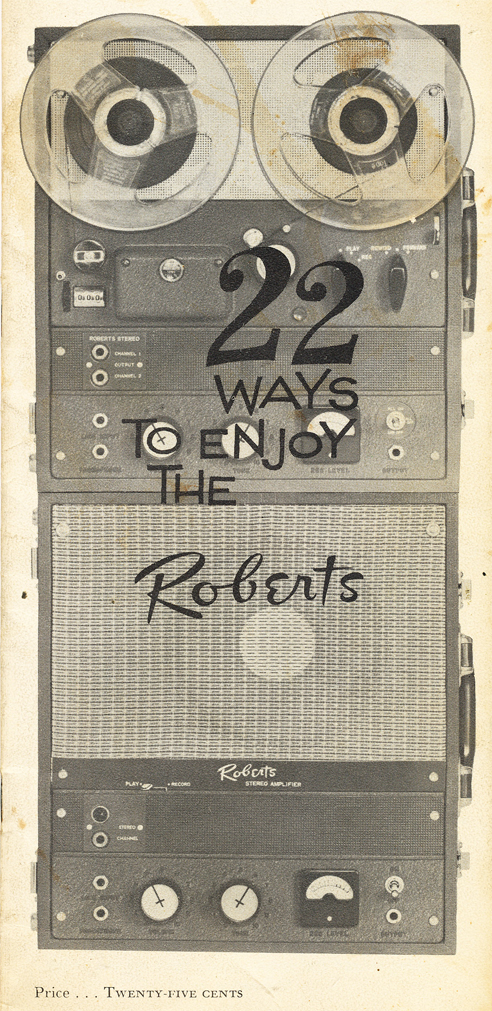
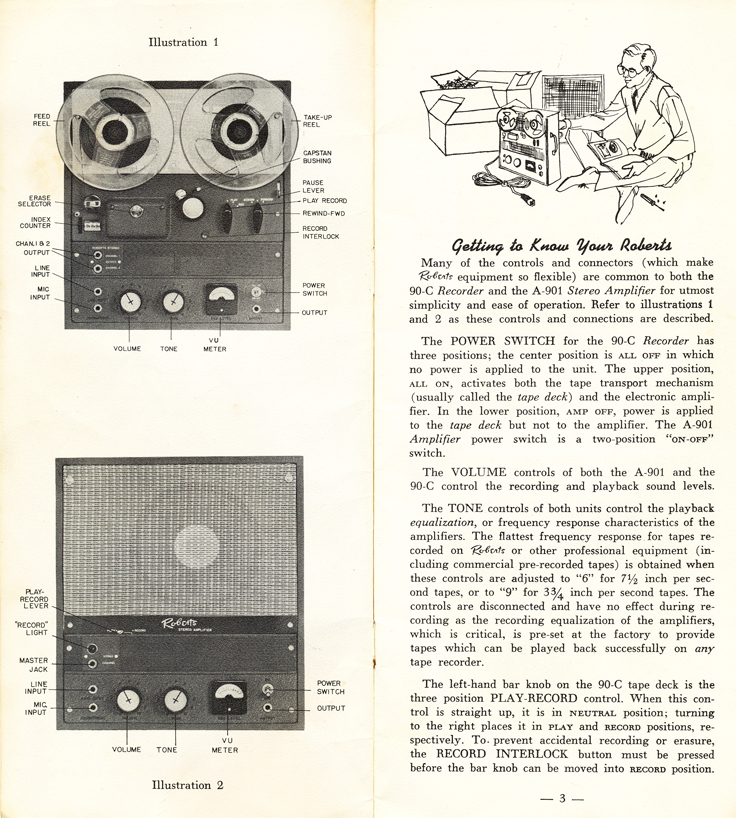
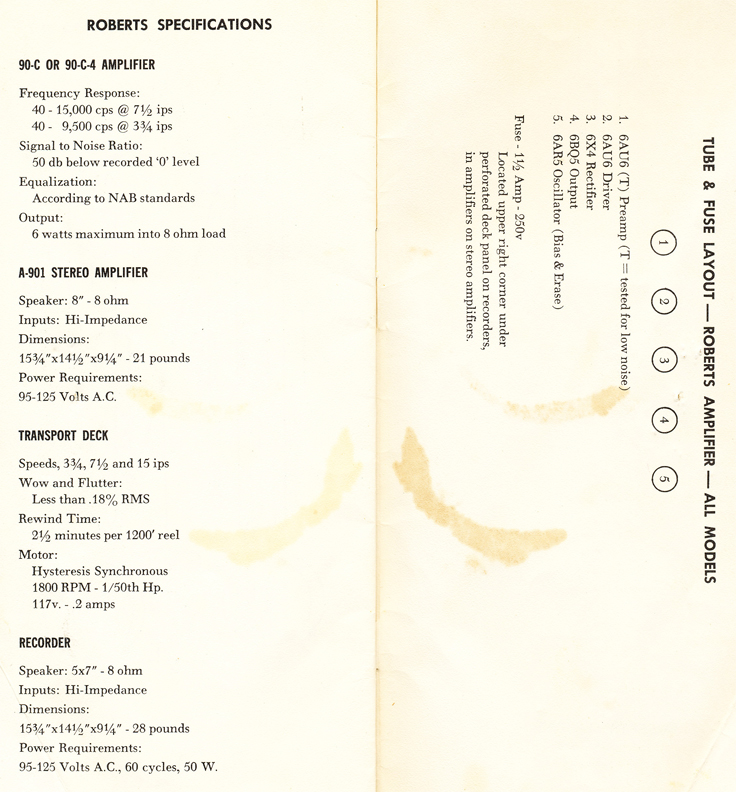
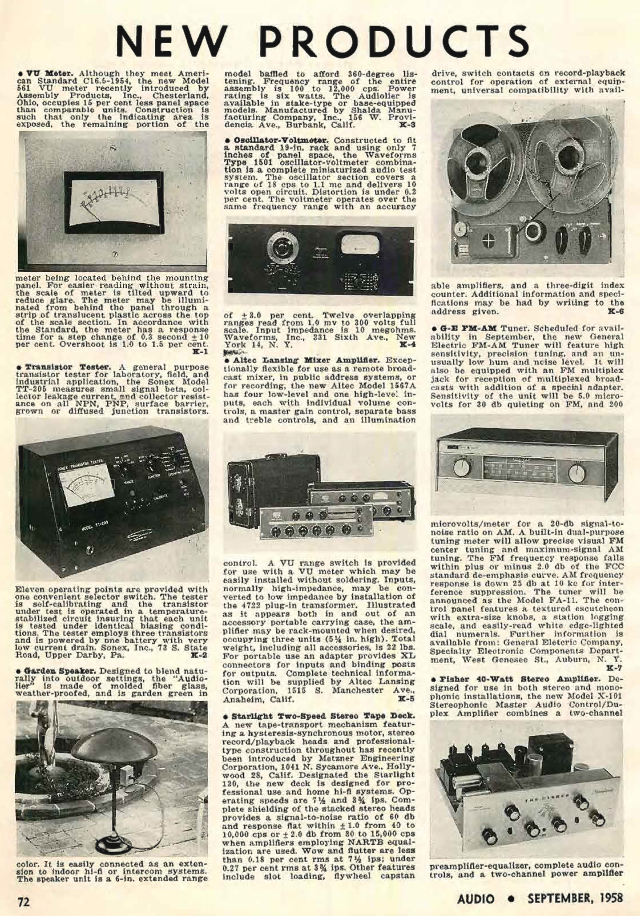
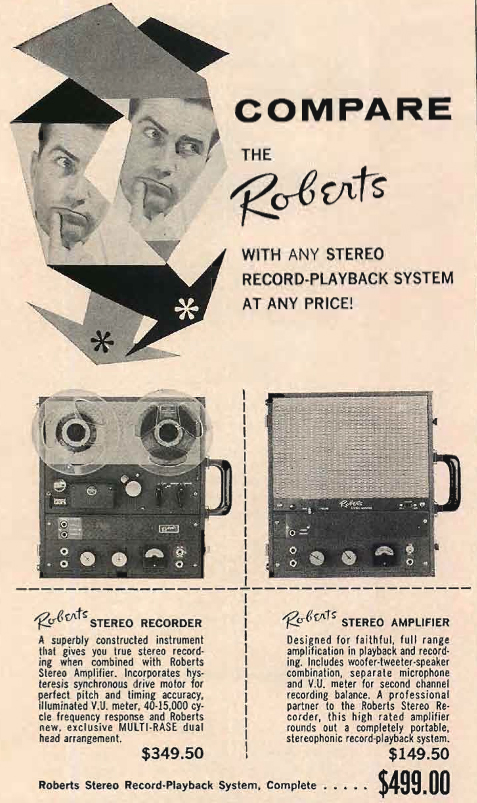
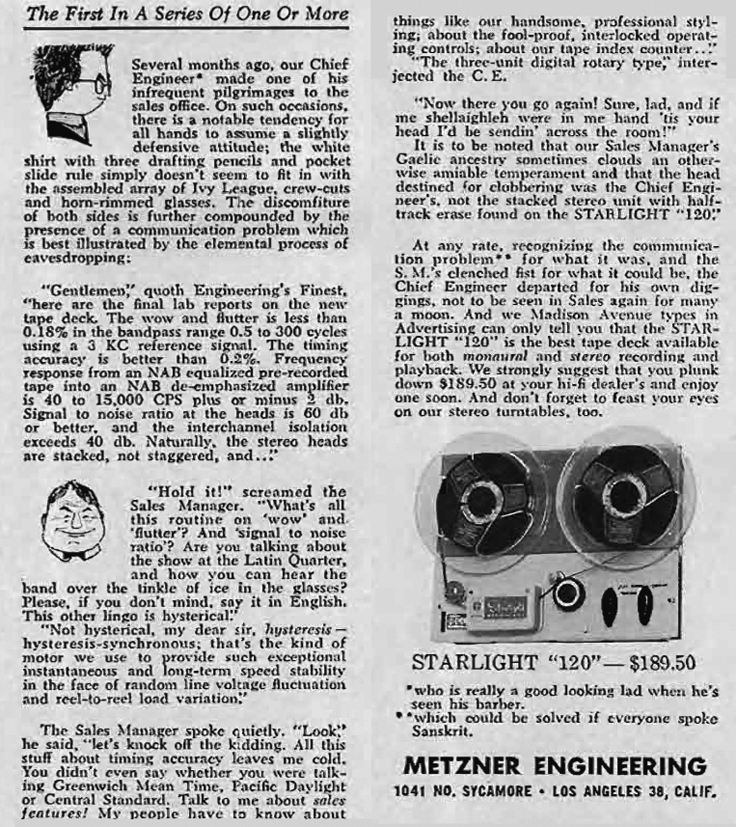
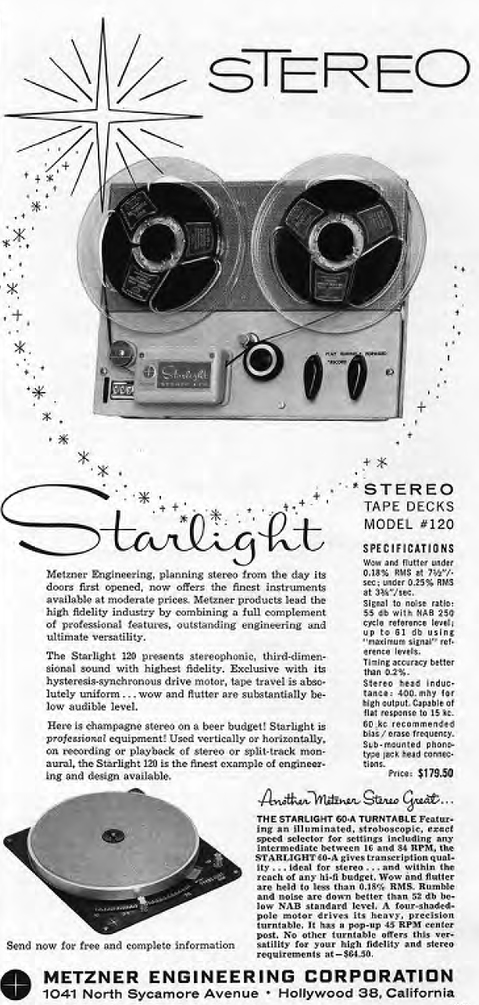

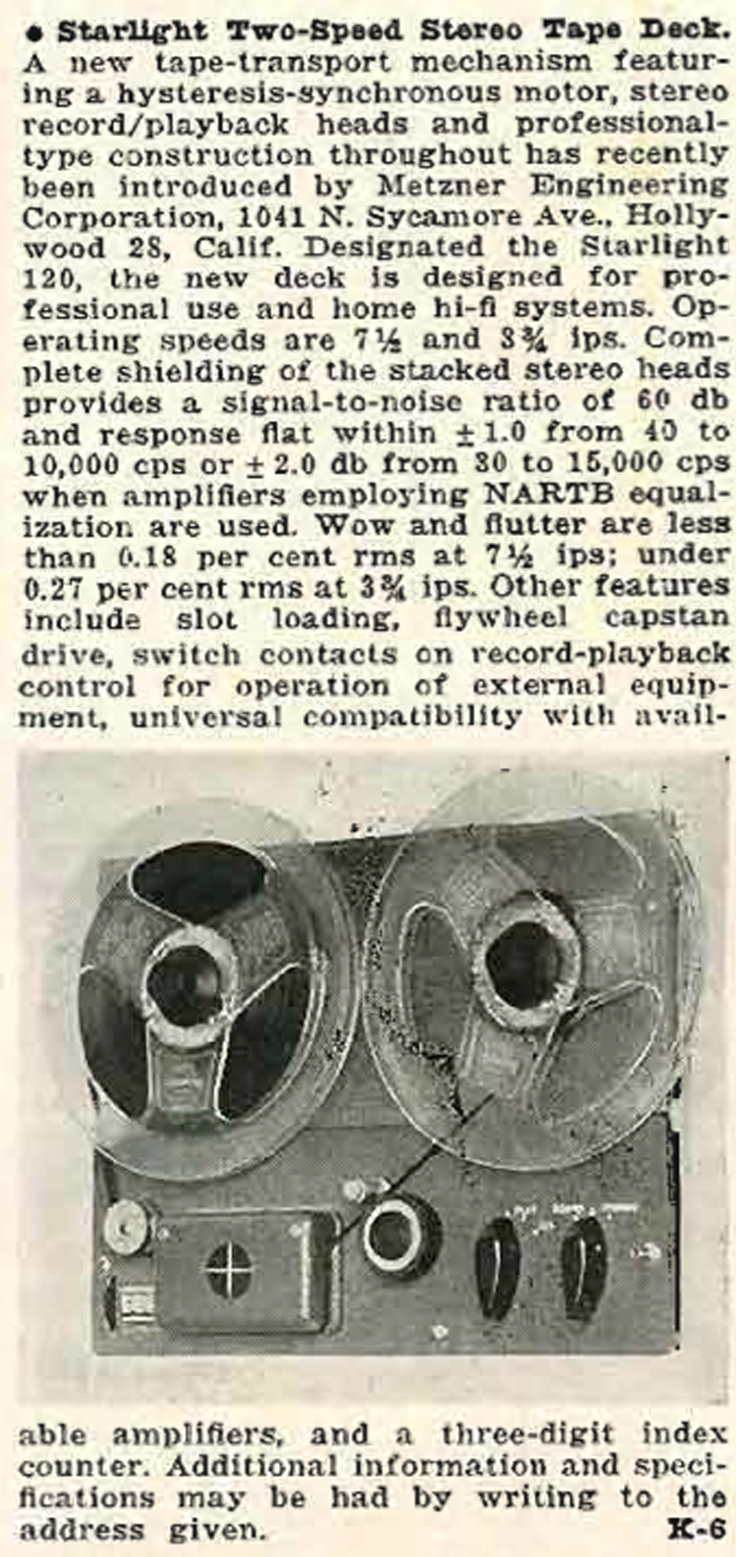
1959 Roberts reel to reel tape recorder ads


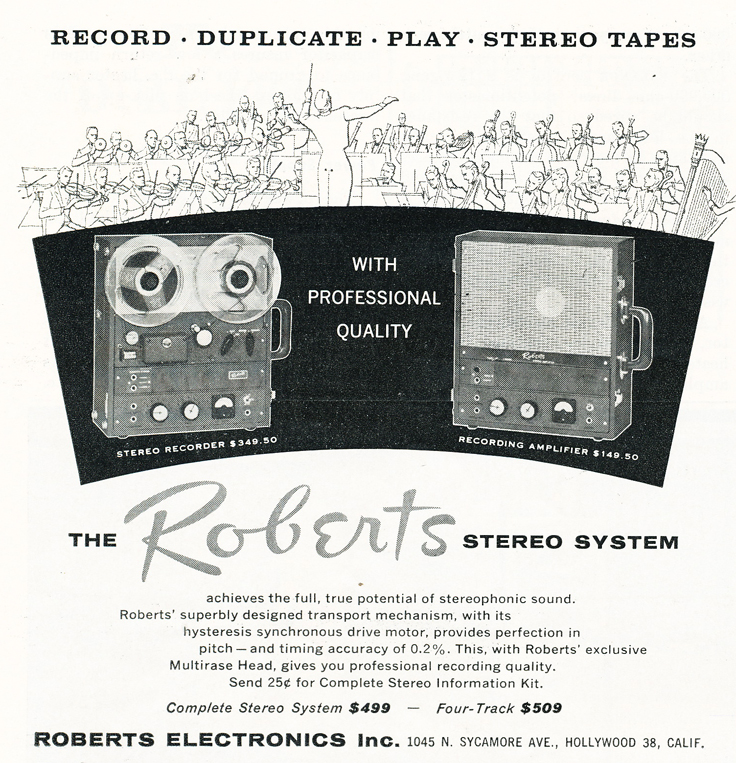
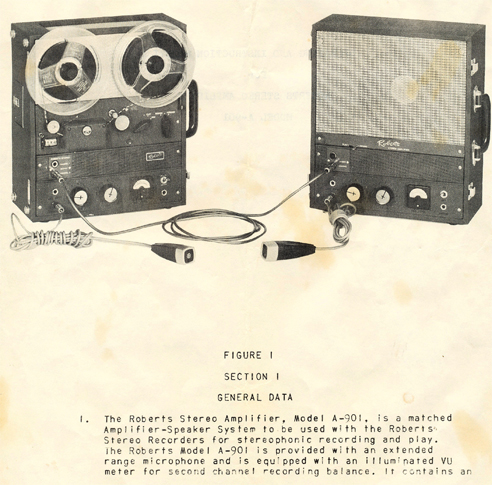
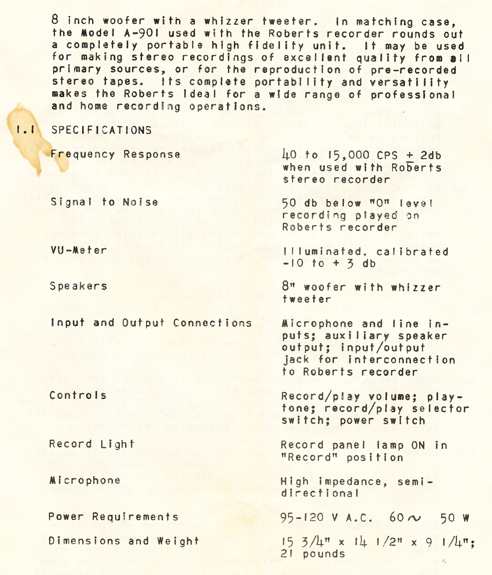
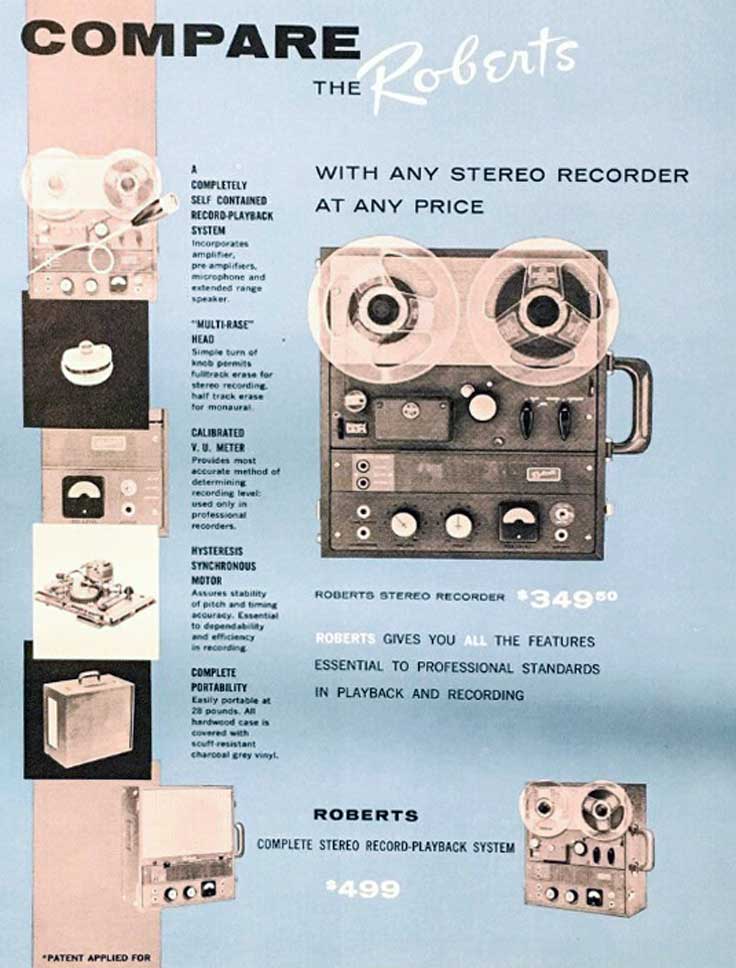





1960 Roberts reel to reel tape recorder ads
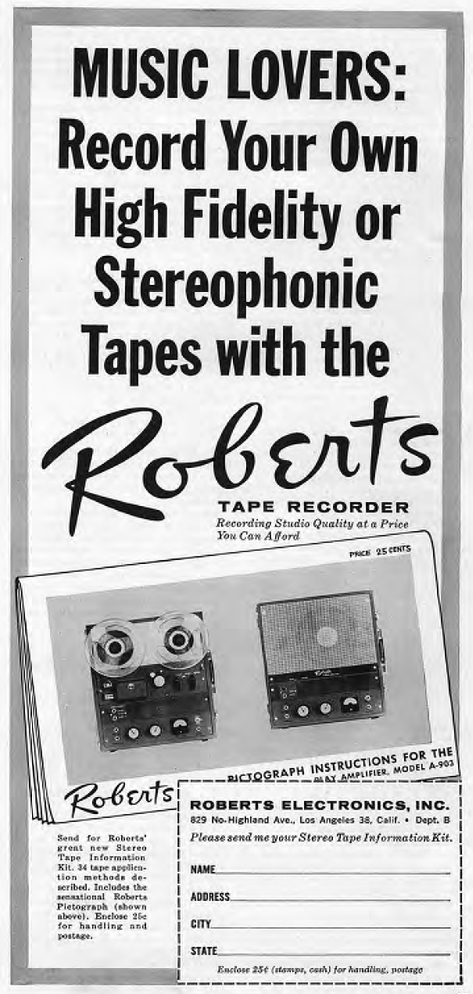
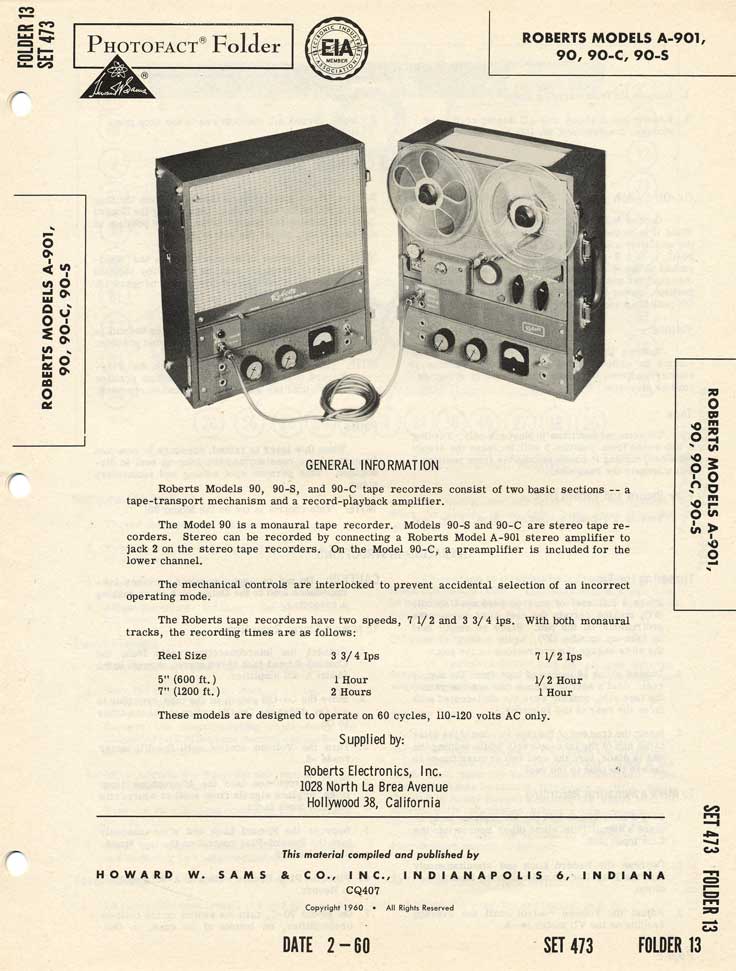

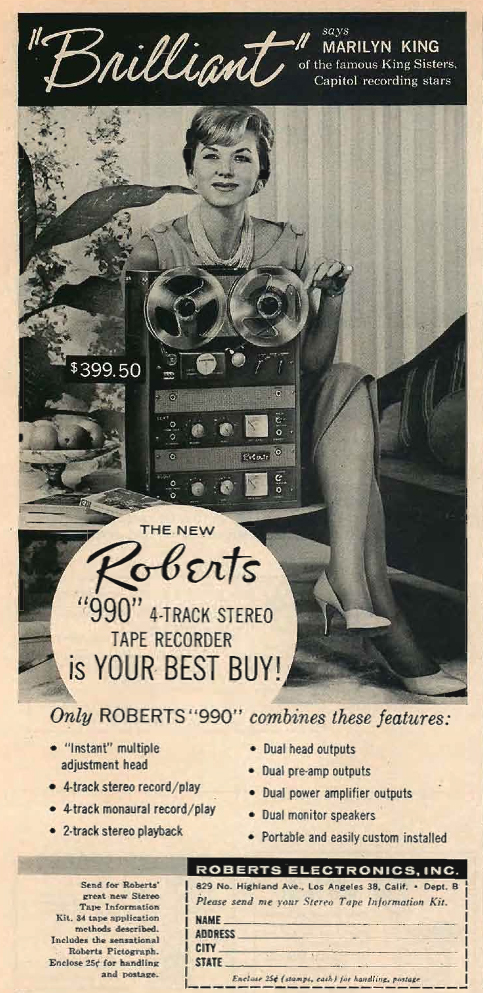
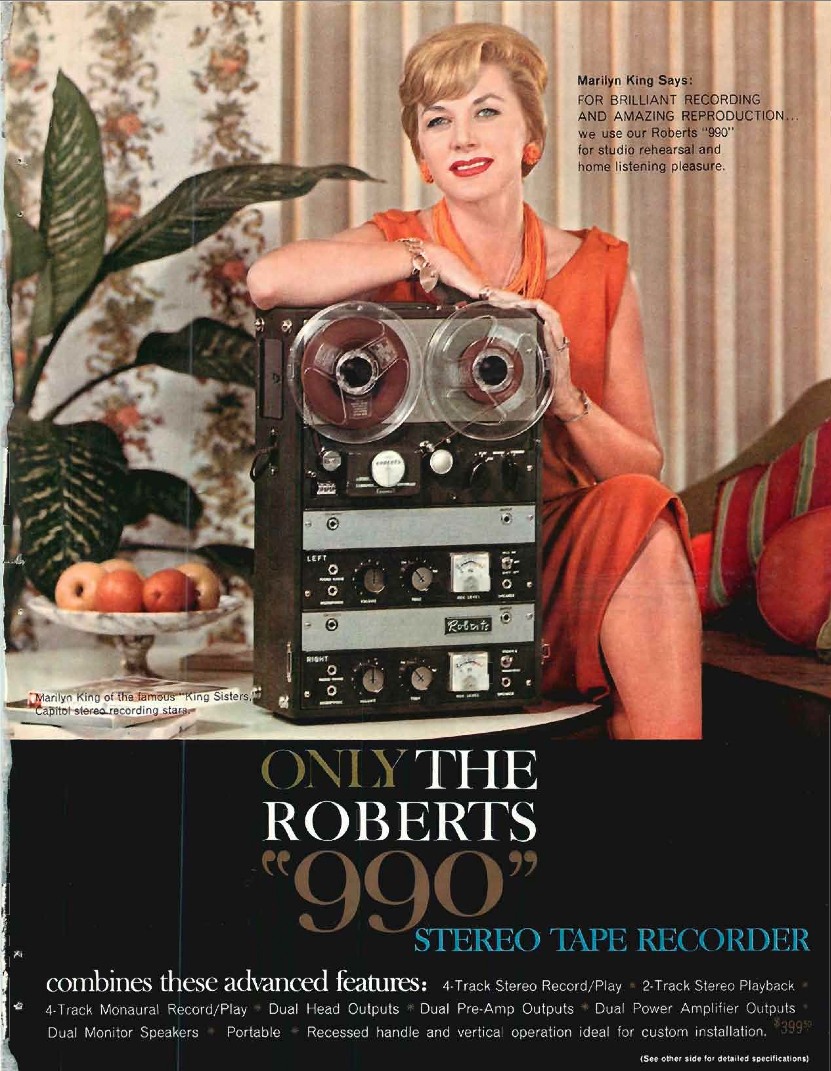
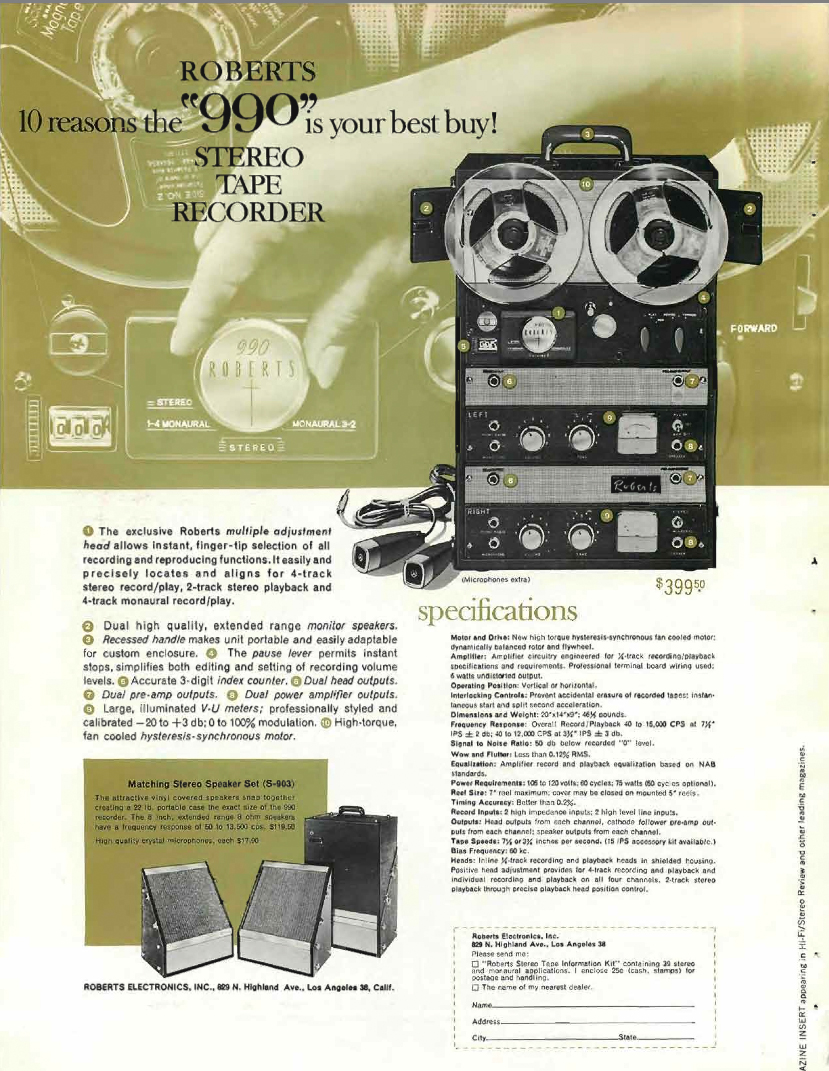
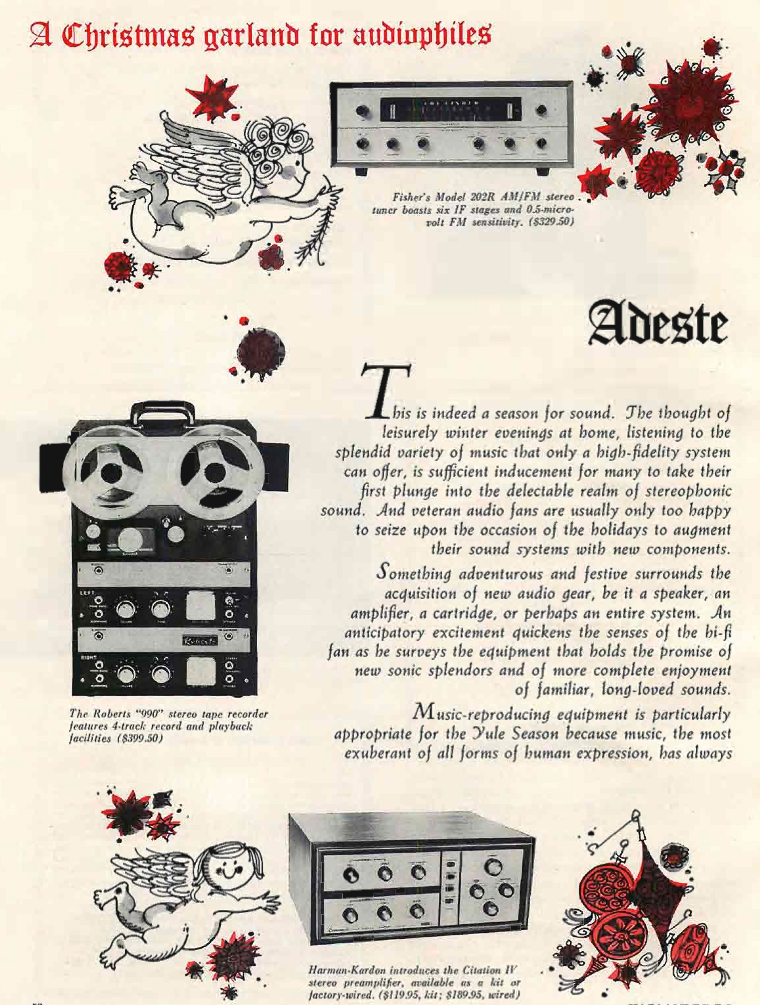
1961 Roberts reel to reel tape recorder ads
Rheem Manufacturing Company bought Califone and Roberts Recorder and kept Robert Metzner on in the company where he continued to direct recorder development and relations with Akai. In 1961 McGee was the first radio catalog that we could find to begin listing Roberts recorders for sale. However Roberts Recorders was not in the catalog the following year (1962).
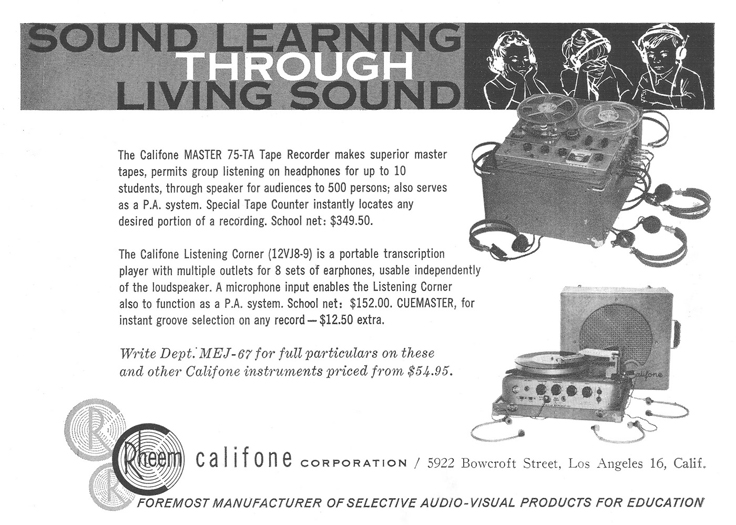


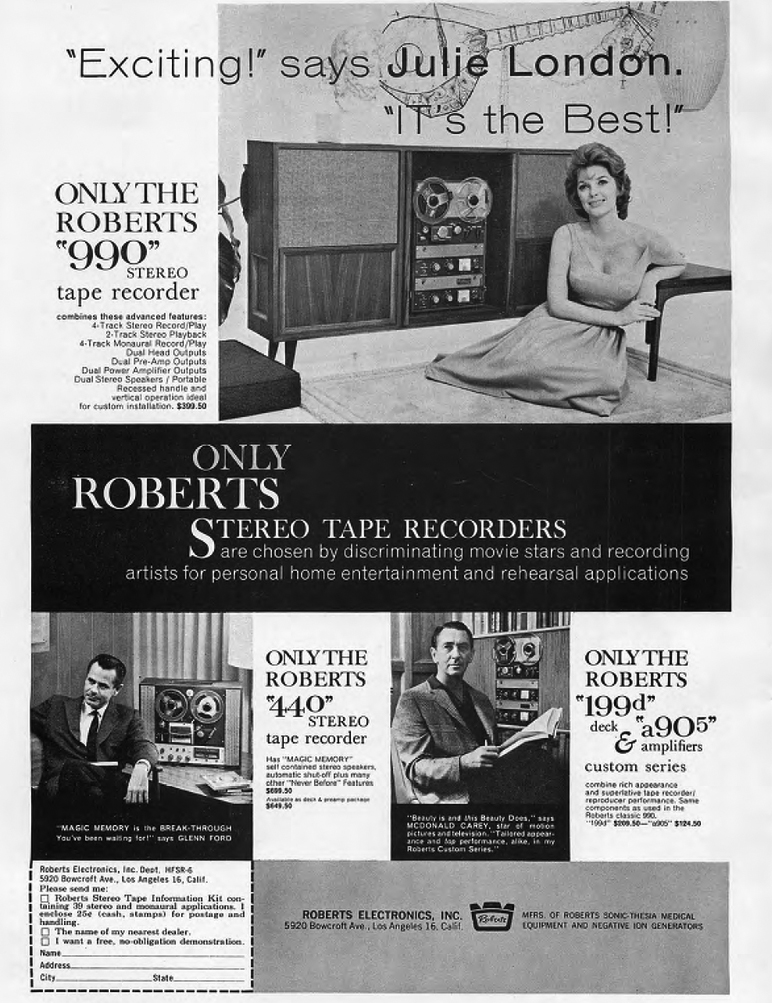

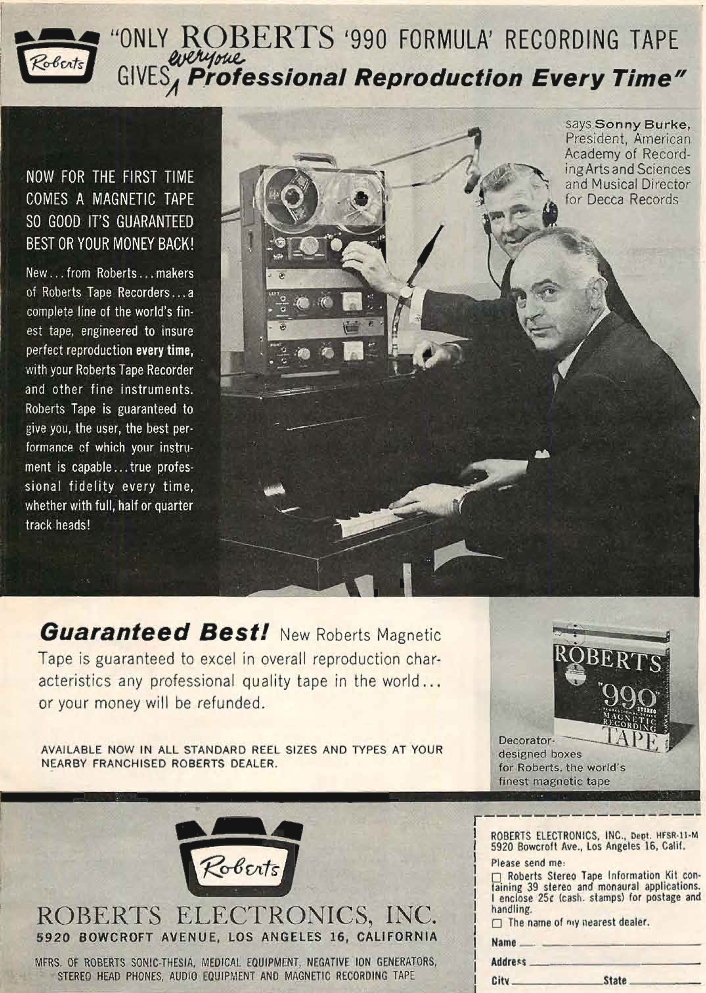
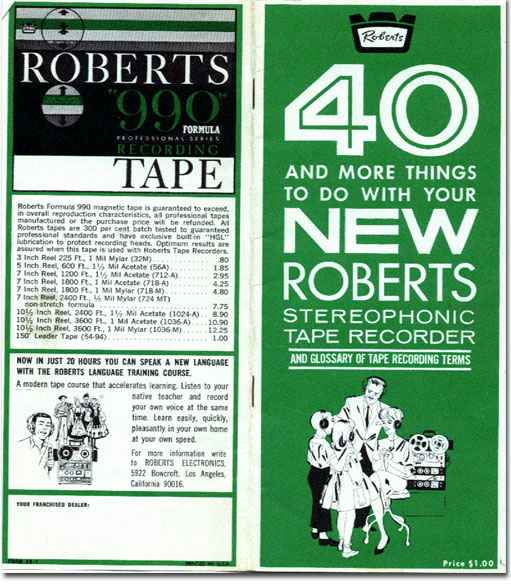
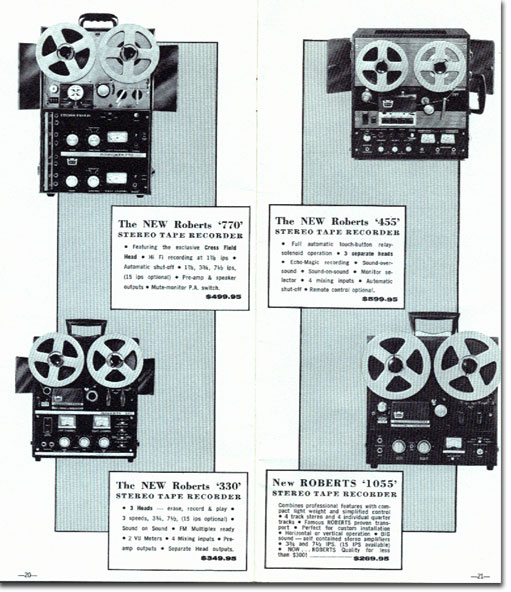


1962 Roberts reel to reel tape recorder ads
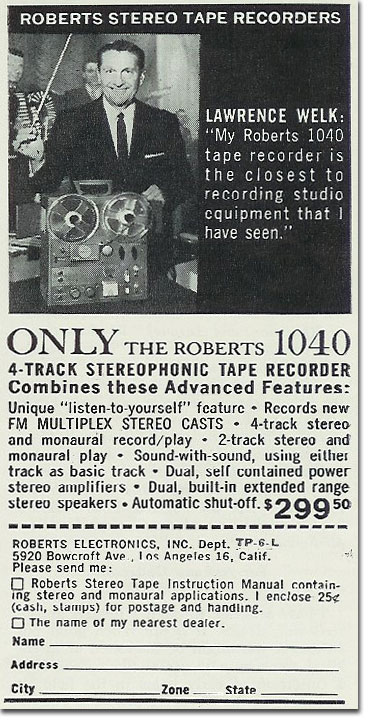
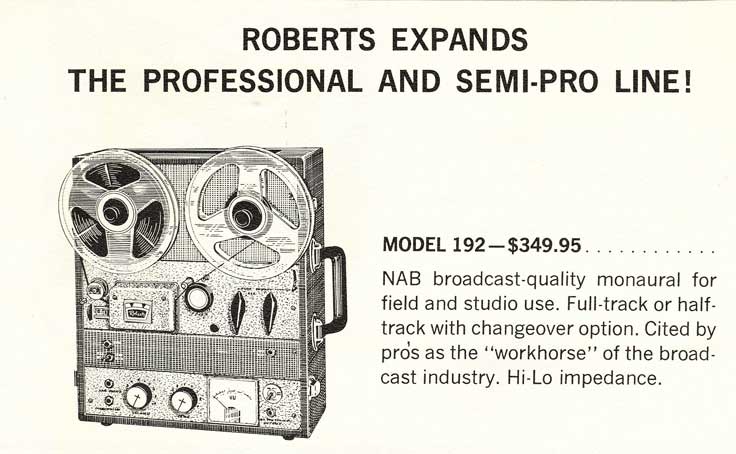


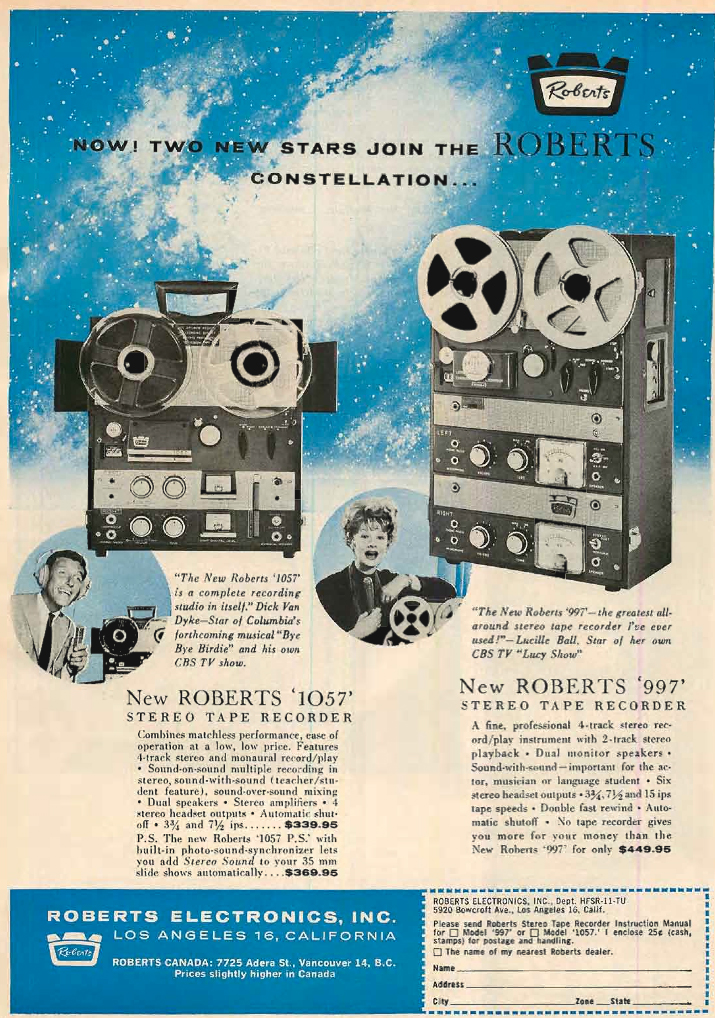

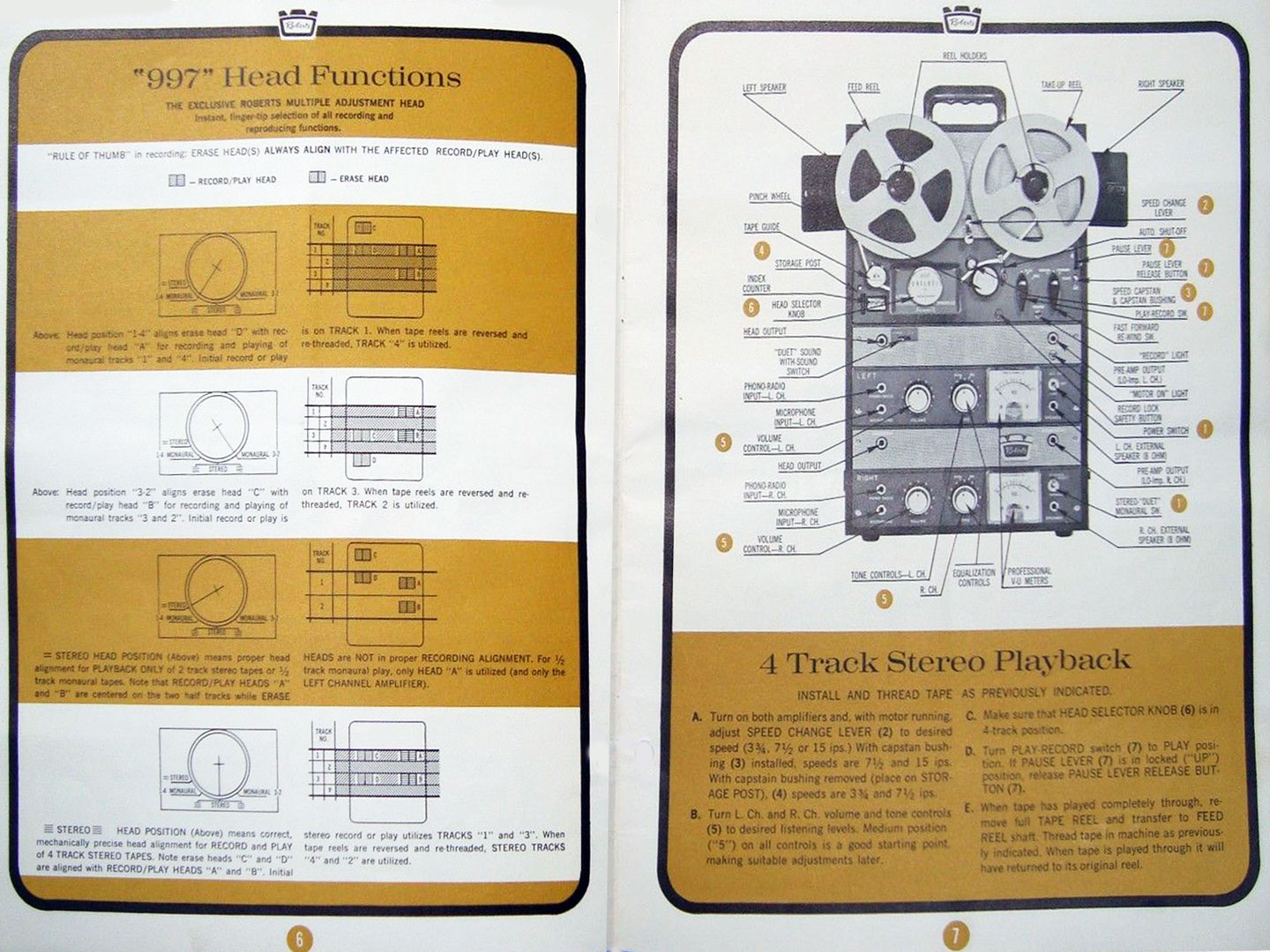



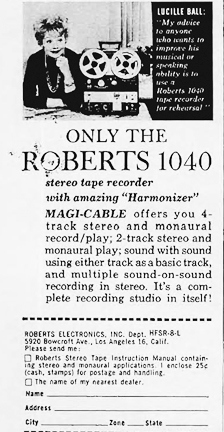
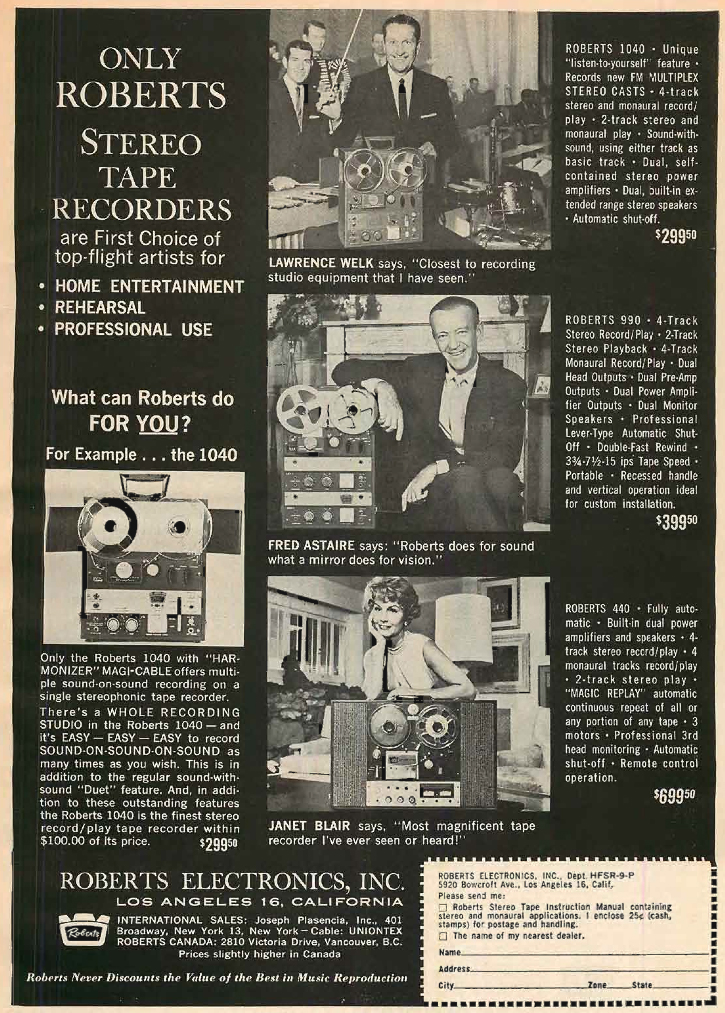
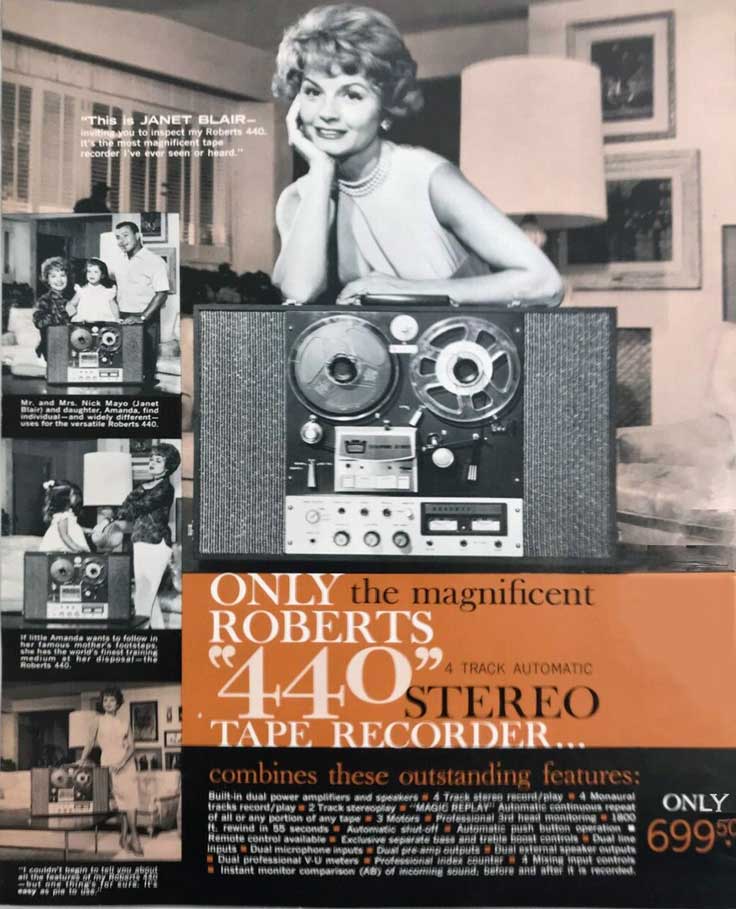
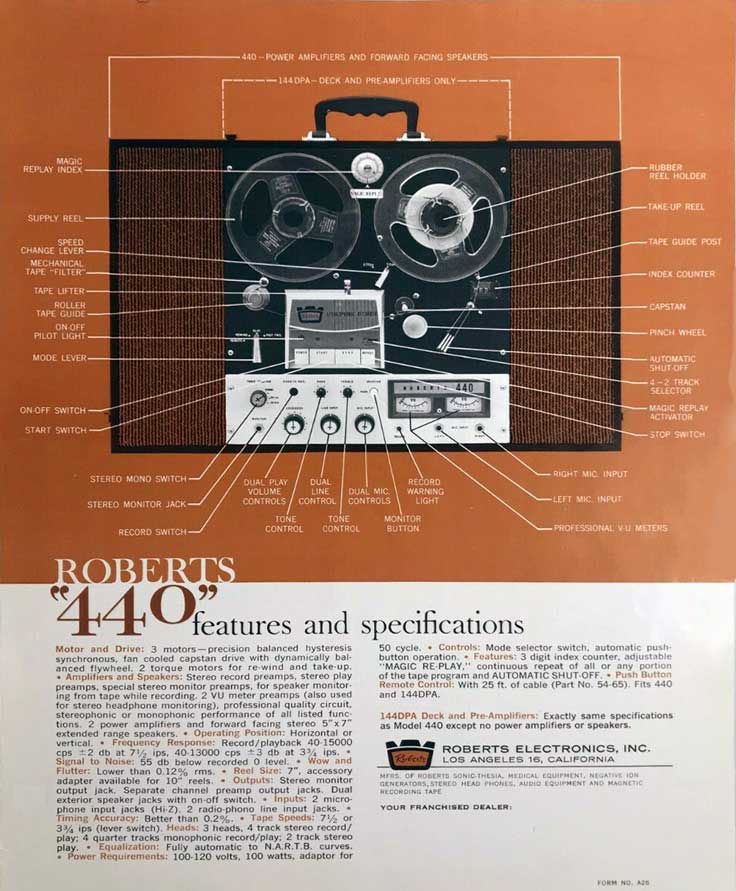
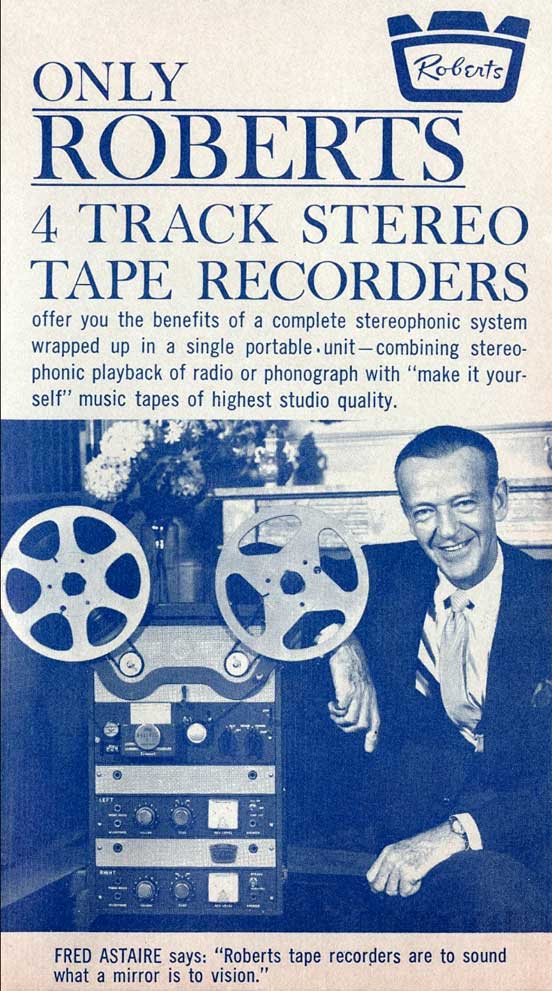
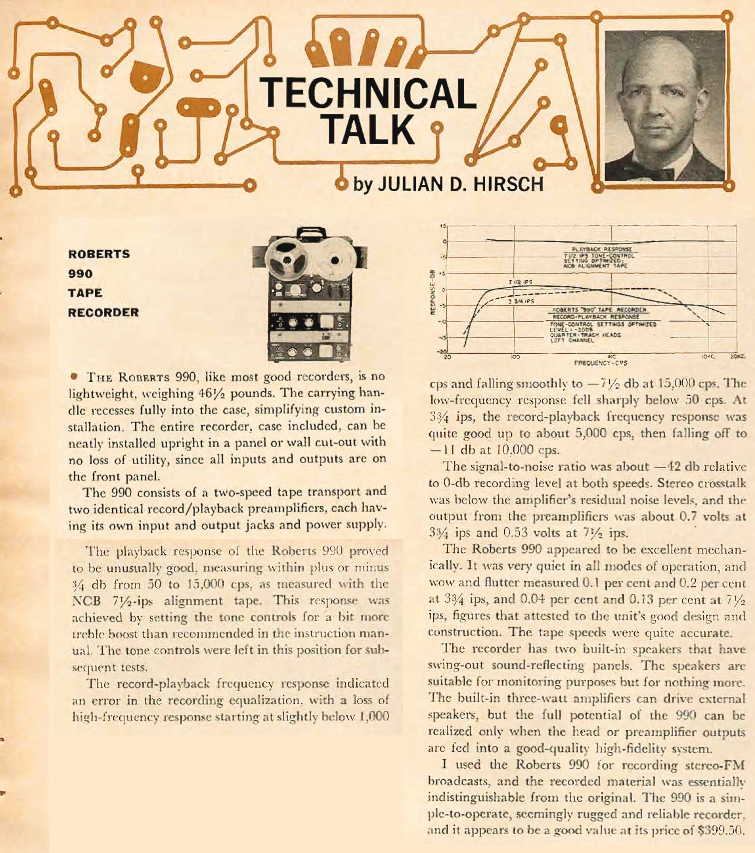


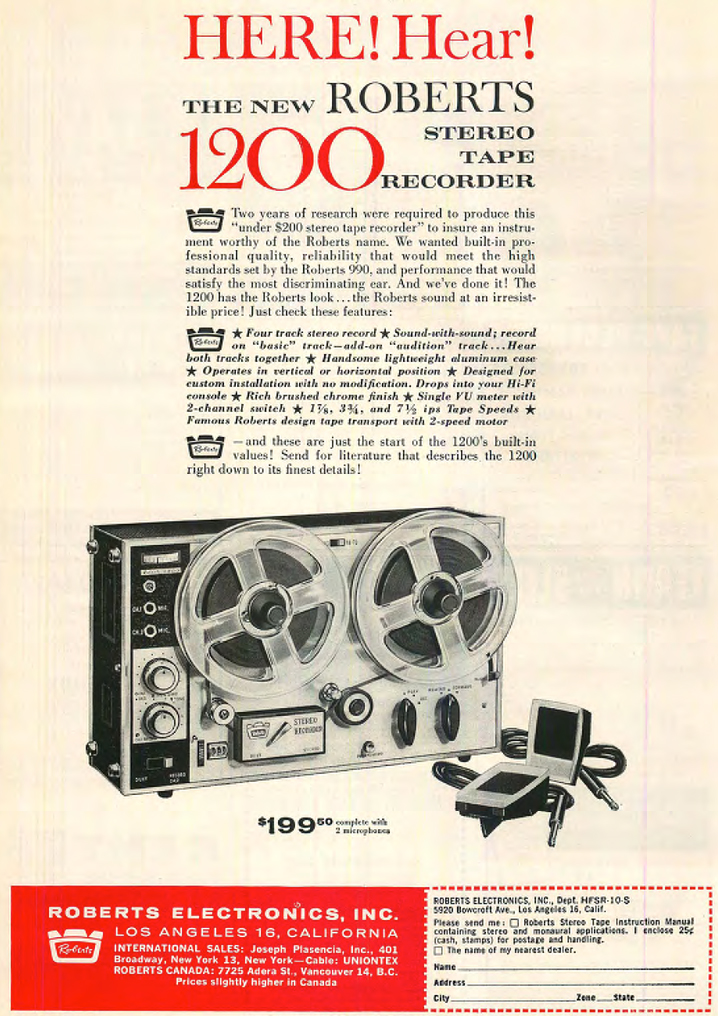
1963 Roberts reel to reel tape recorder ads

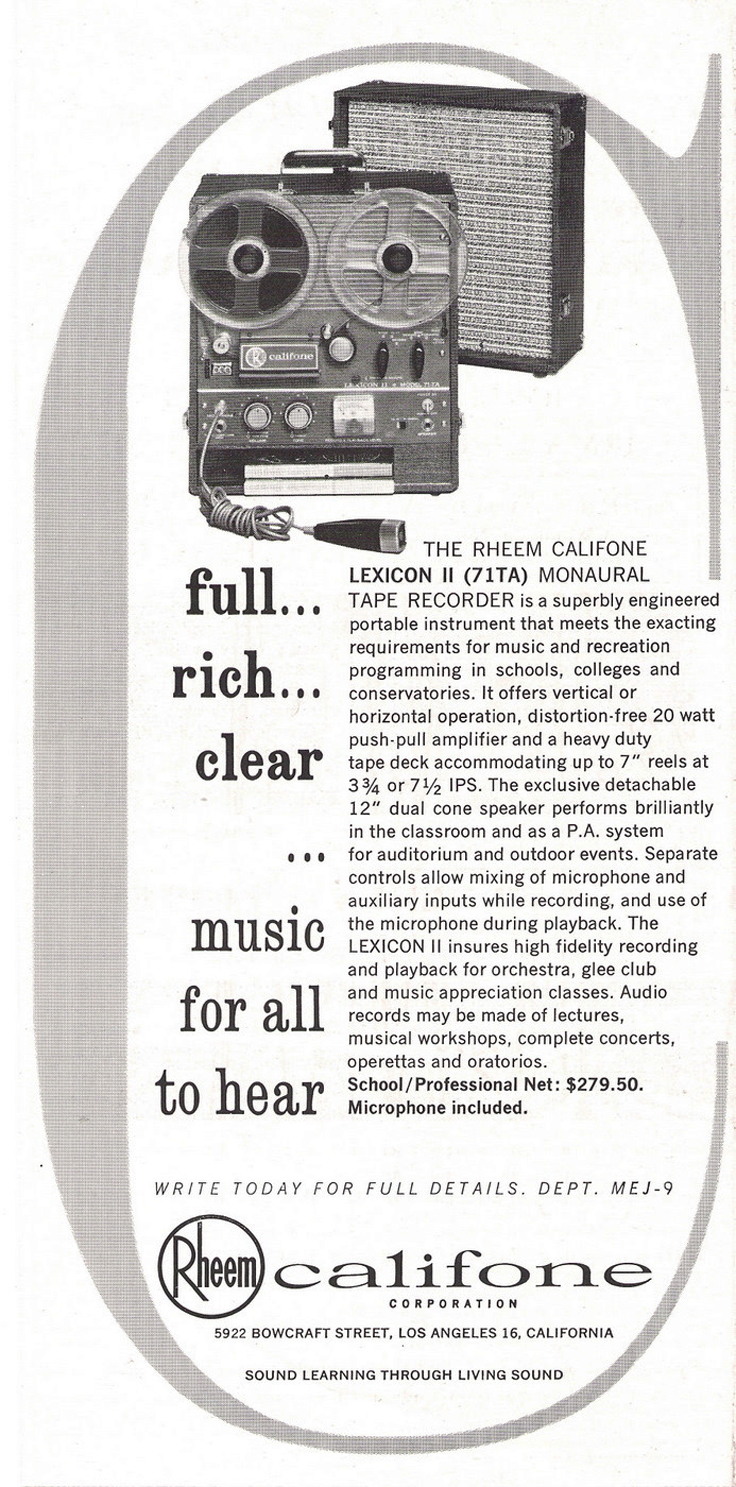
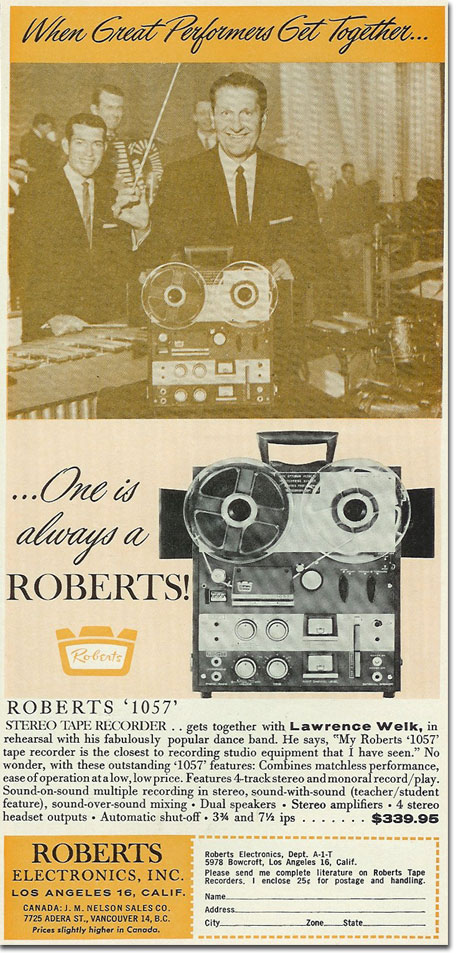



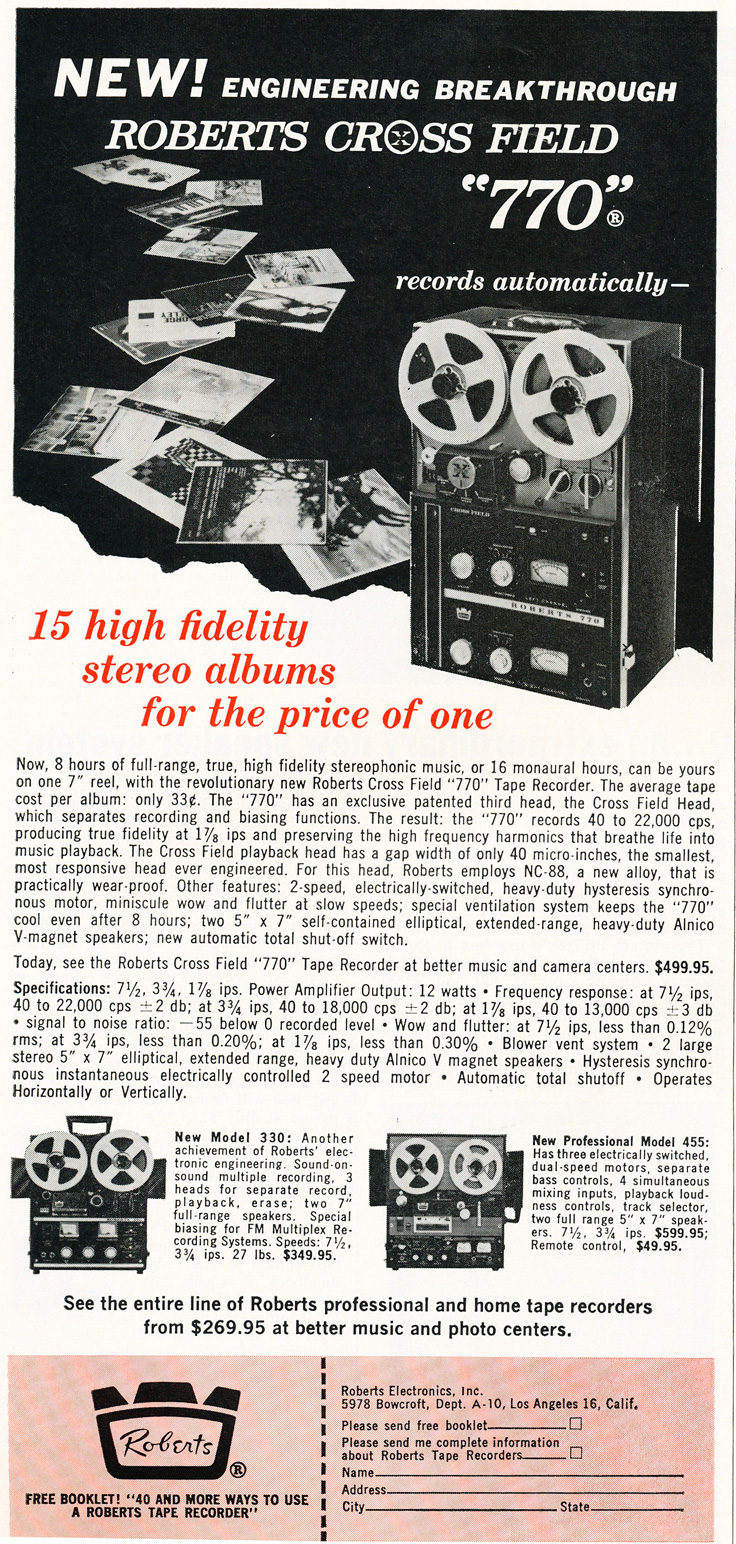

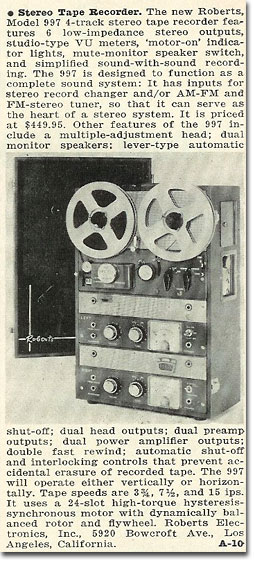
view 1963 Roberts 1055 in pdf
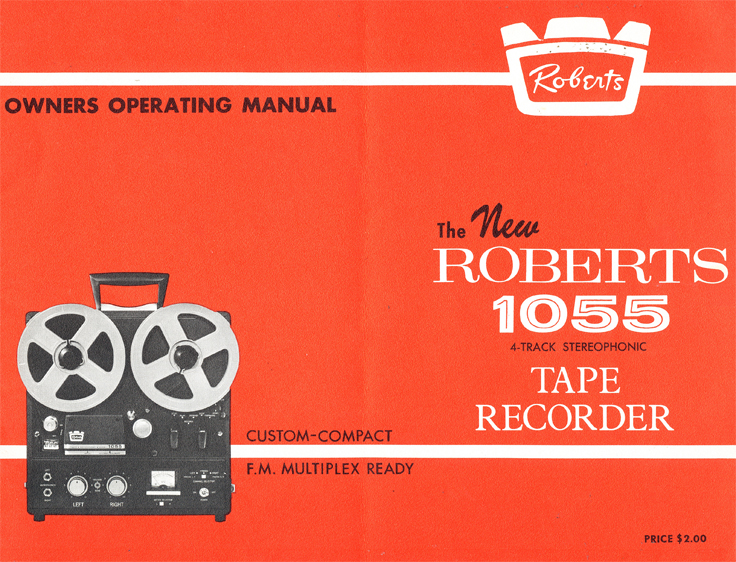


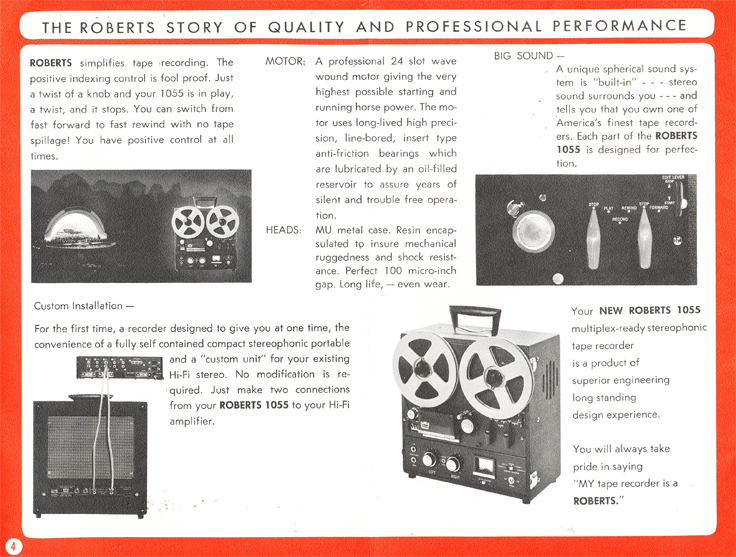
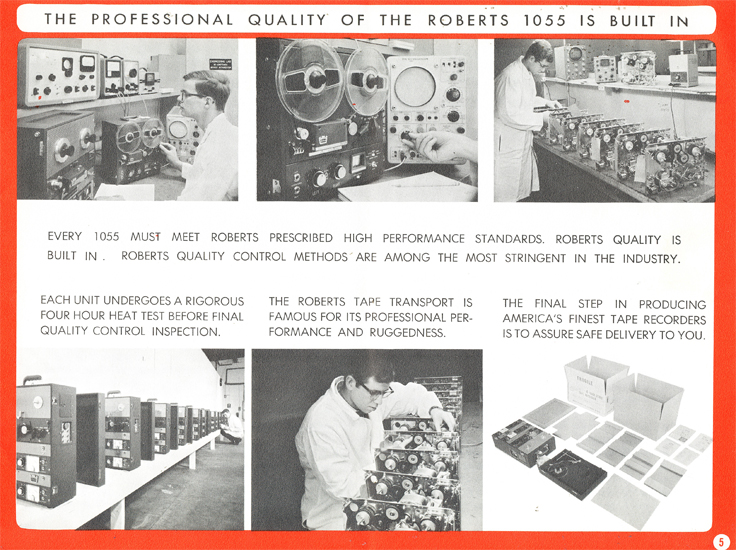
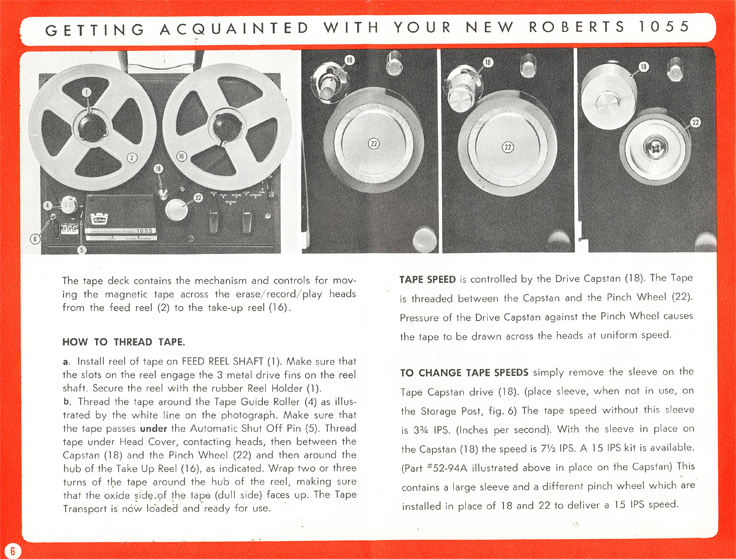
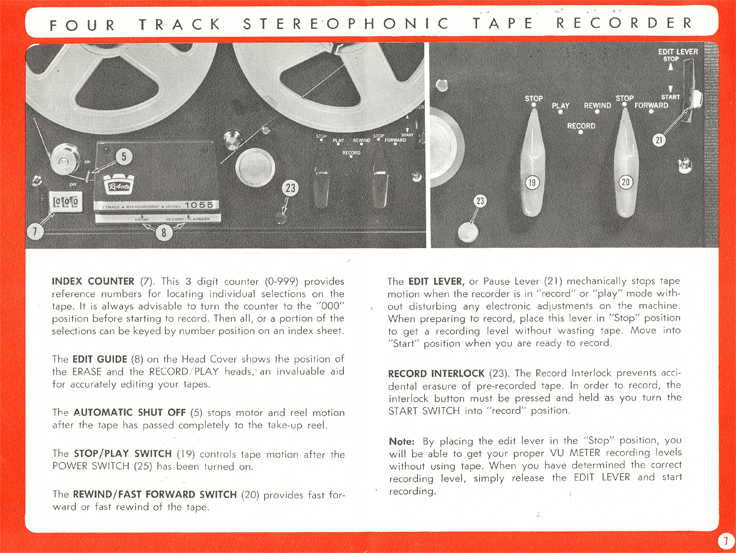

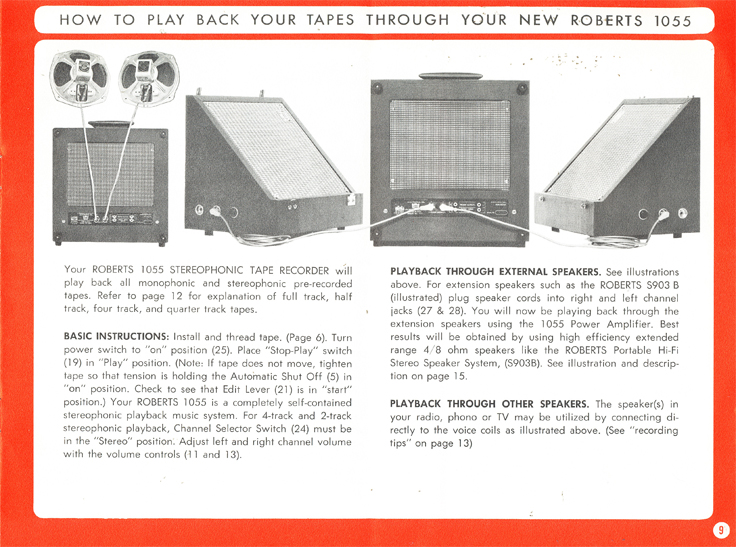

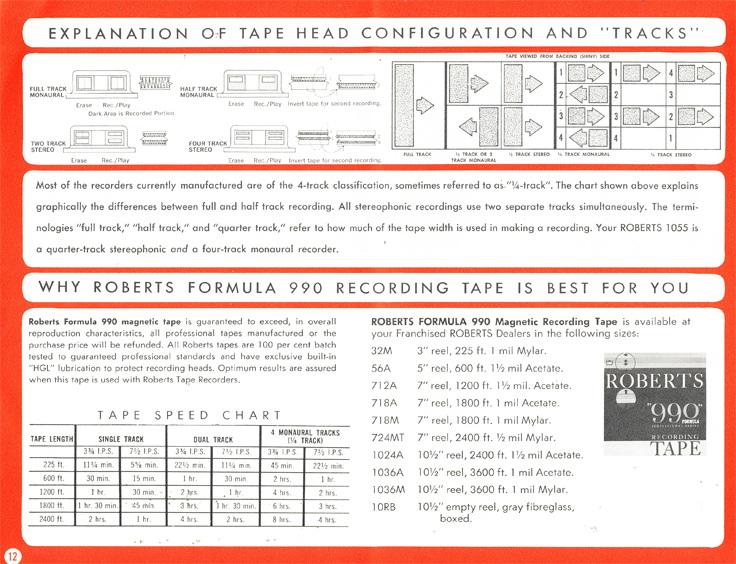


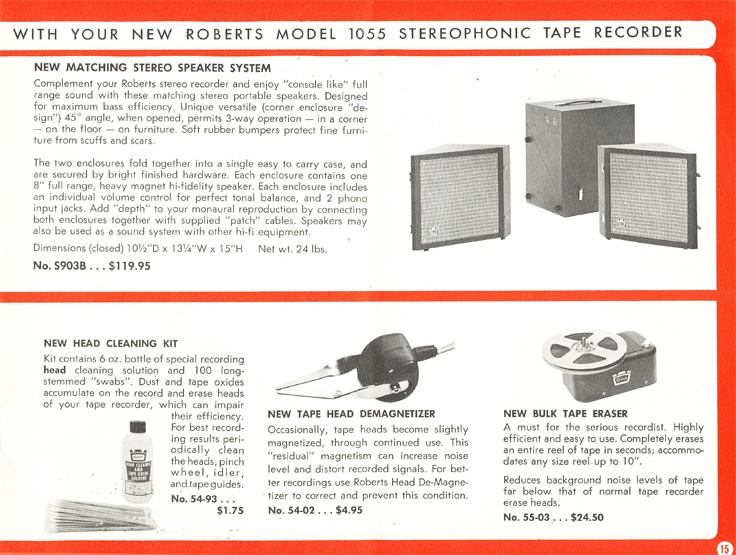

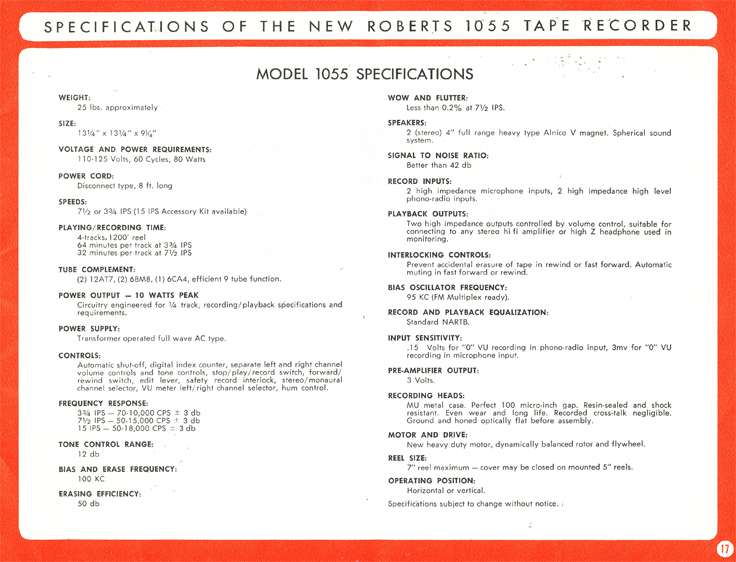
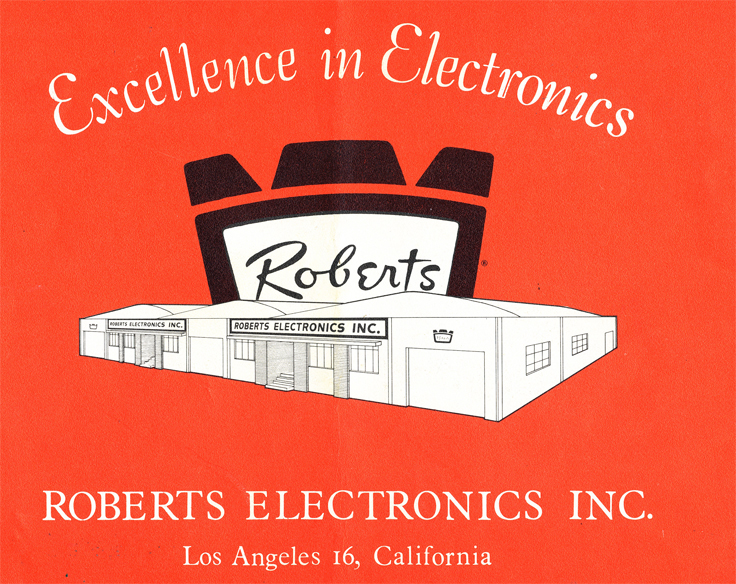
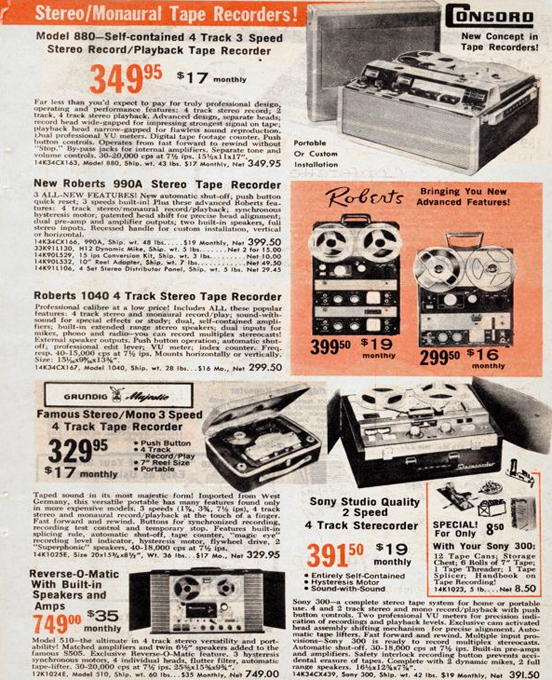
1964 Roberts reel to reel tape recorder ads
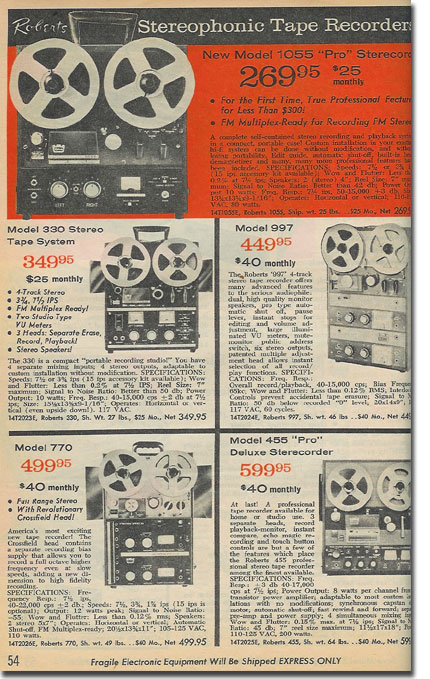
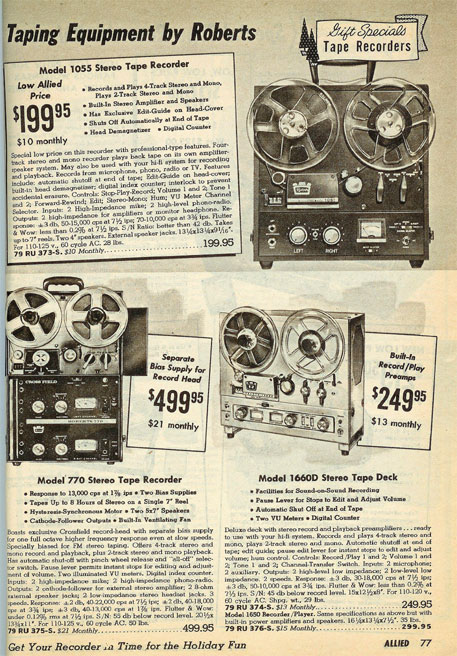

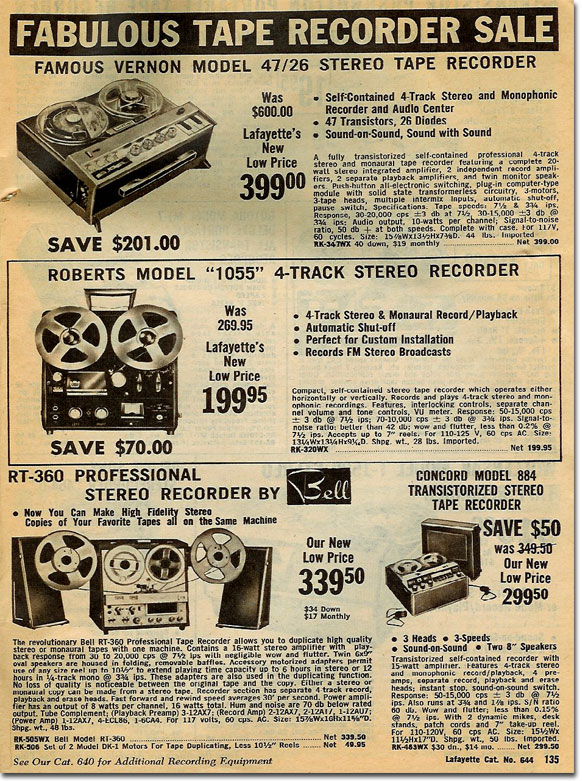

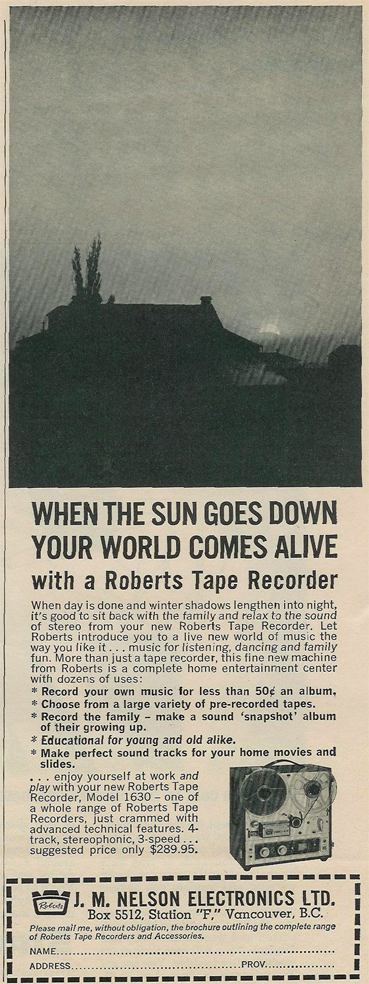


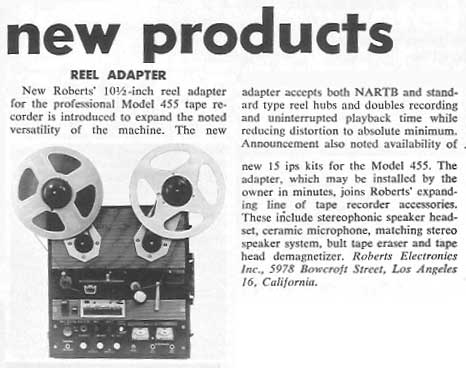
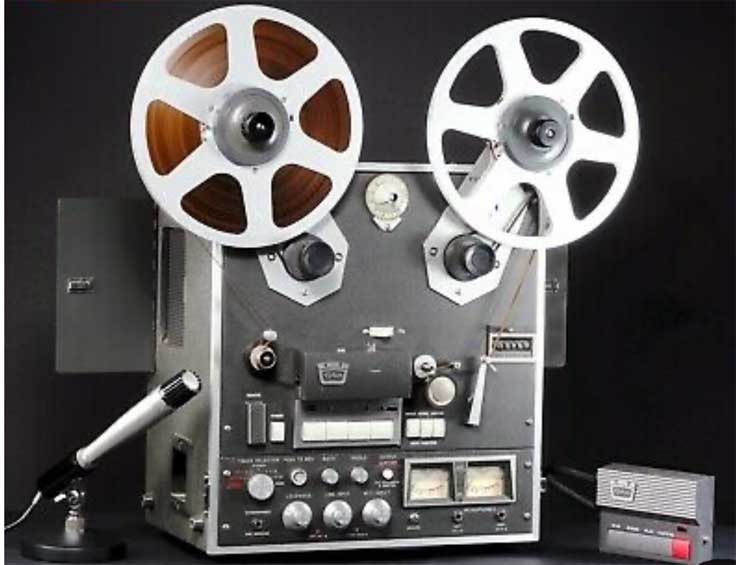
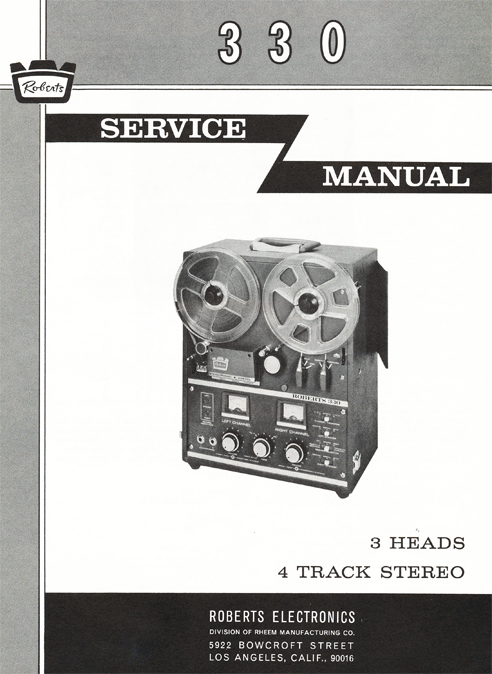

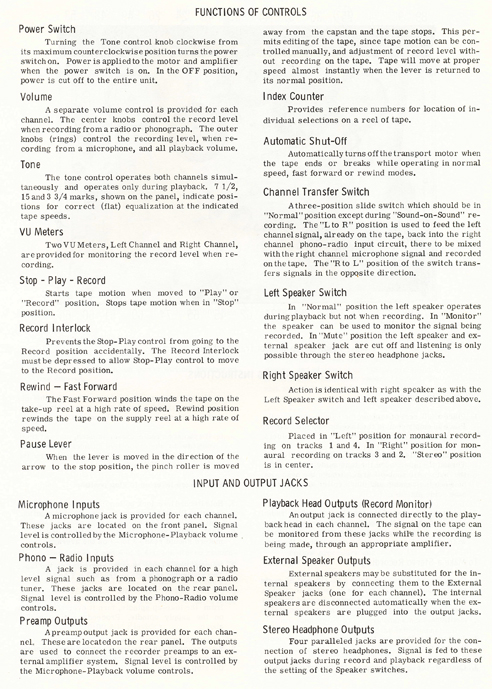


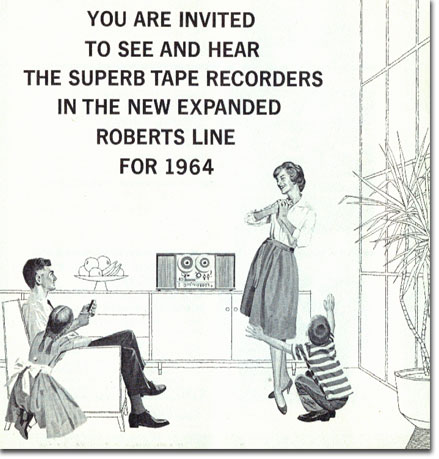

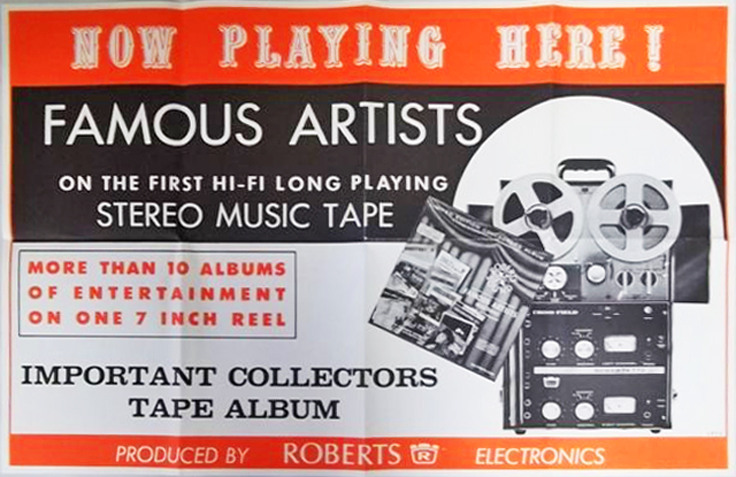
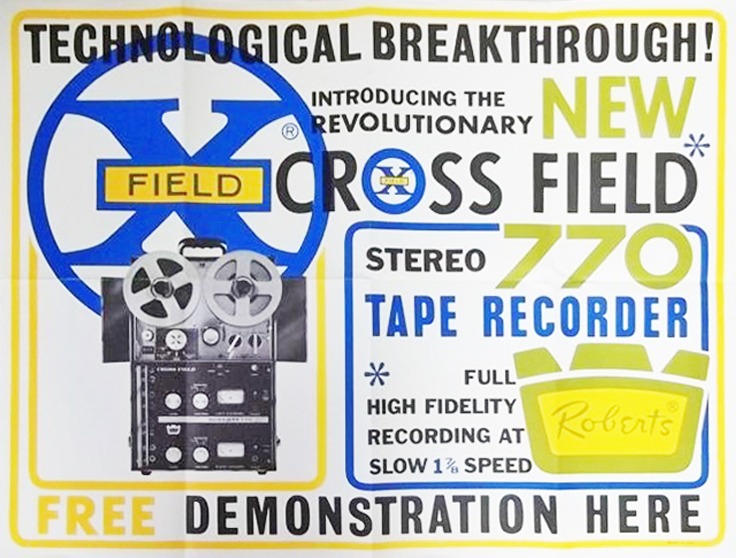

1965 Roberts reel to reel tape recorder ads


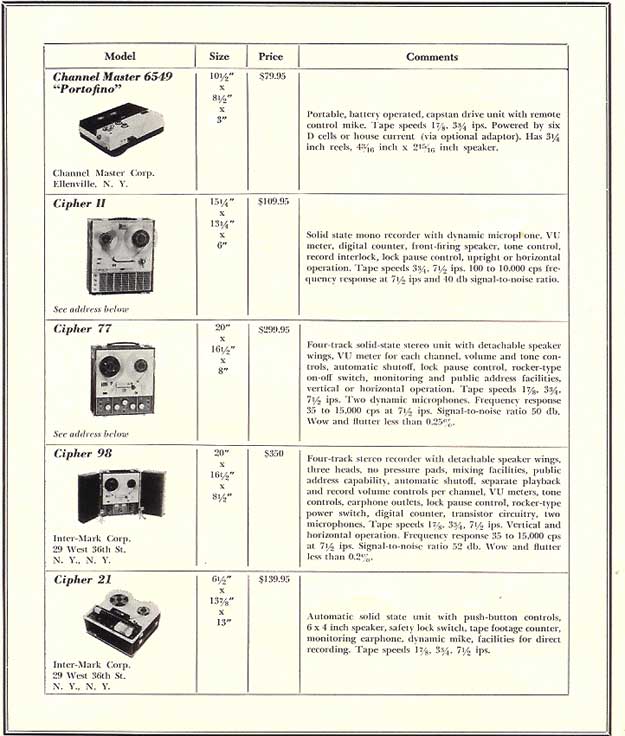
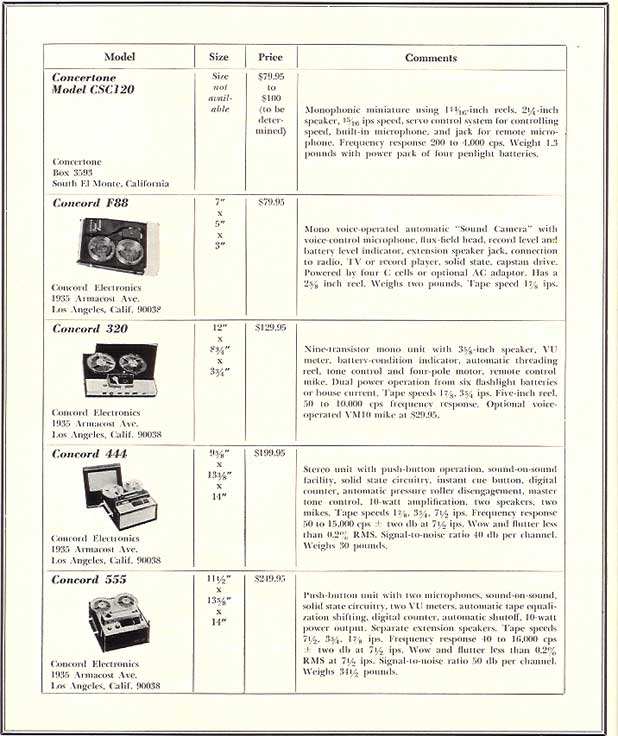
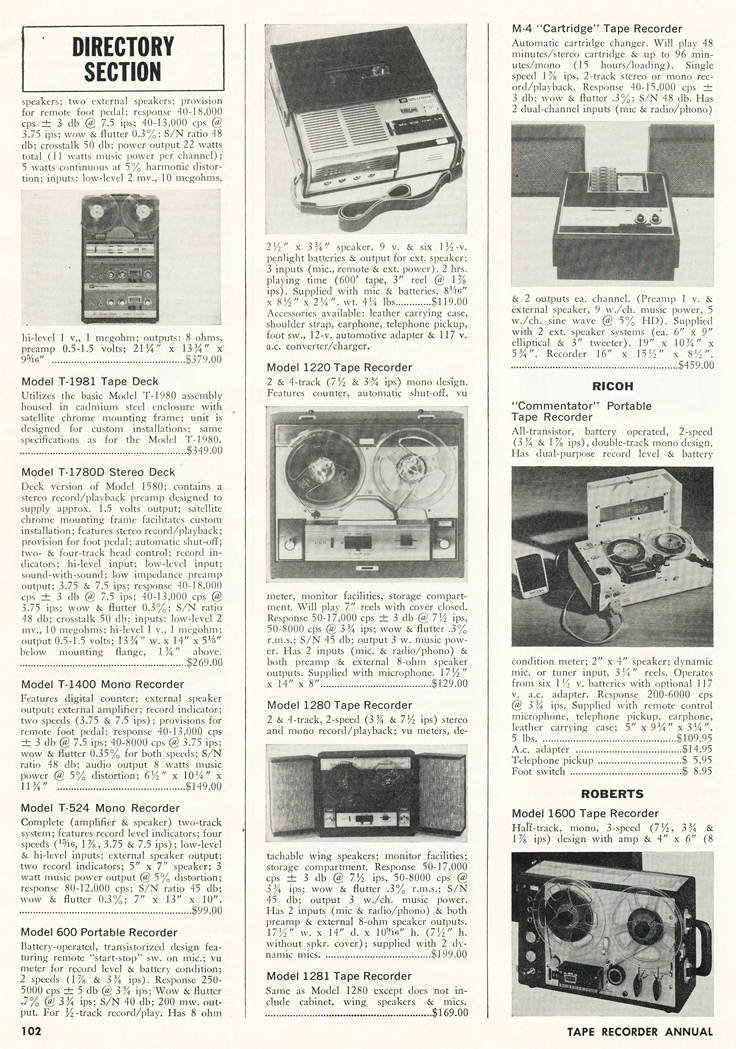
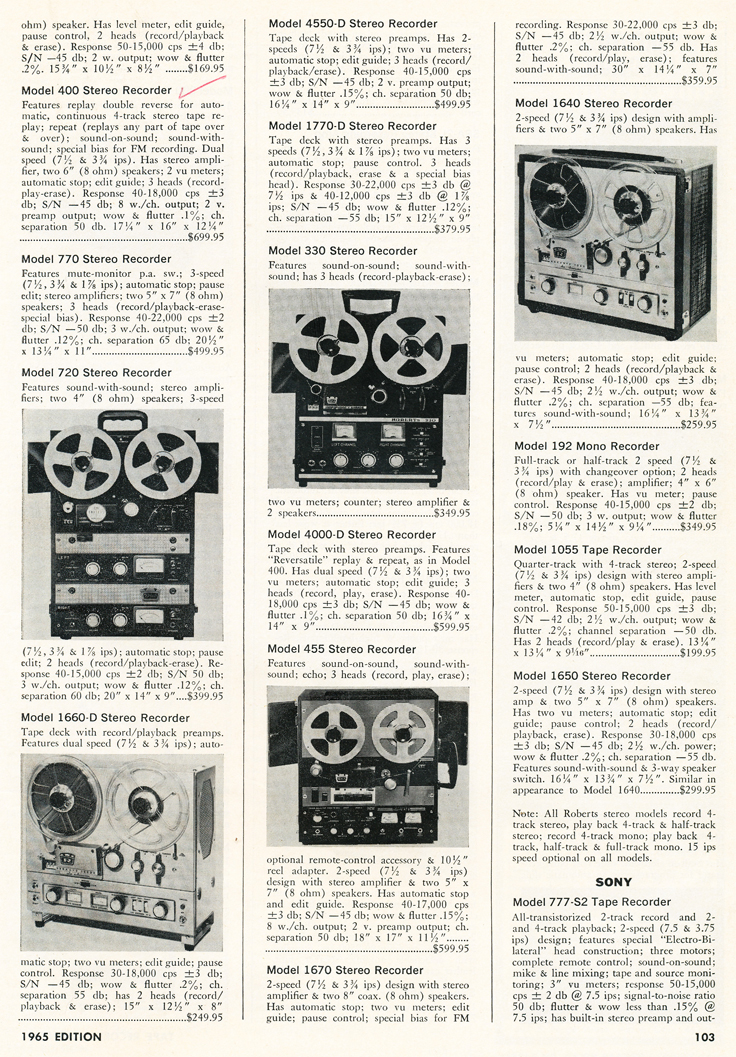
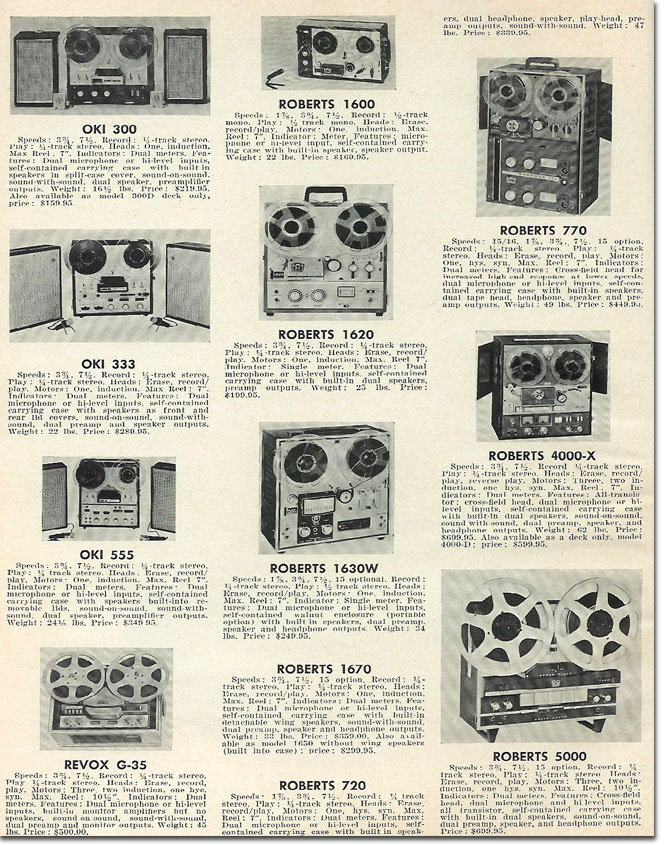
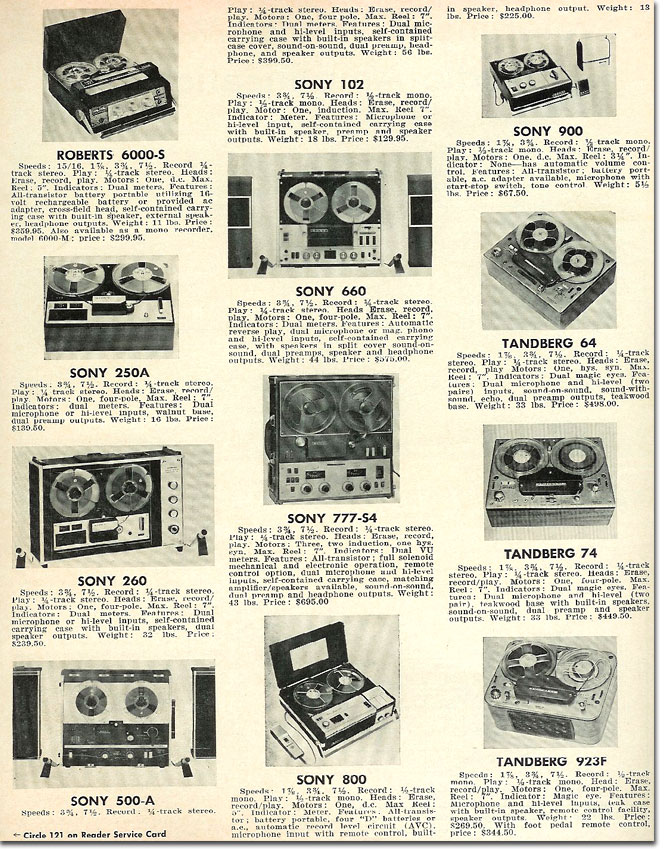

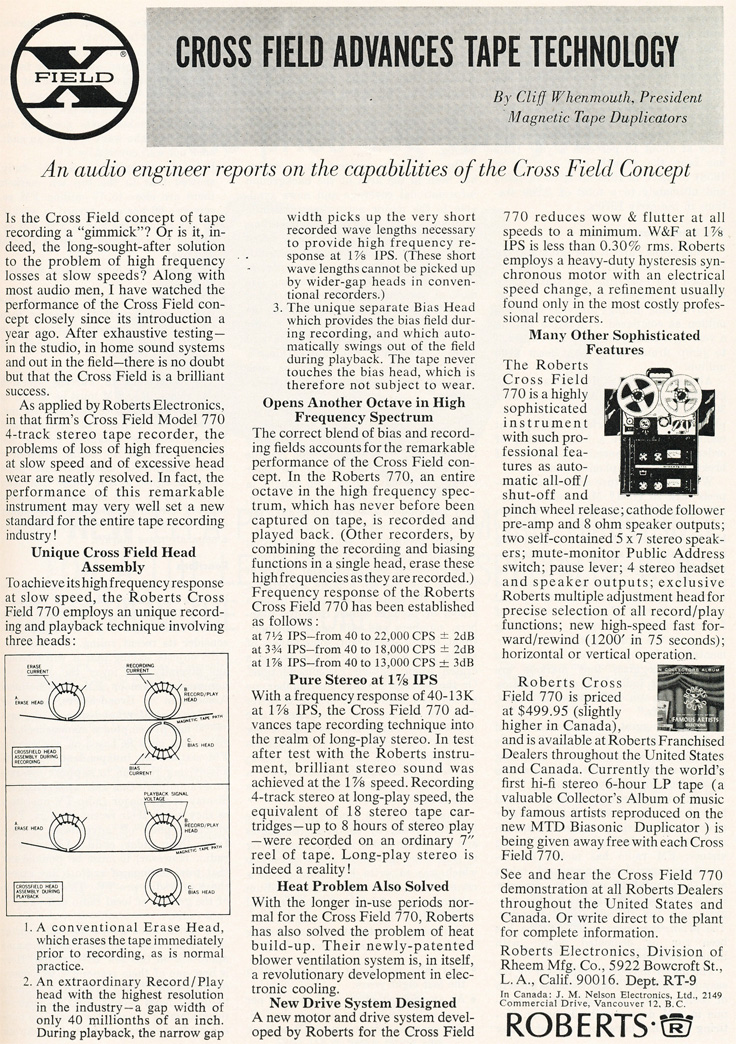

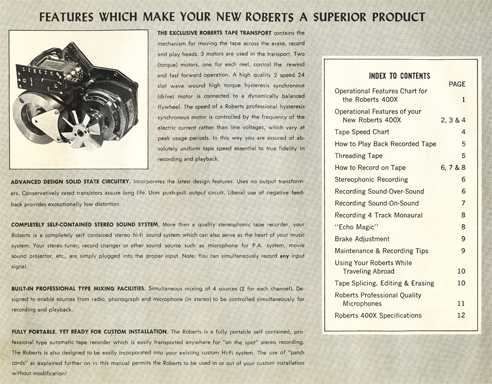
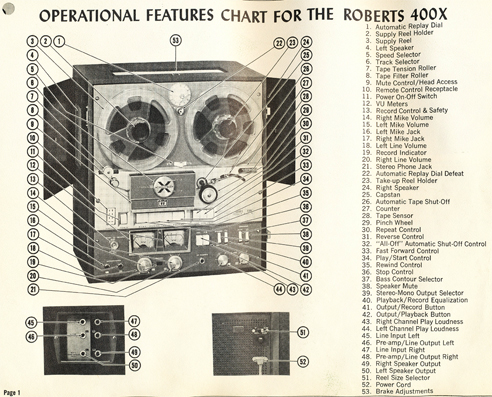


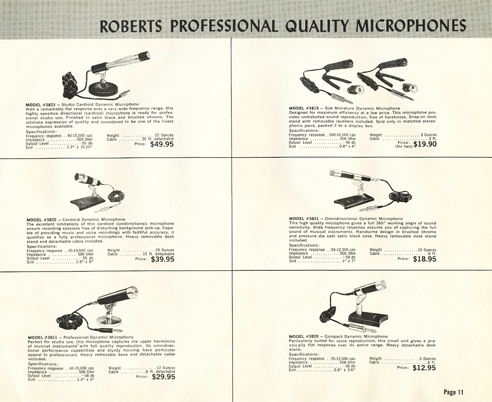

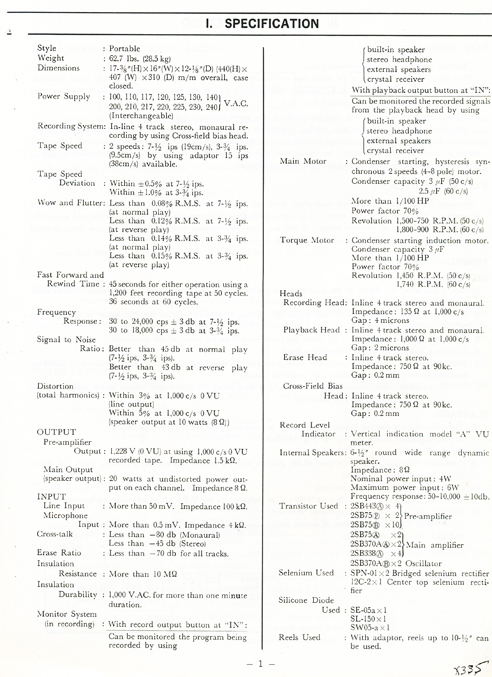

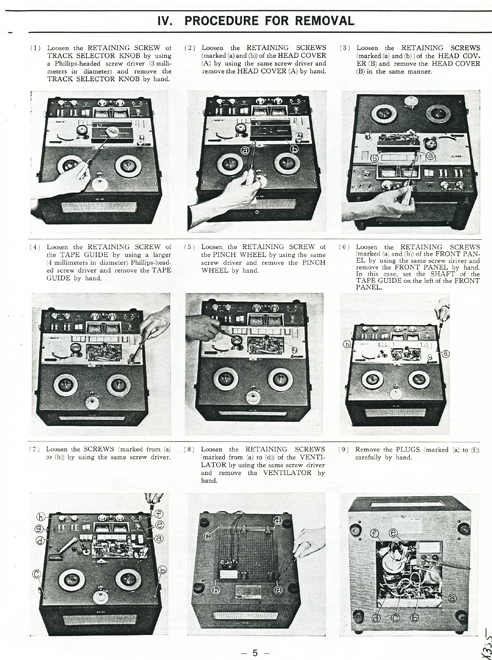
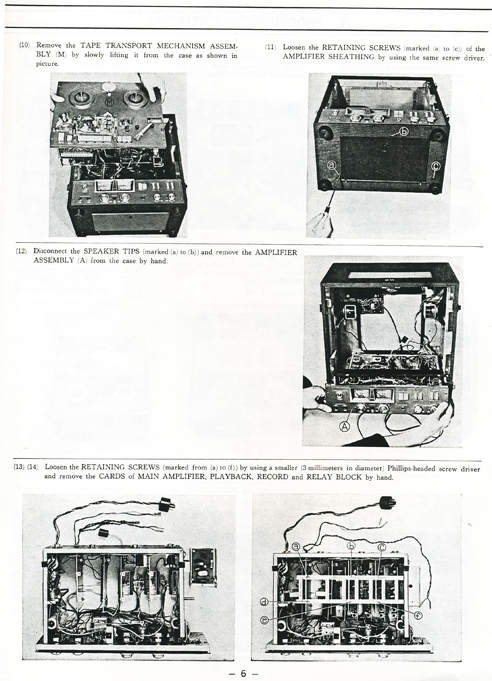
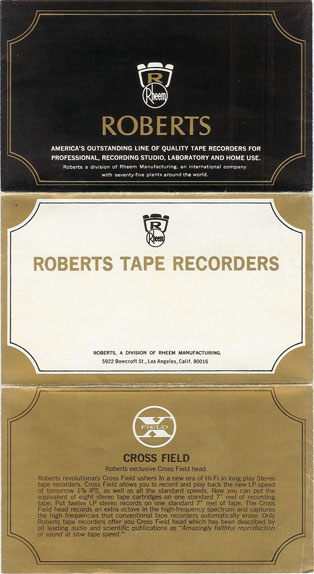

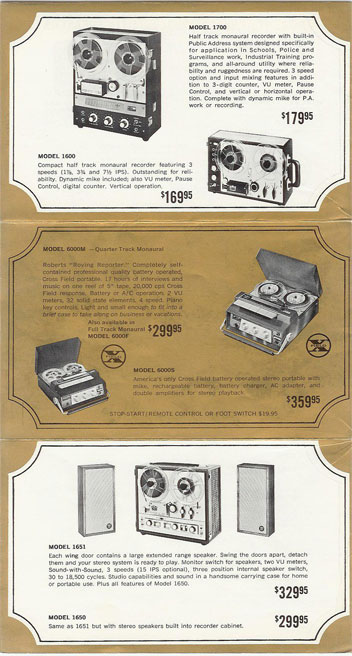
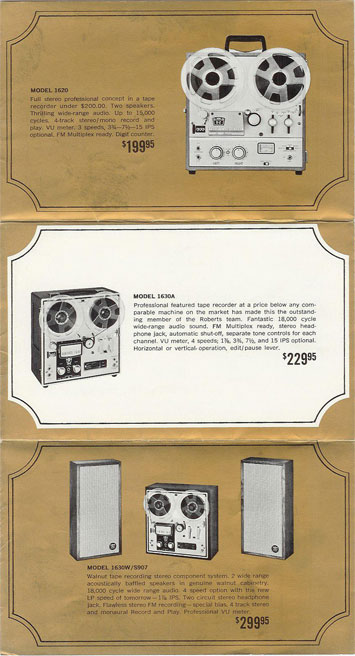


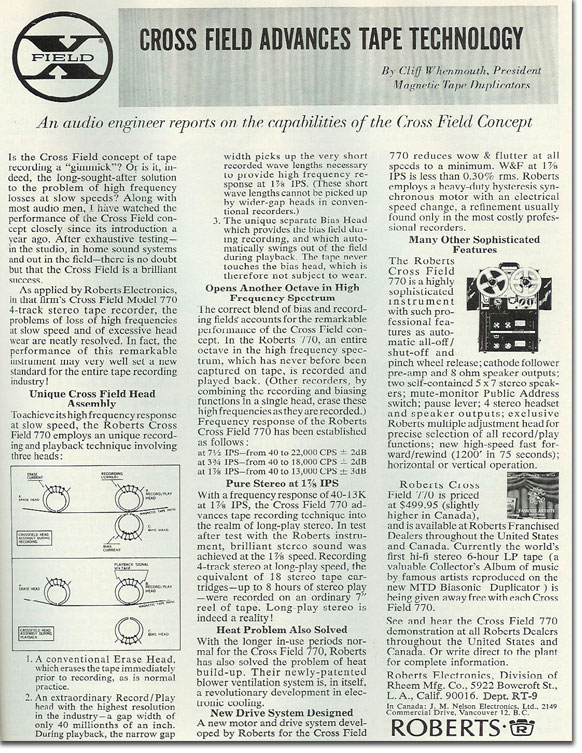
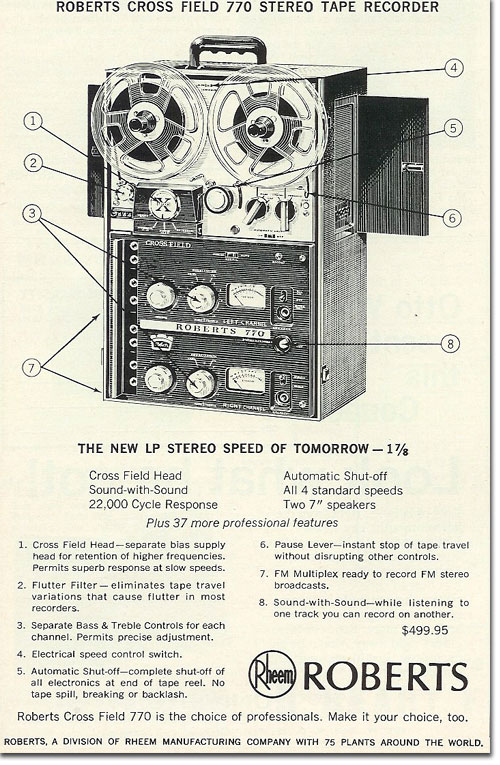
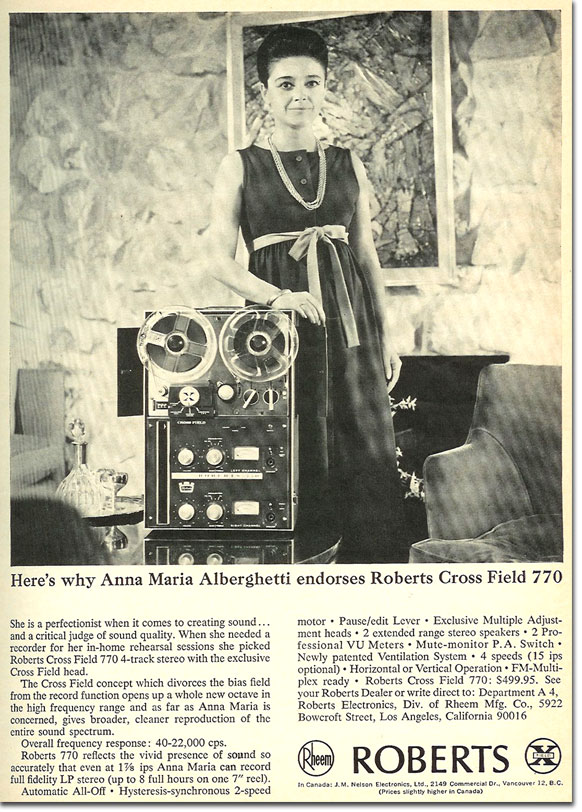
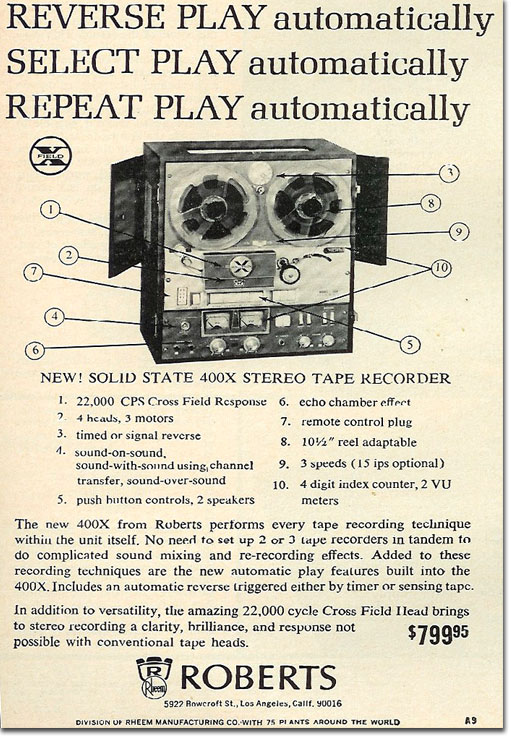
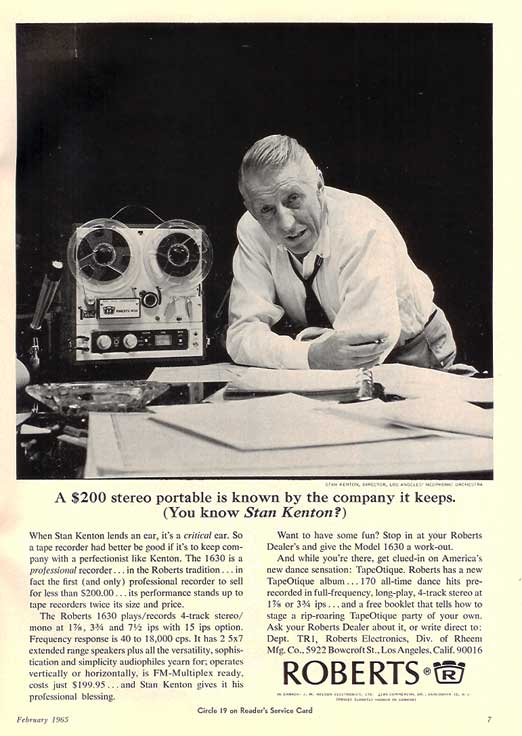

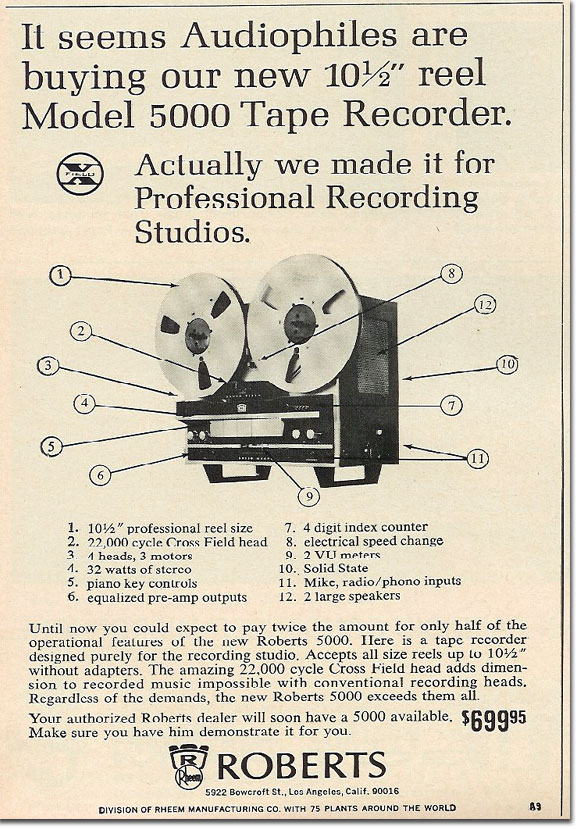


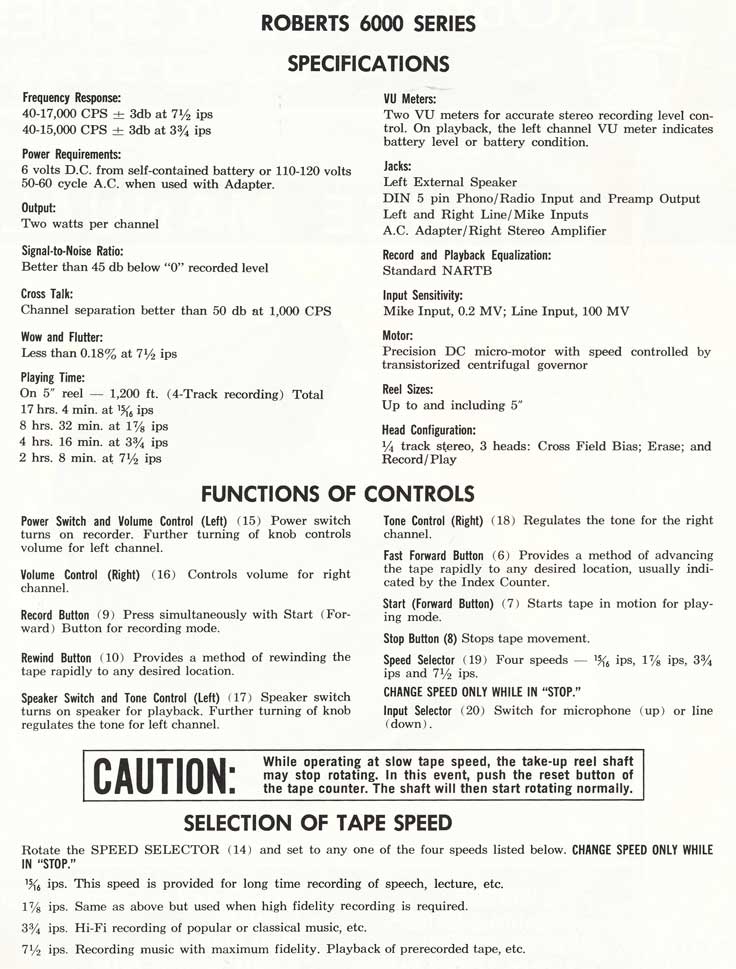

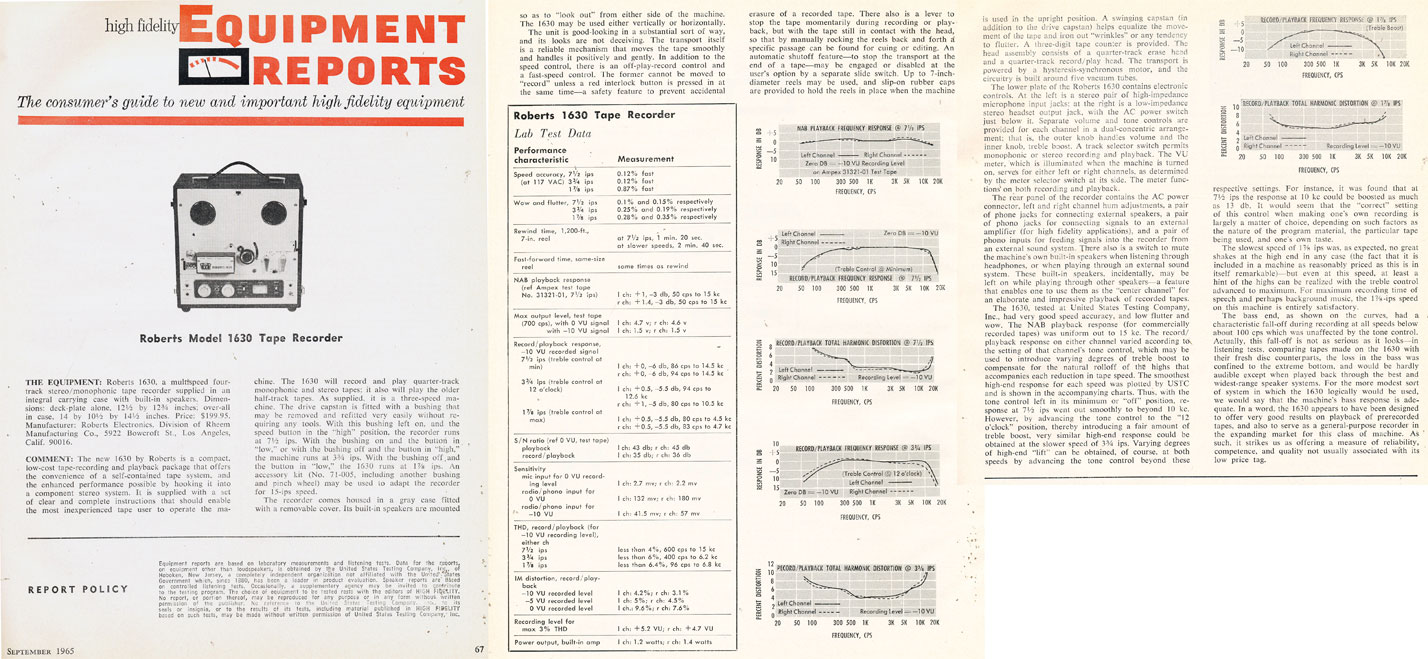
1966 Roberts reel to reel tape recorder ads
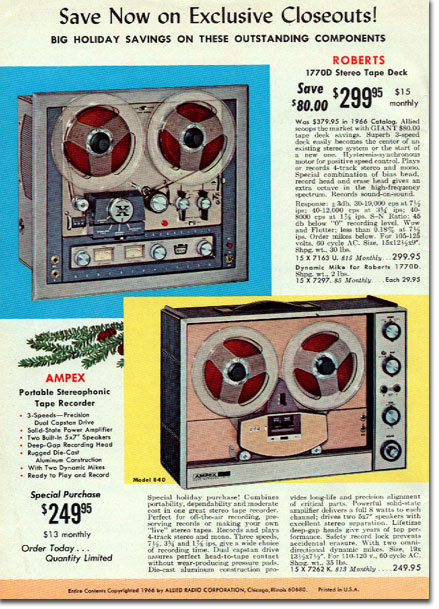
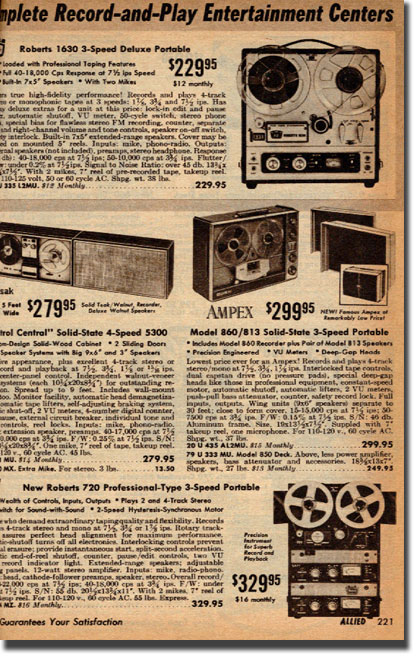
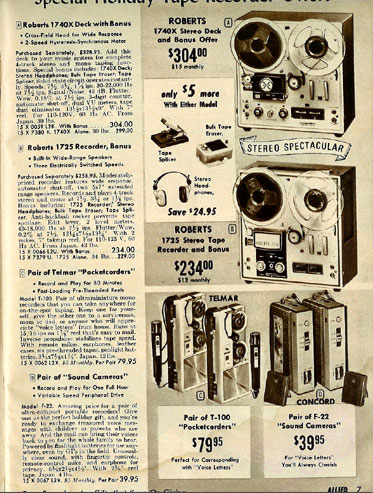

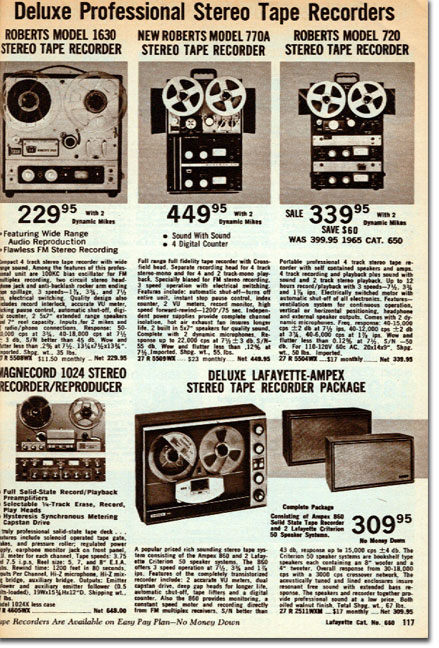

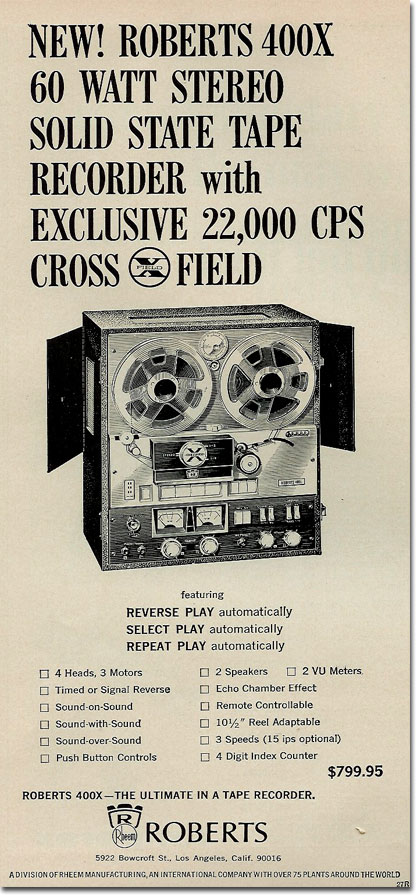

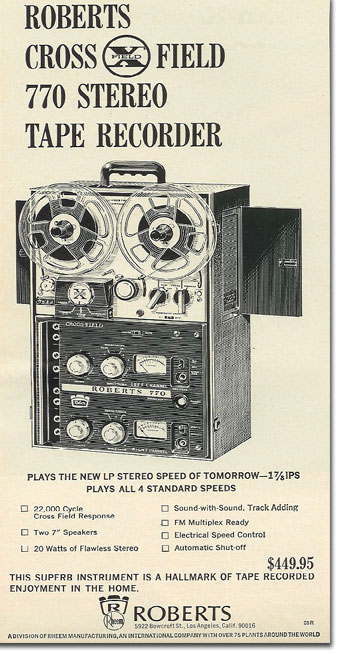
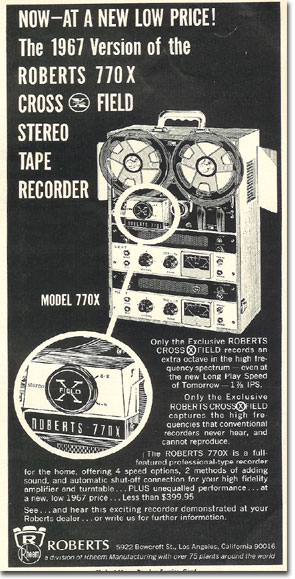

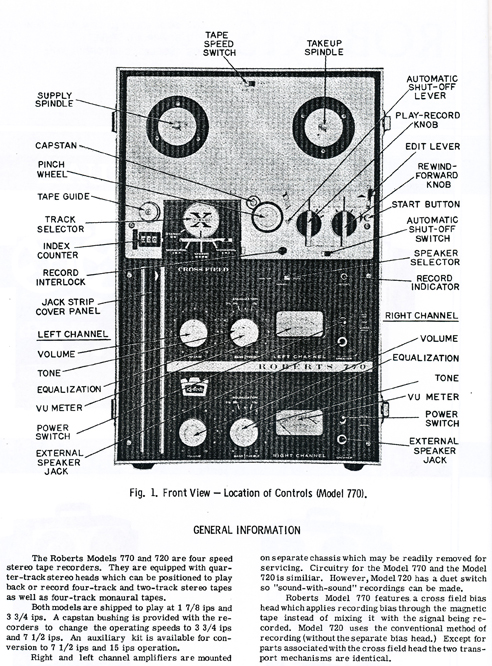
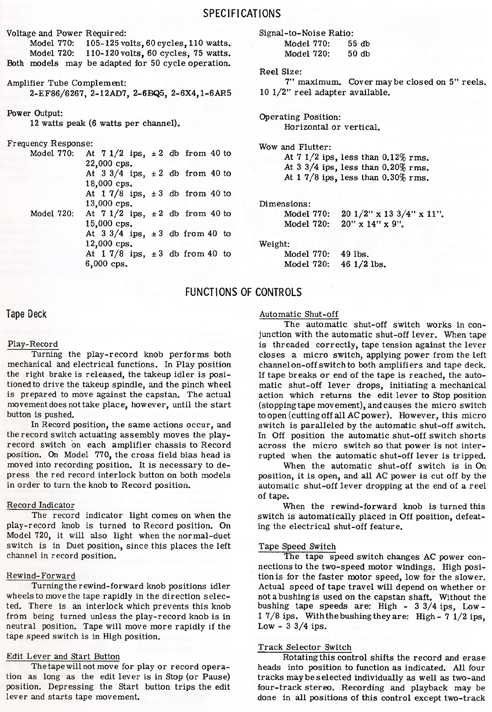
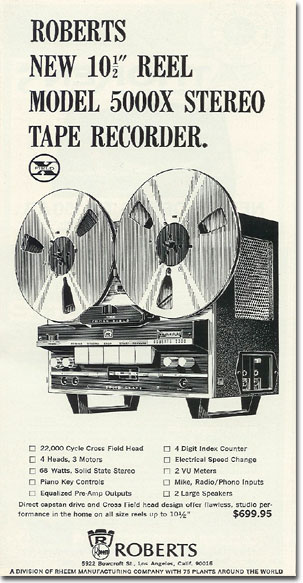



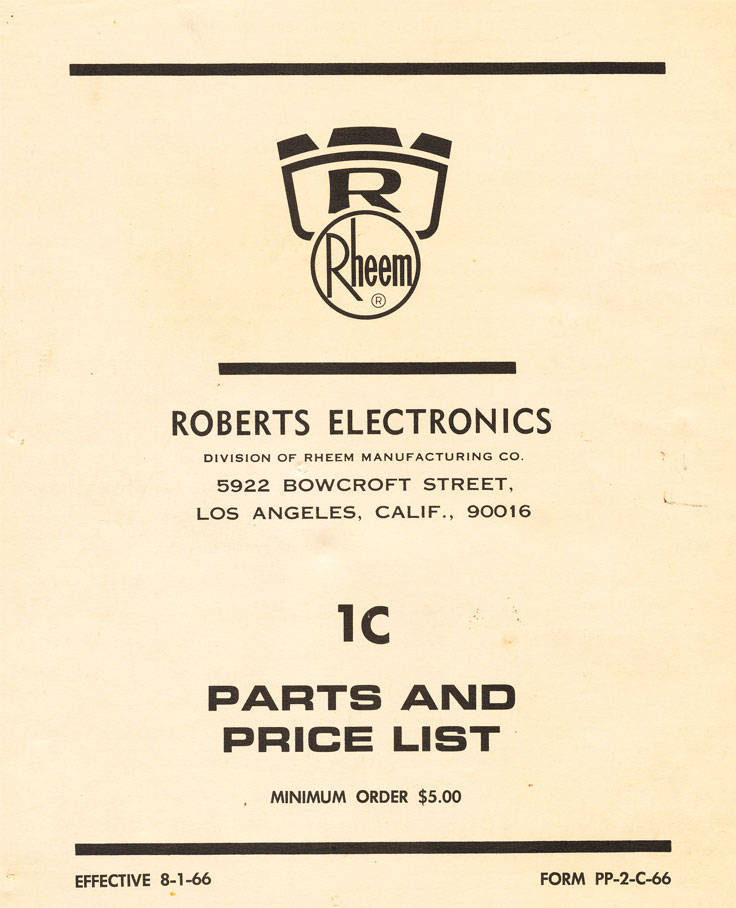
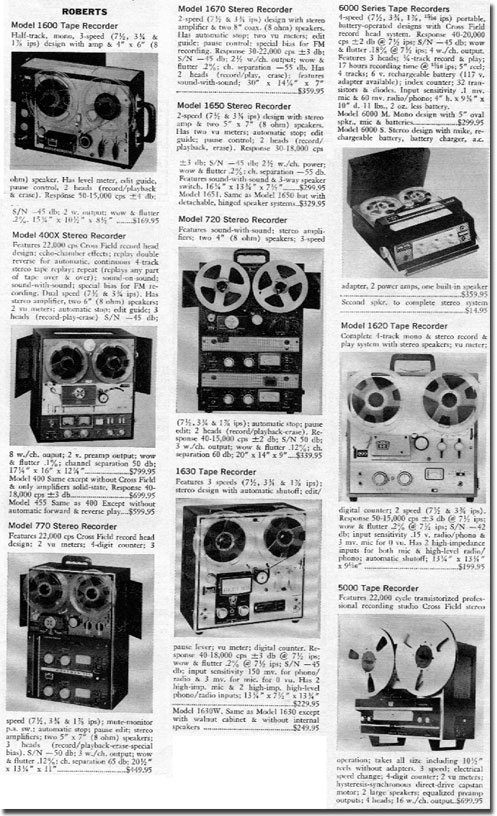

1967 Roberts reel to reel tape recorder ads

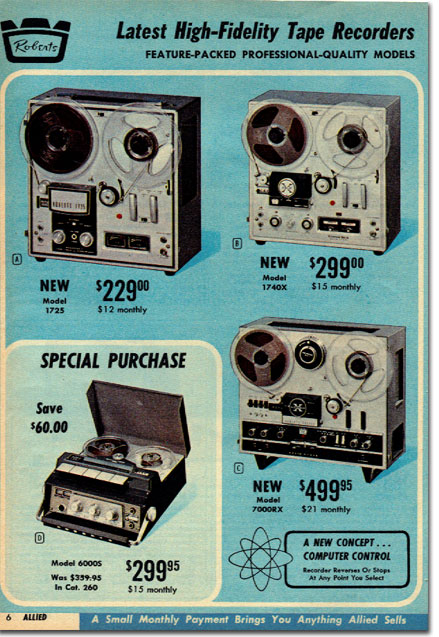



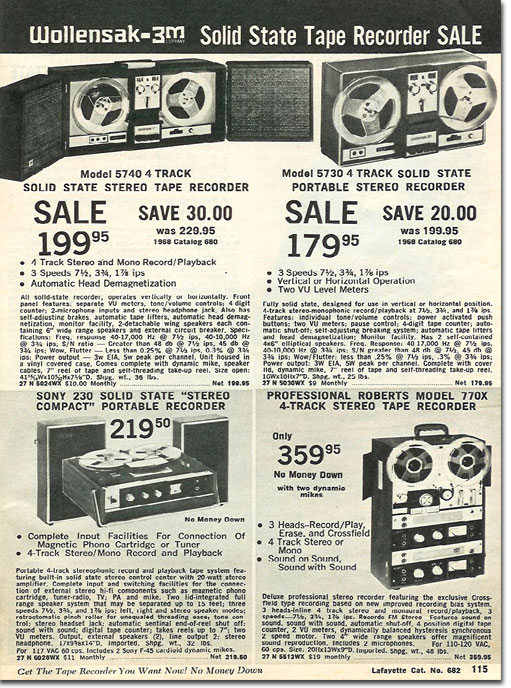

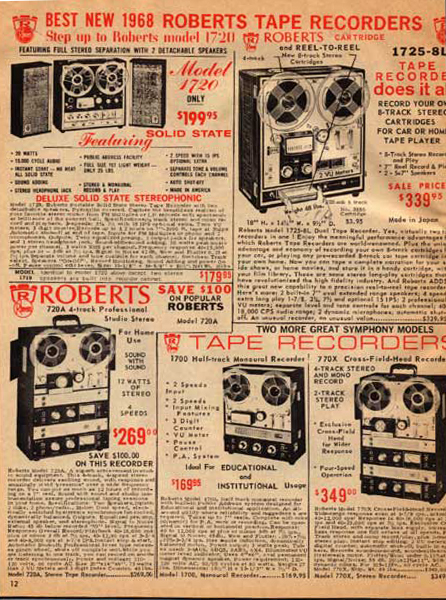


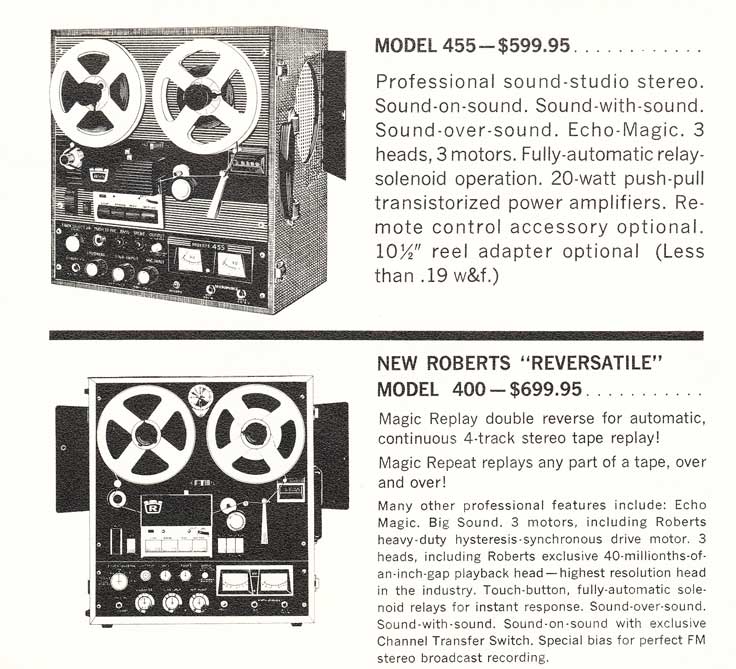
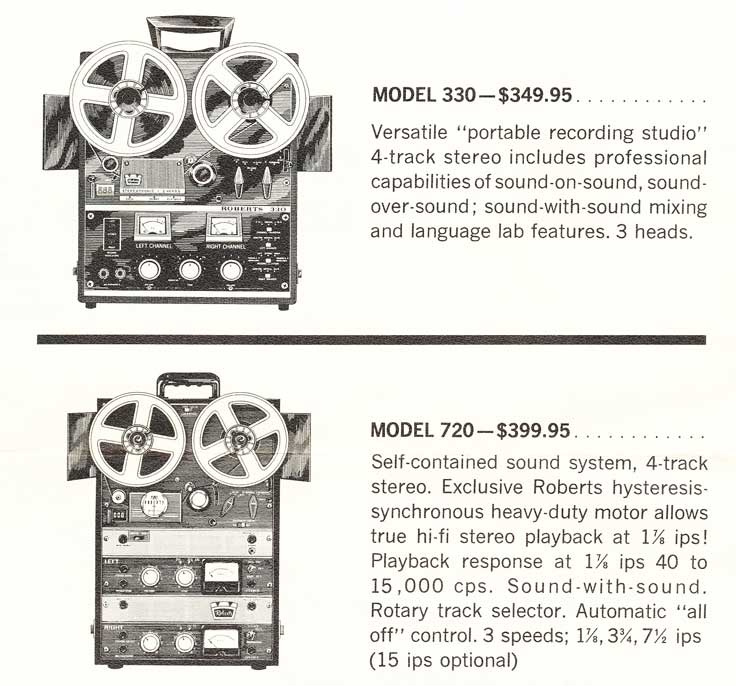
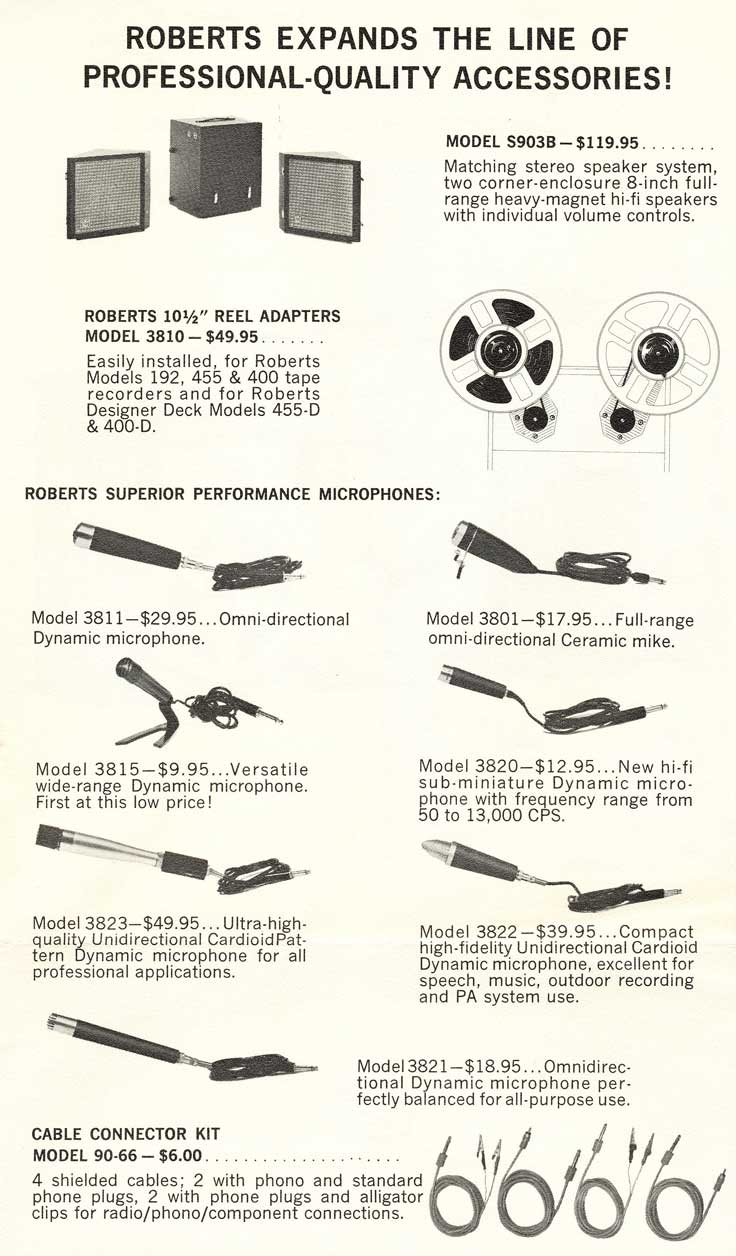
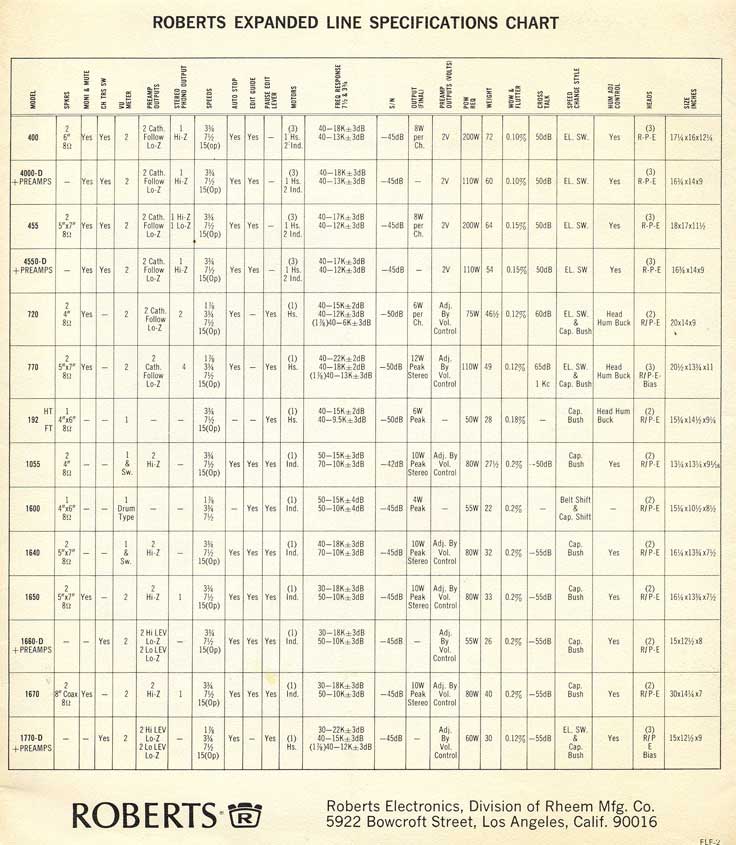
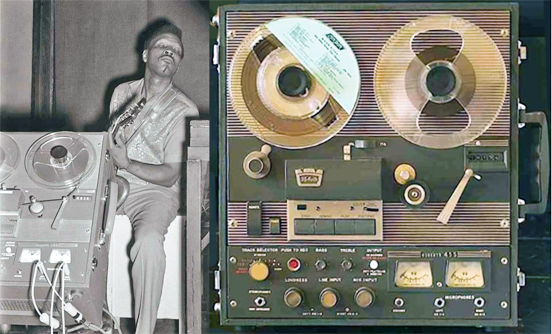
1968 Roberts reel to reel tape recorder ads
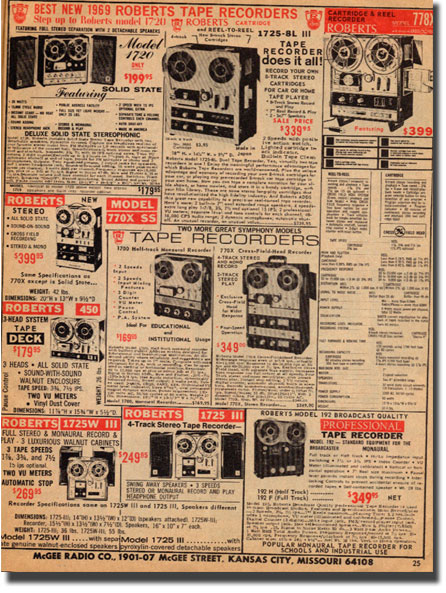

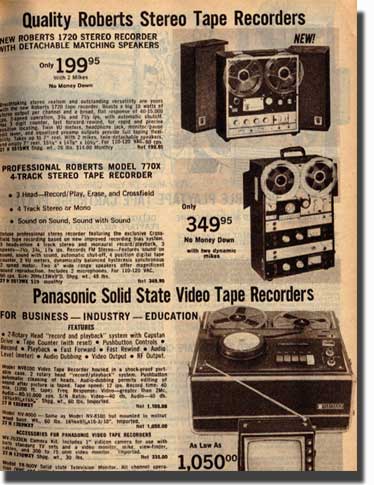
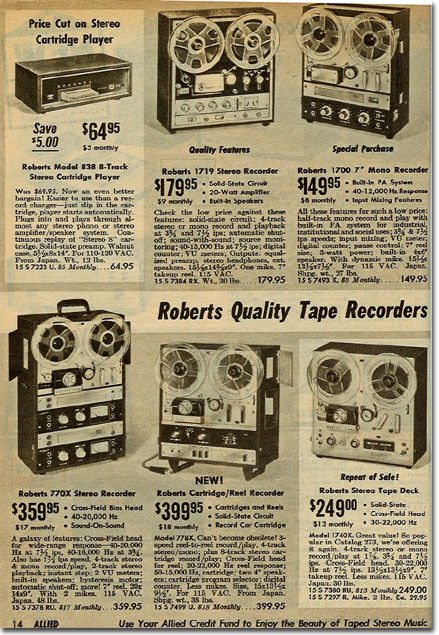
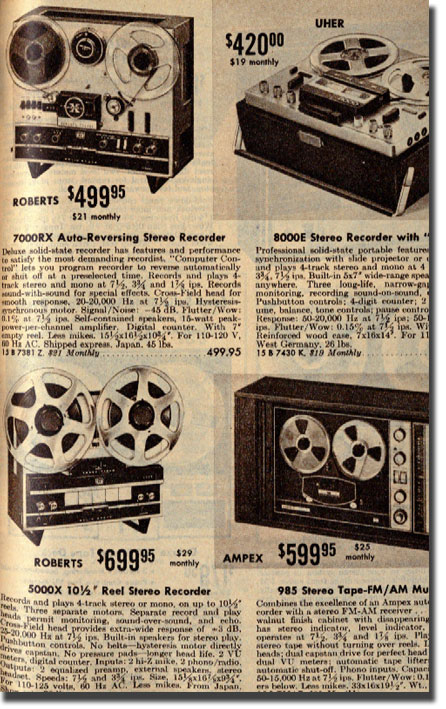
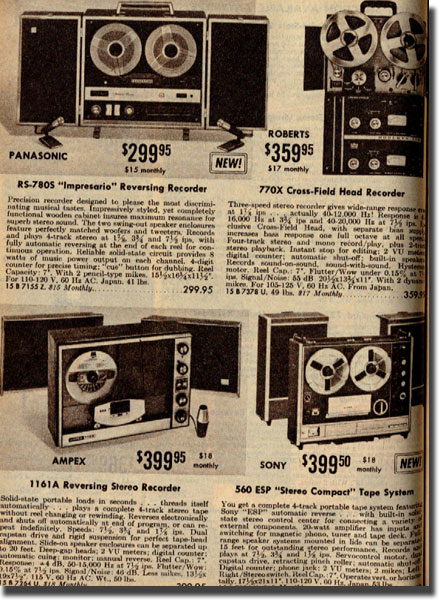
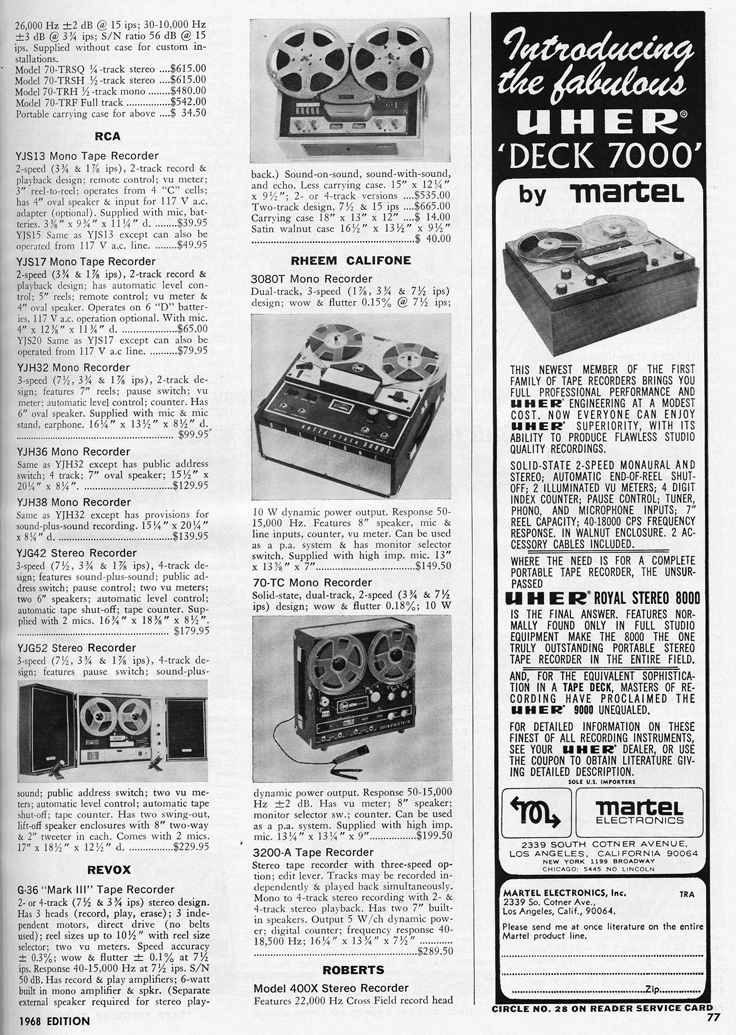

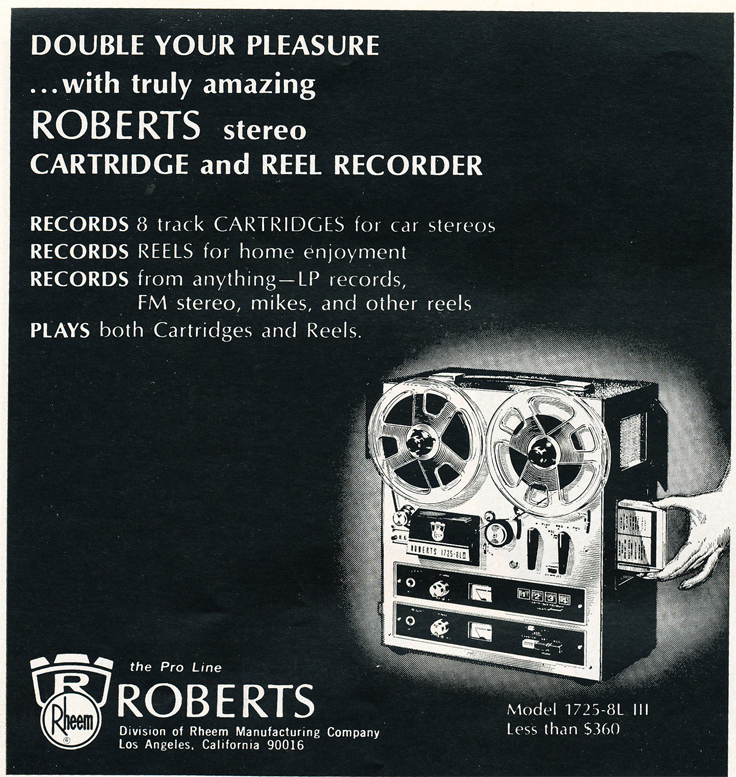

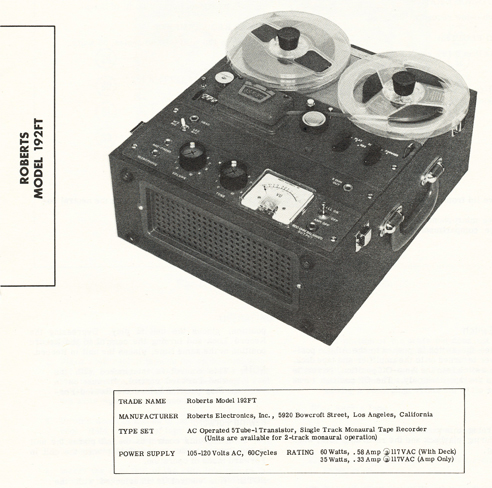
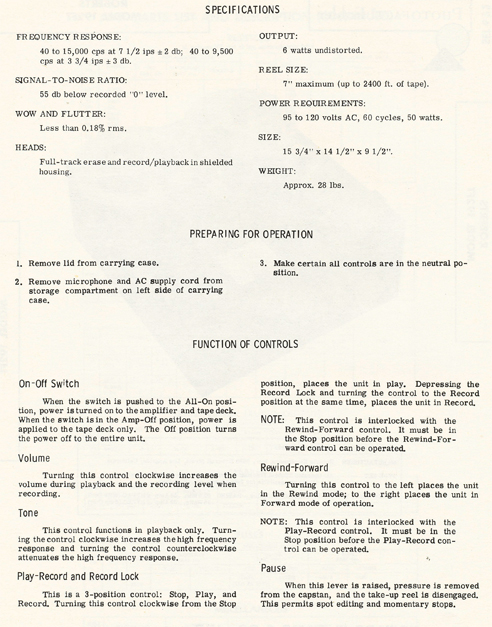
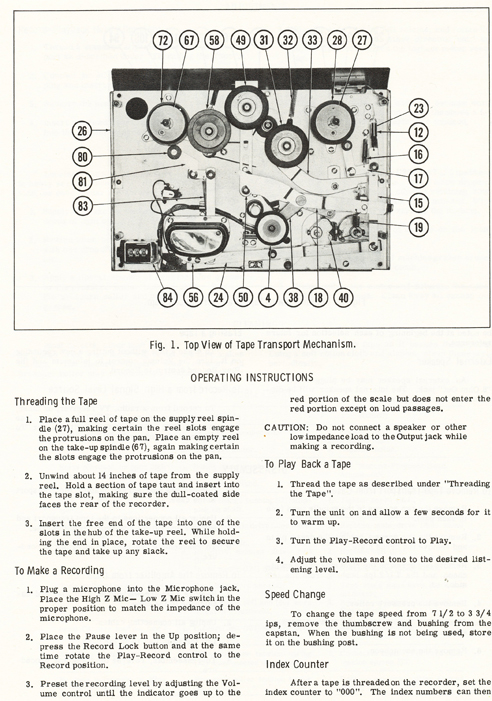
1969 Roberts reel to reel tape recorder ads
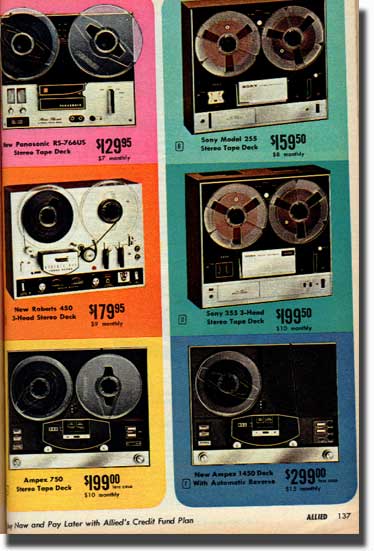
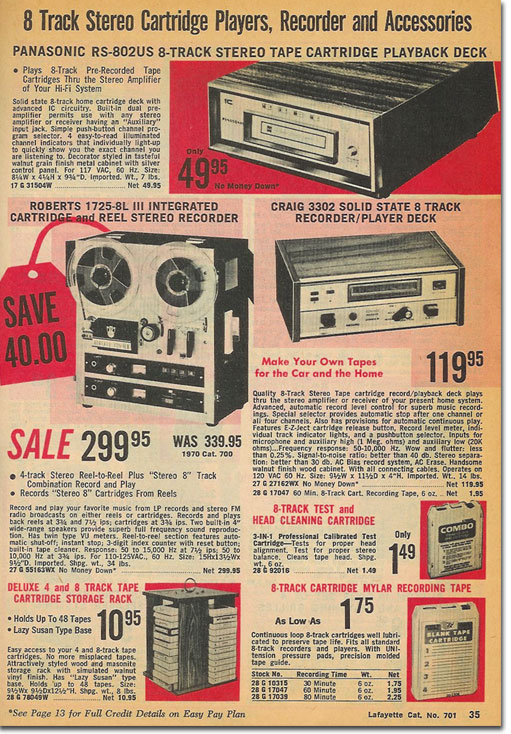

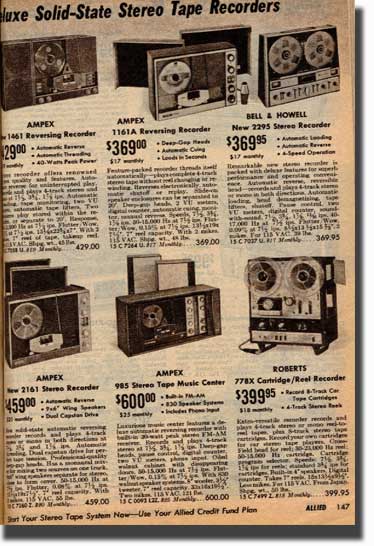
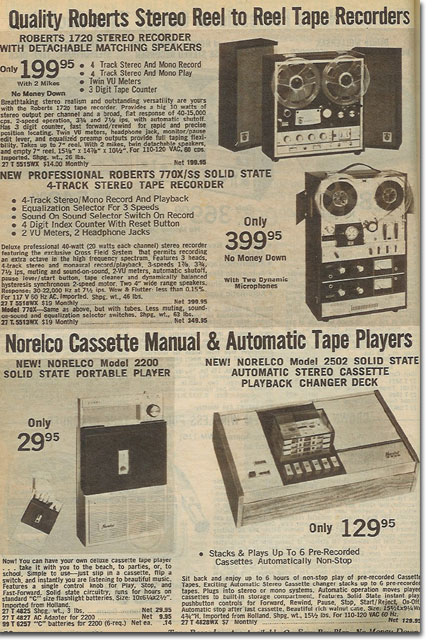
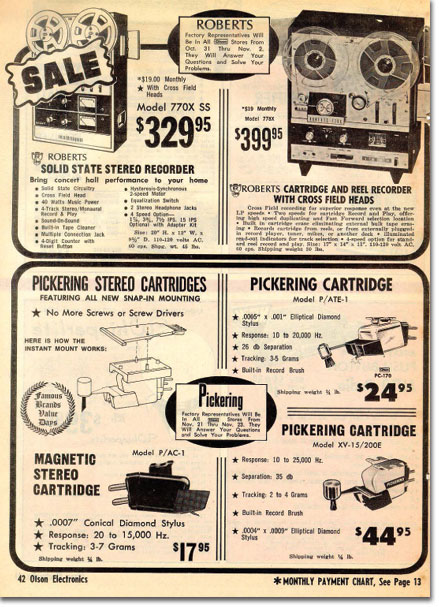

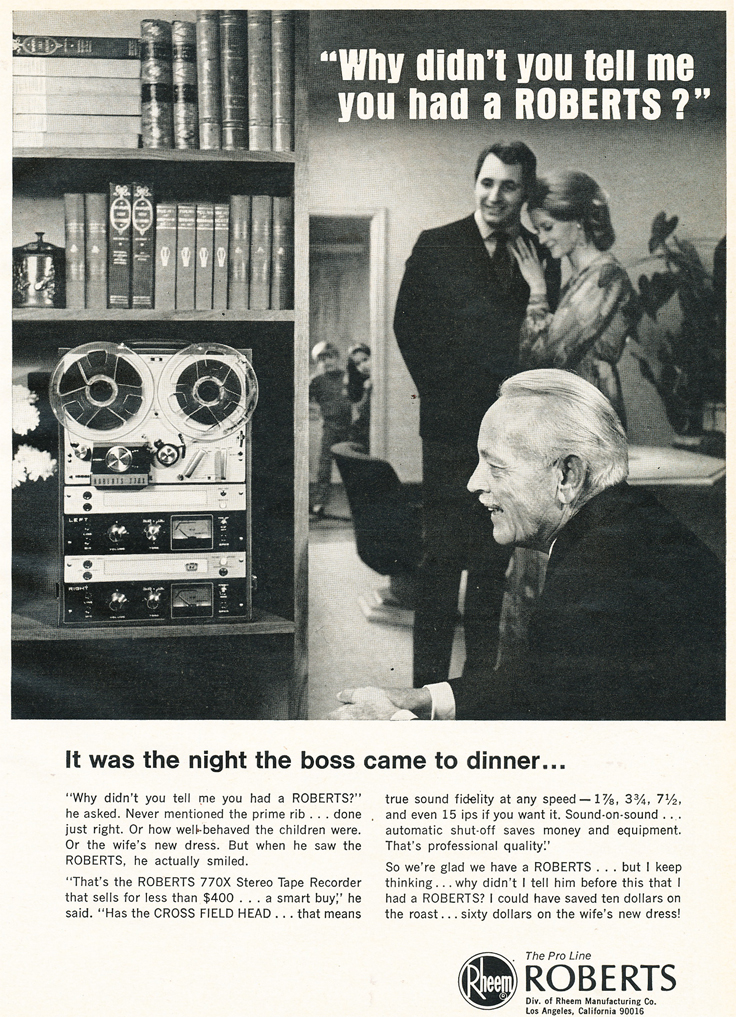
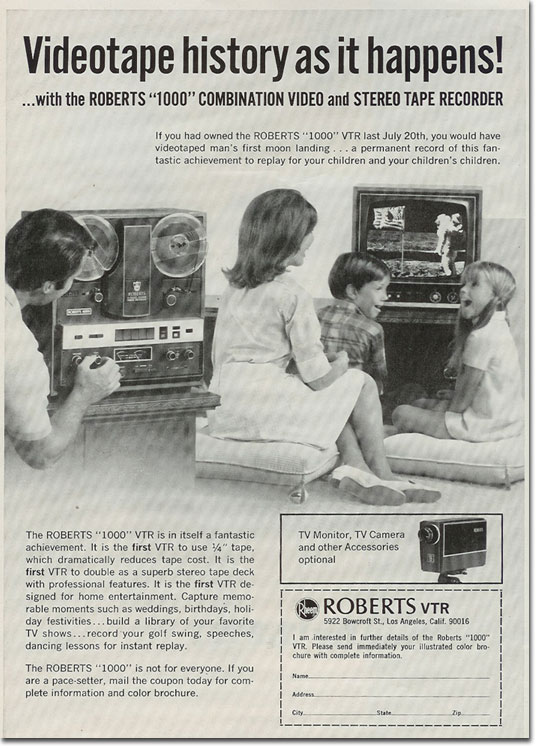

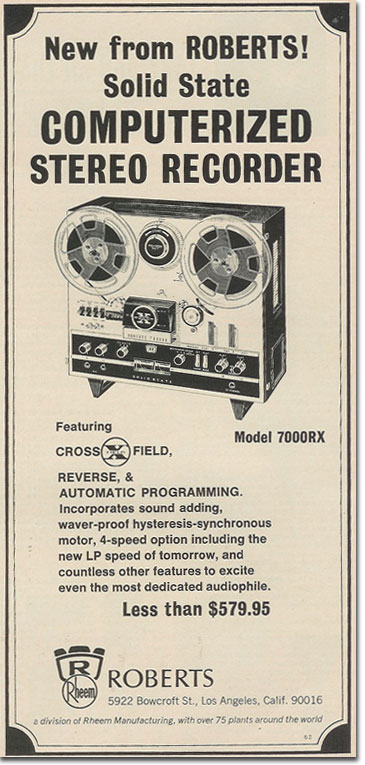


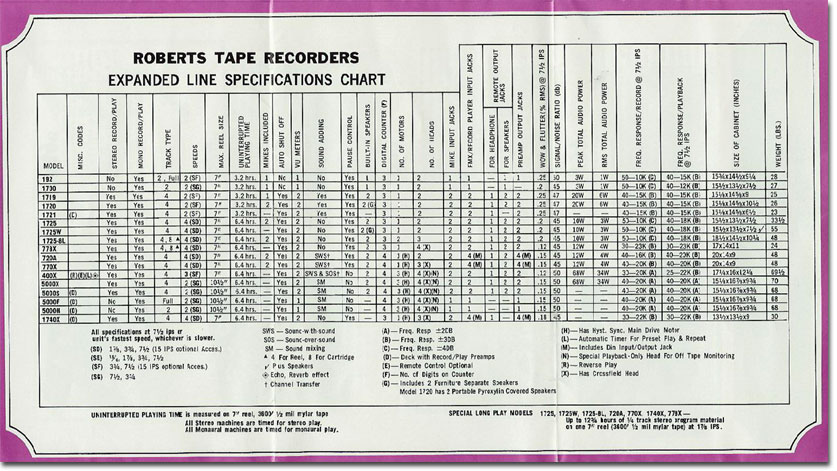

1970 Roberts reel to reel tape recorder ads
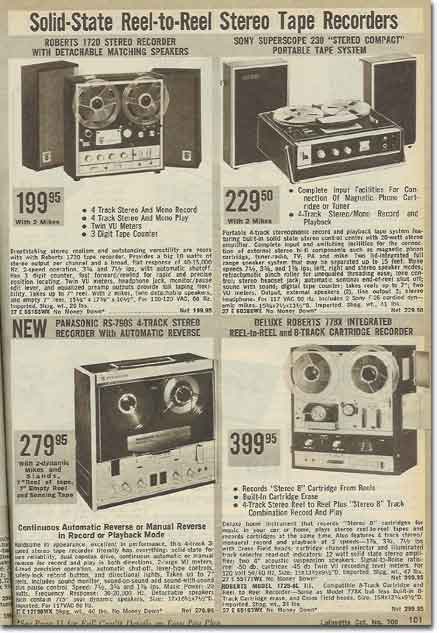

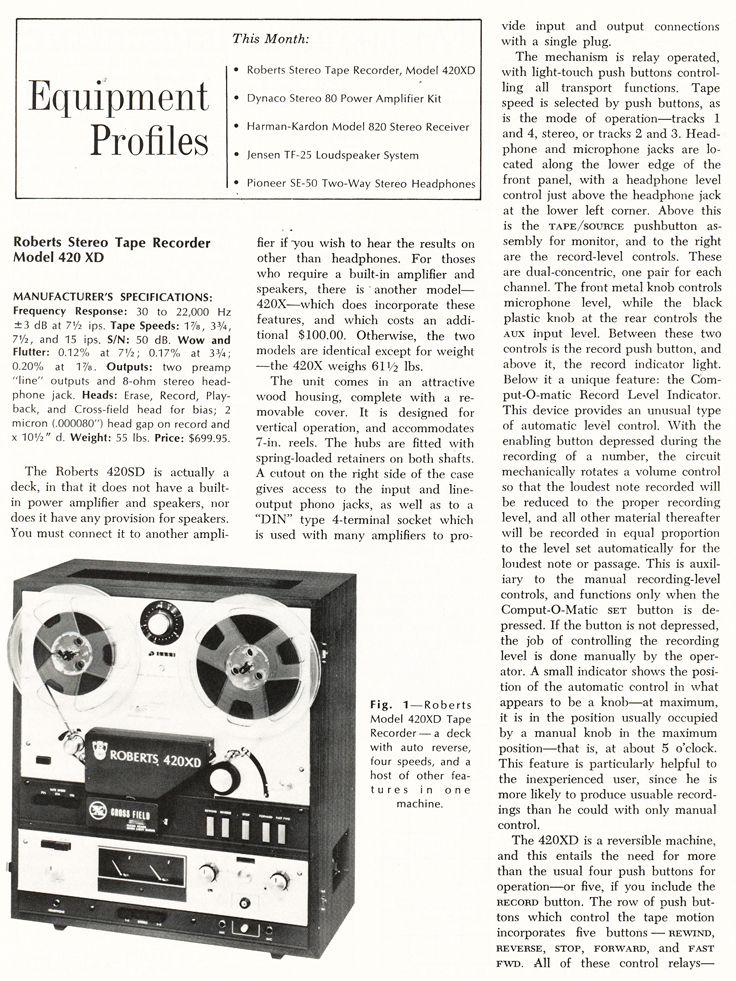
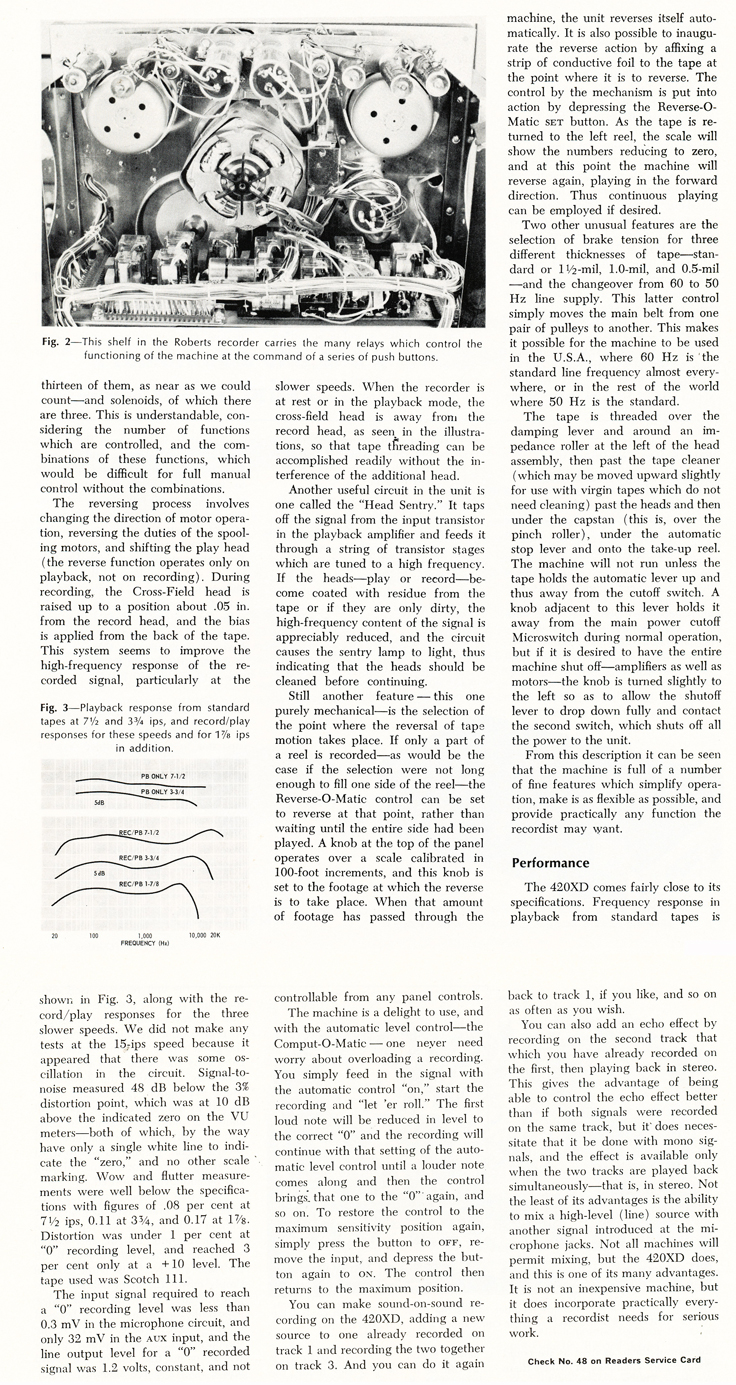
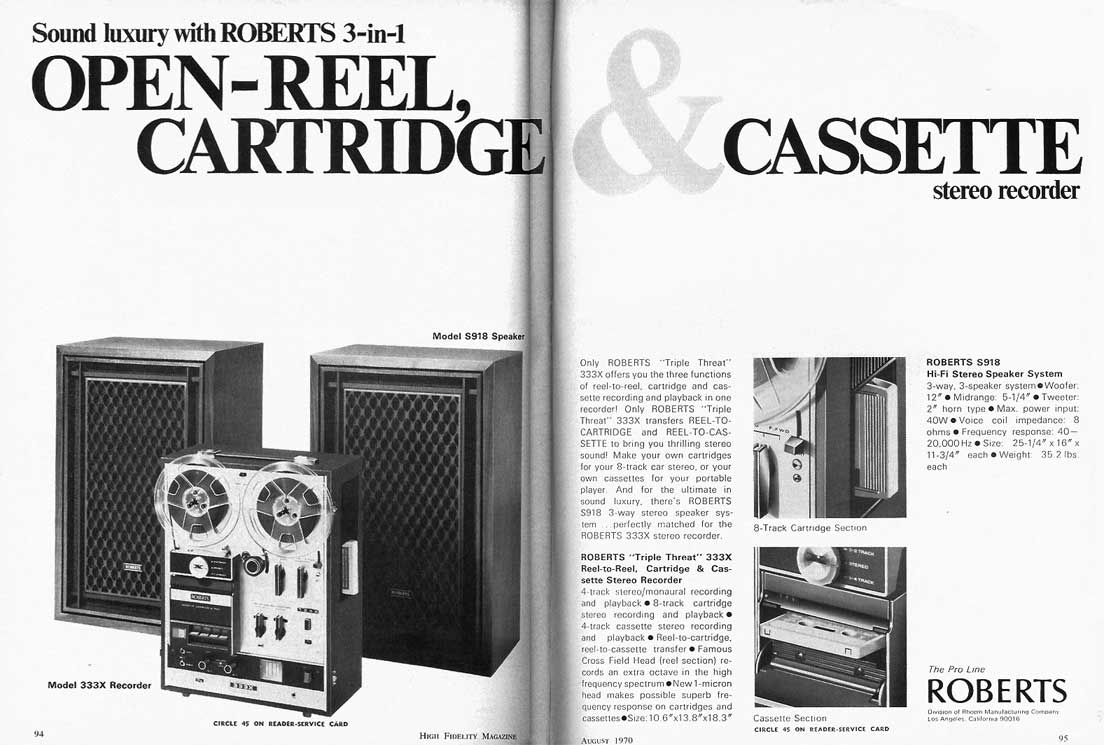

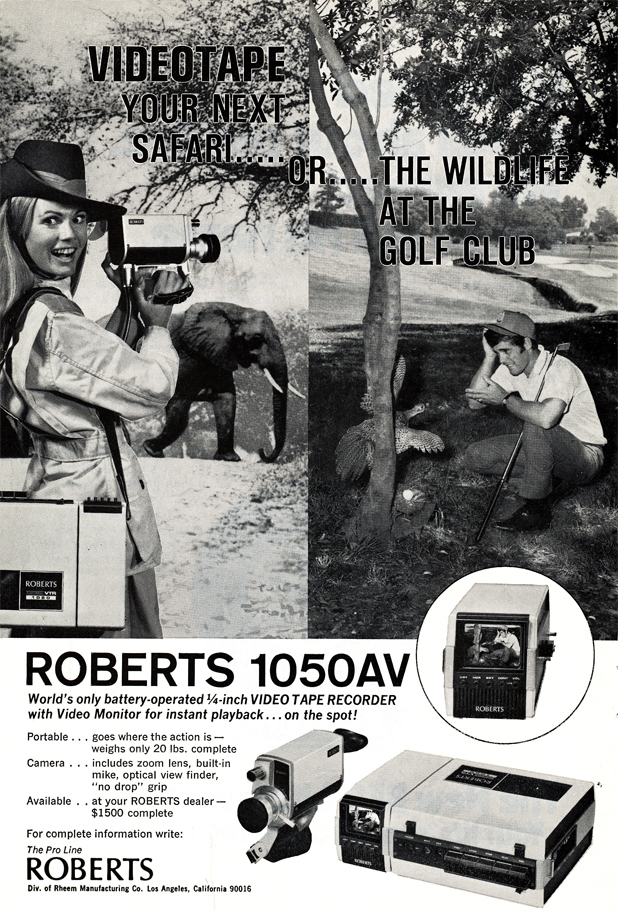
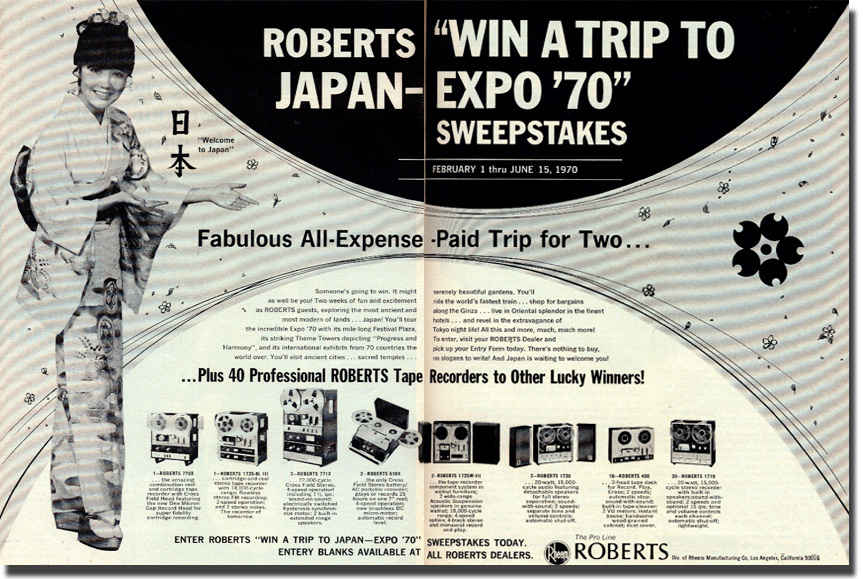

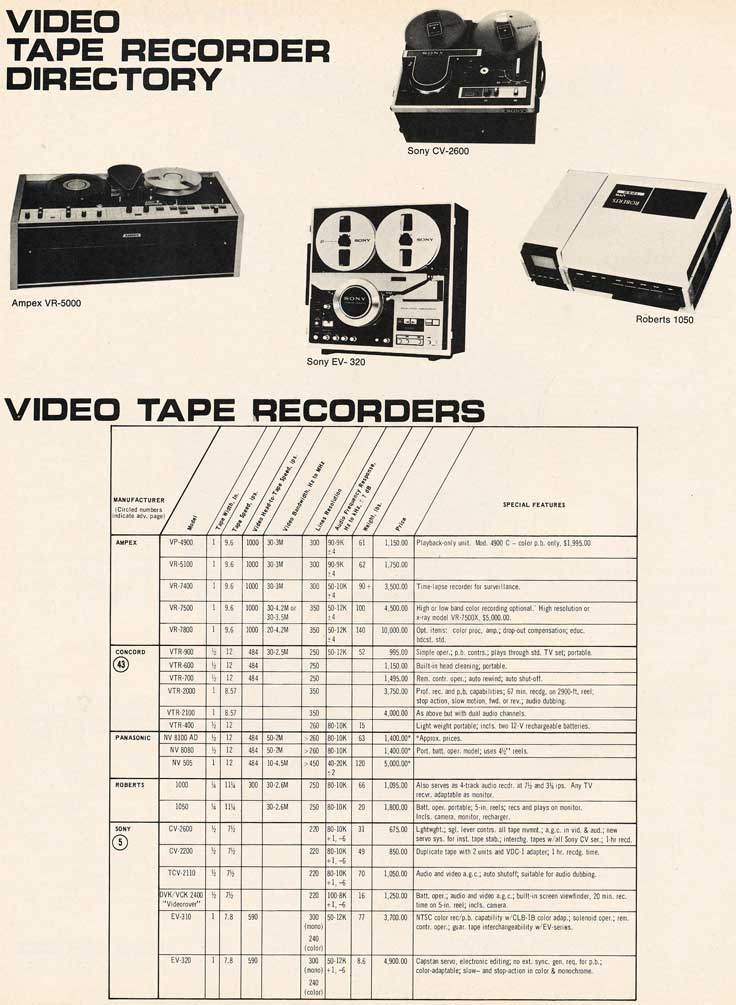
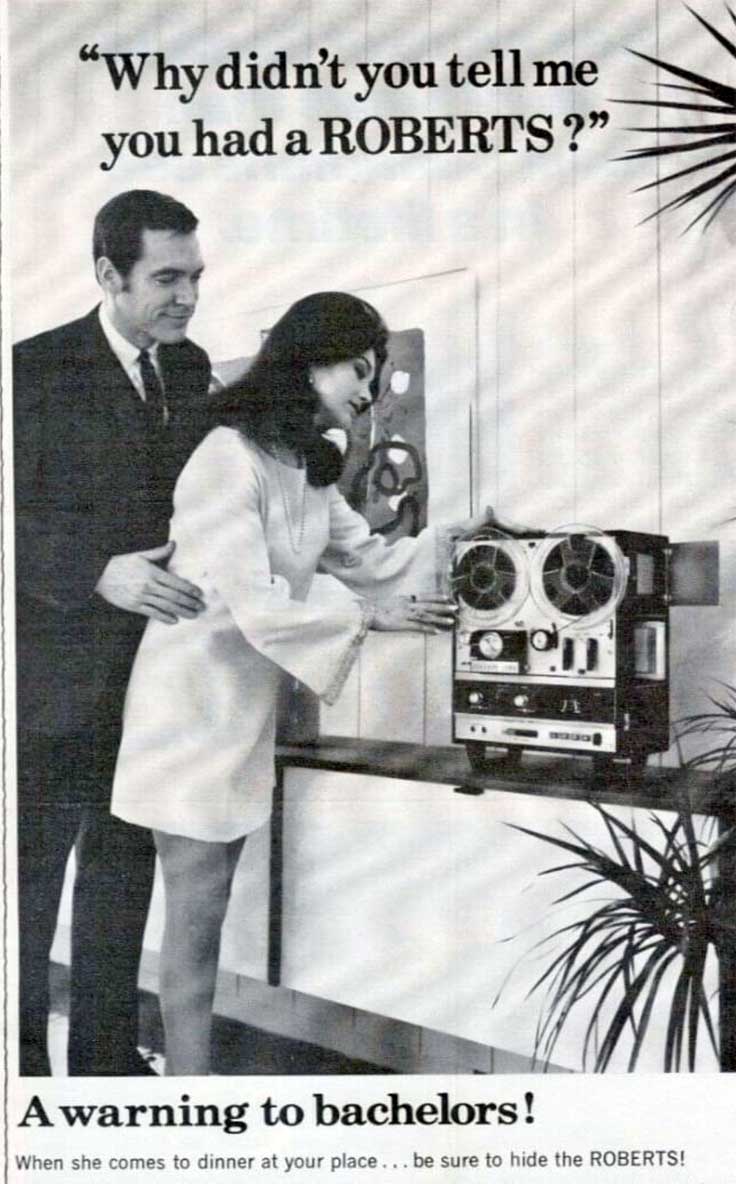
1971 Roberts reel to reel tape recorder ads
On June 1, 1971 Akai began marketing their own branded reel tape recorders in North America as Roberts contract expired.

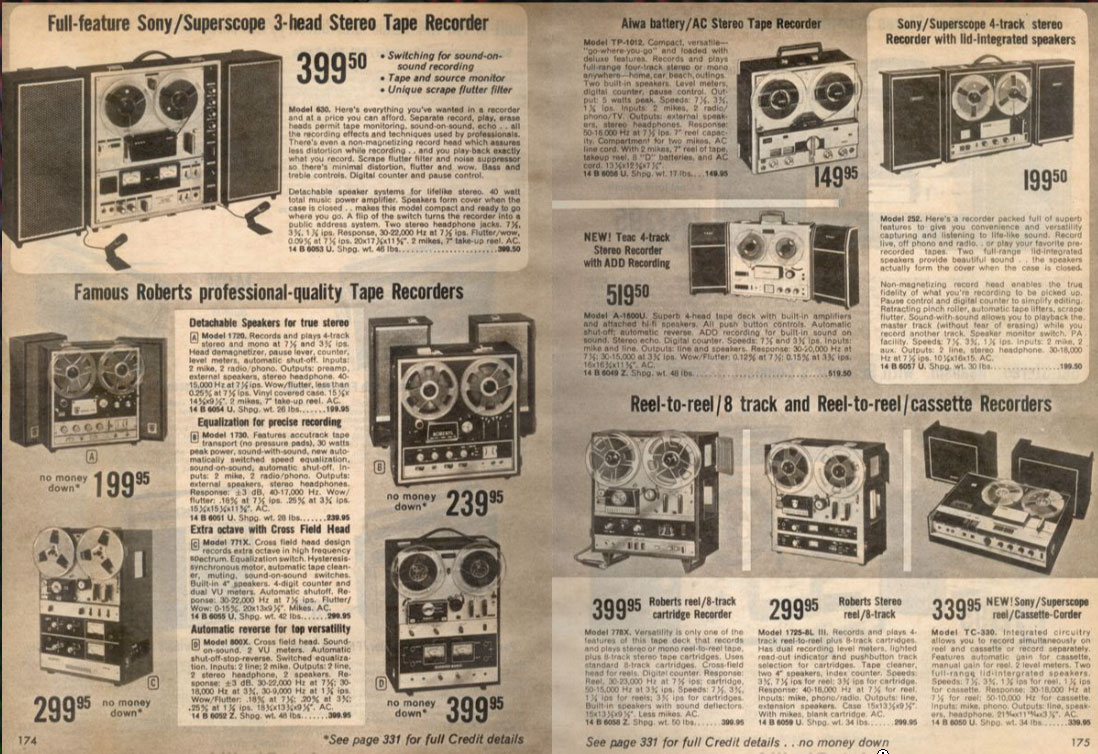

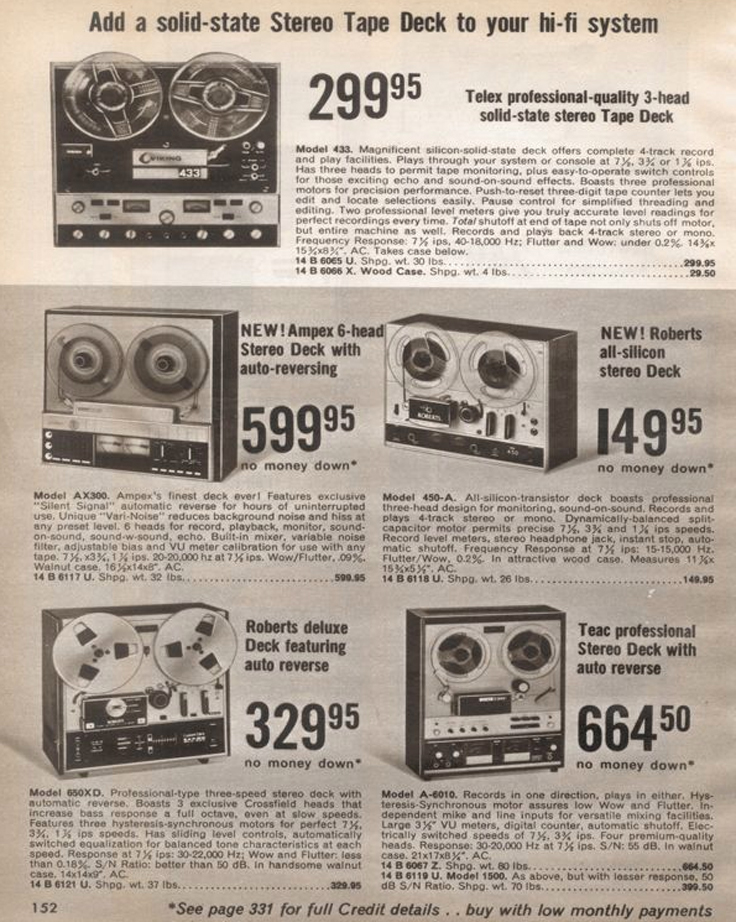

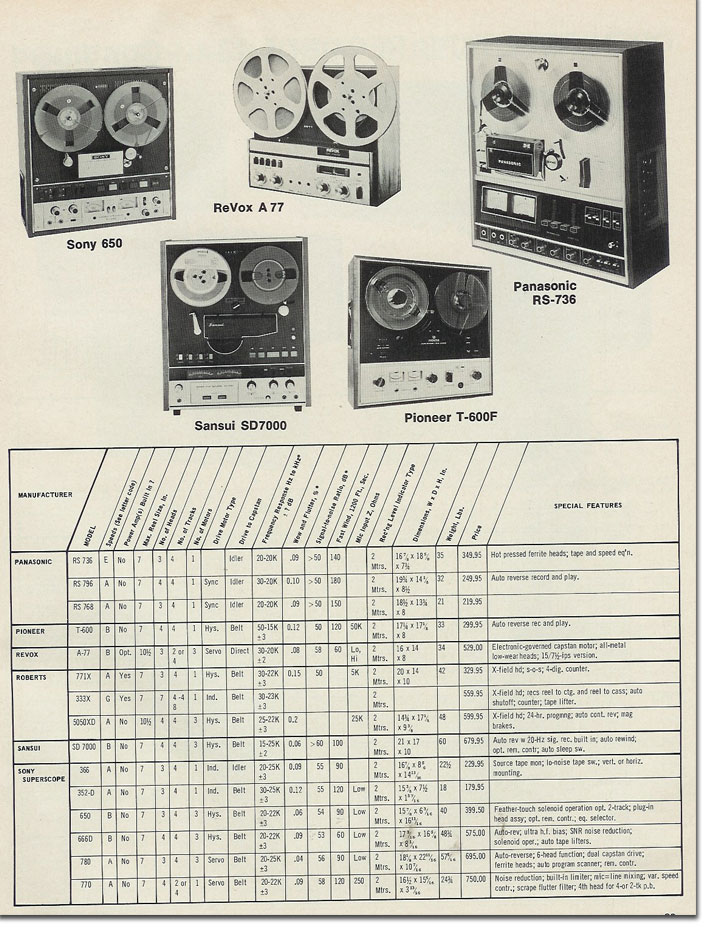
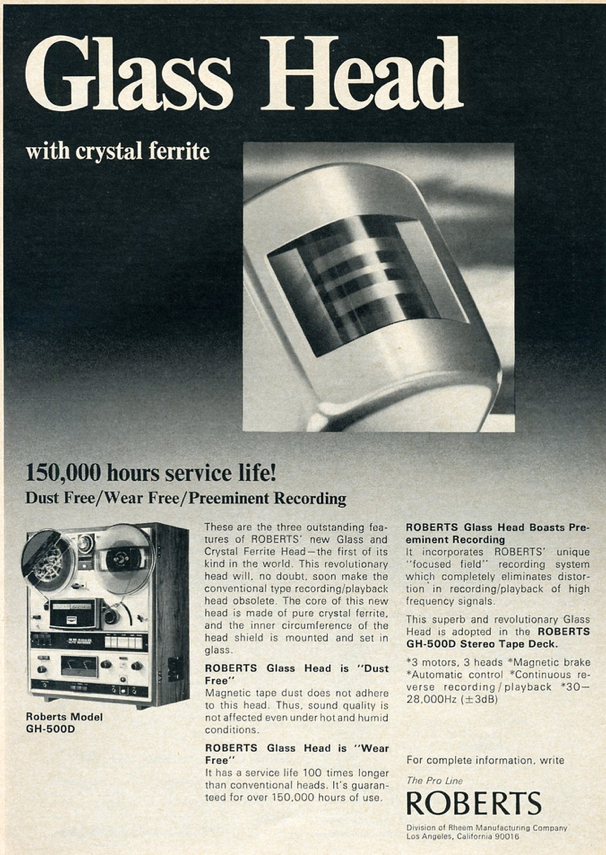


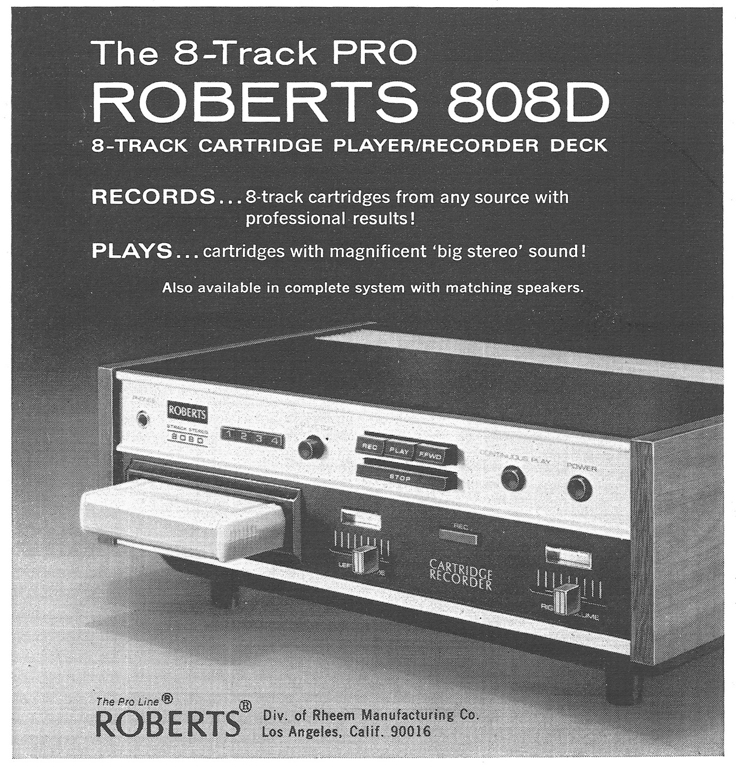
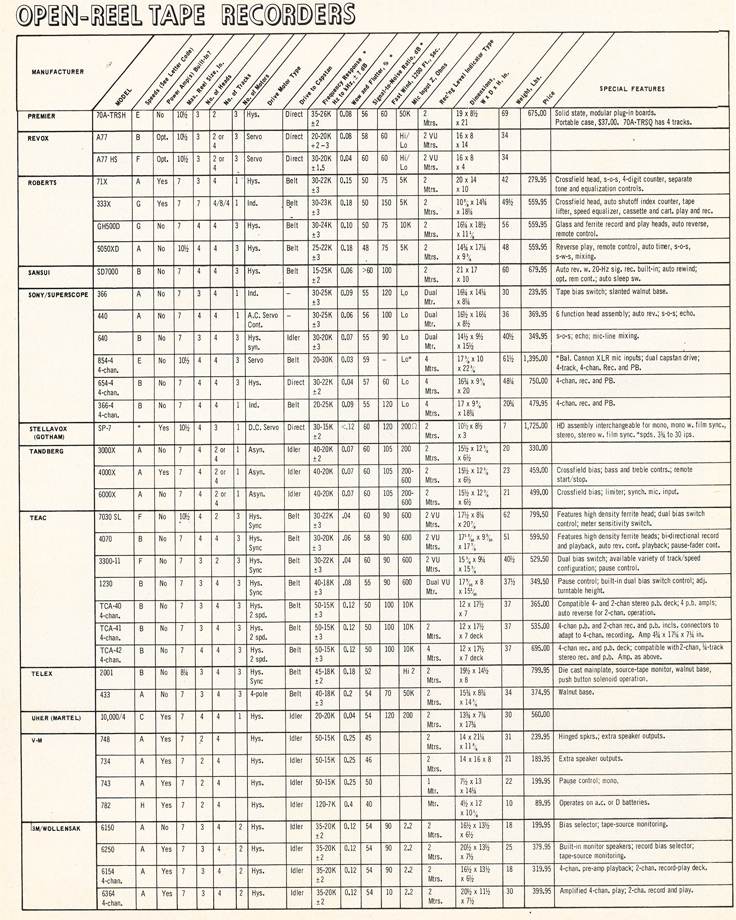
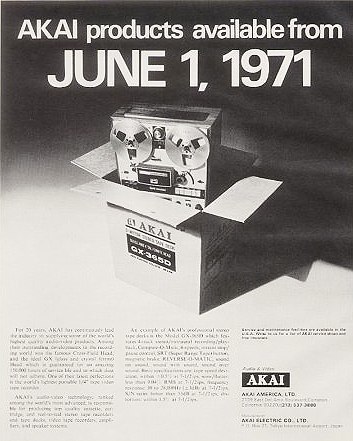
1972 Roberts reel to reel tape recorder ads
In 1972 Roberts Recorders disappeared from the radio catalogs and magazine summaries about tape recorders and the market was being dominated by Akai, ReVox, Sony and Teac in the US. However Rheem Califone was listed in the summary below.
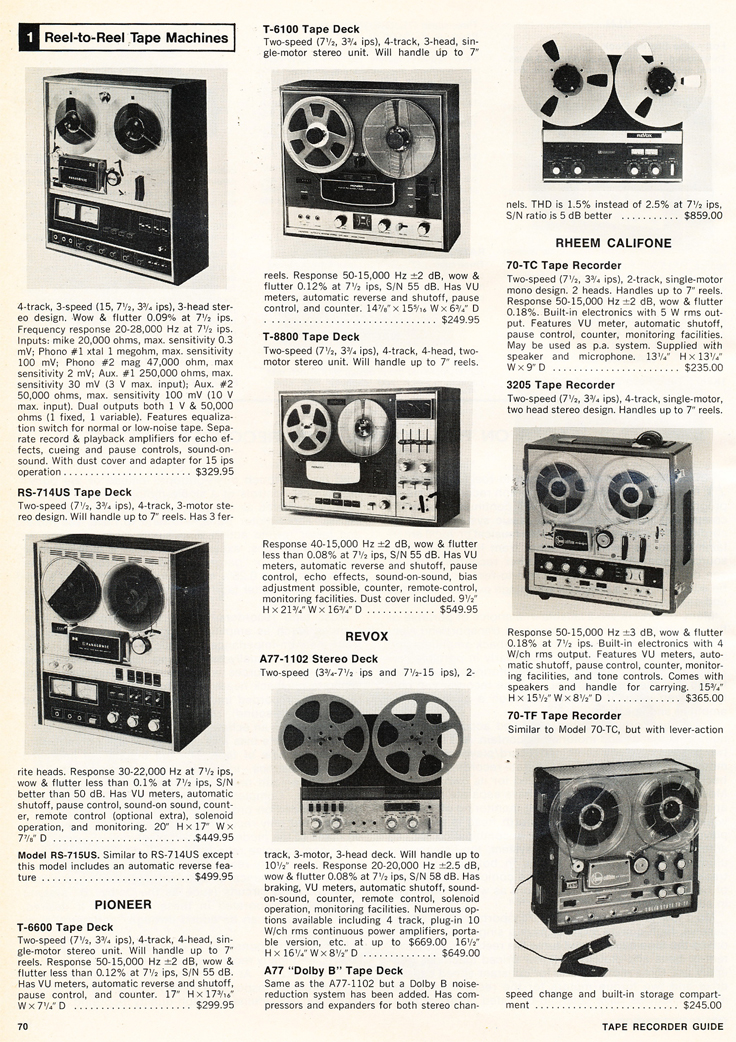
Third Party photos related to Roberts Recorders
We appreciate all photos sent to our museum. We hope to successfully preserve the sound recording history. If we have not credited a photo, we do not know its origin if it was not taken by the contributor. Please let us know if a photo on our site belongs to you and is not credited. We will be happy to give you credit, or remove it if you so choose. On June 8, 2018 we received an email ststing "These units were designed and mfg in canada Rheem Roberts by Ken Moersch in 1968. I worked for Rheem as an engineer from1965 to 1972."



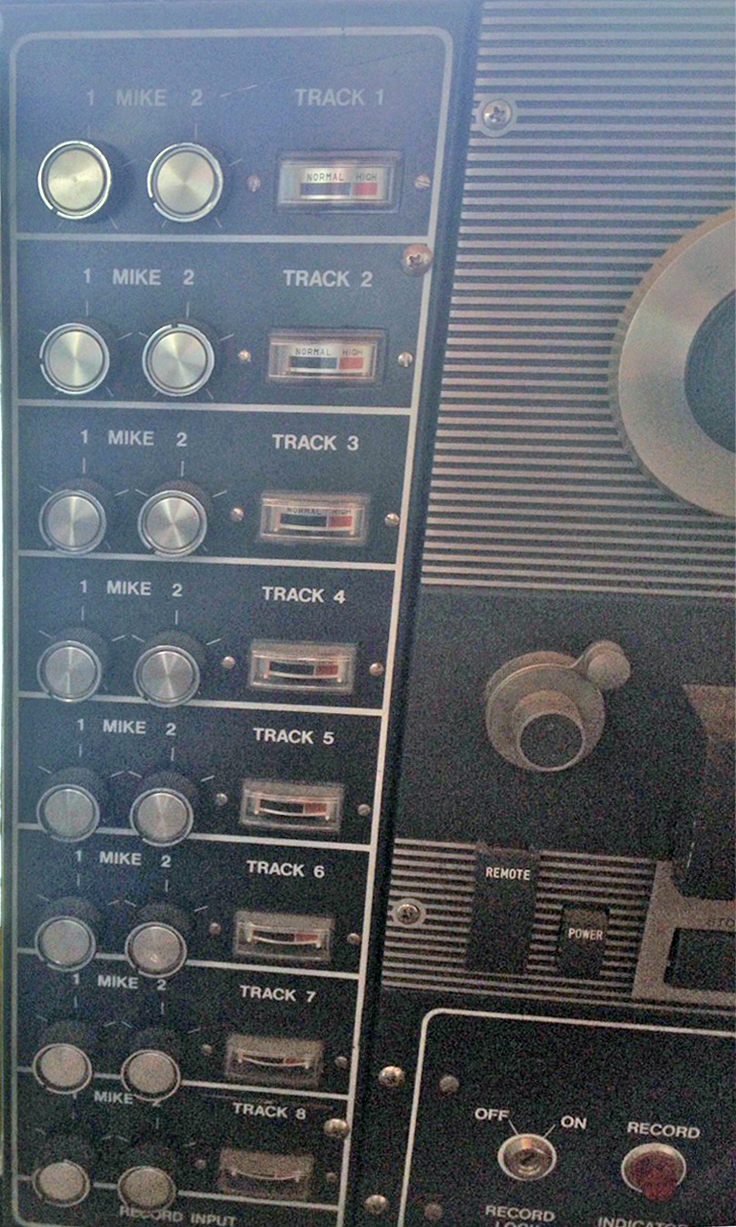
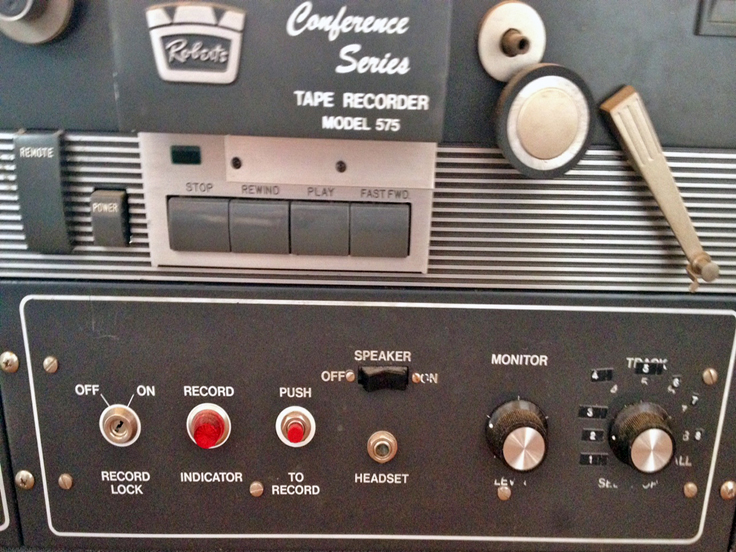
Roberts 8 track Model 575 Conference Series reel to reel tape recorder
The Roberts iPod reel to reel tape recorder conversion
Speaking of Roberts...how about this conversion of a Roberts 997 to play an iPod by W. B. Morton Please note: this unit is not for sale on this site! This is for information only!
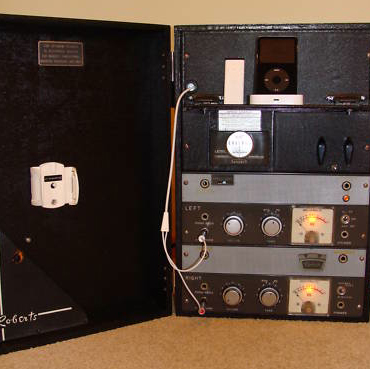
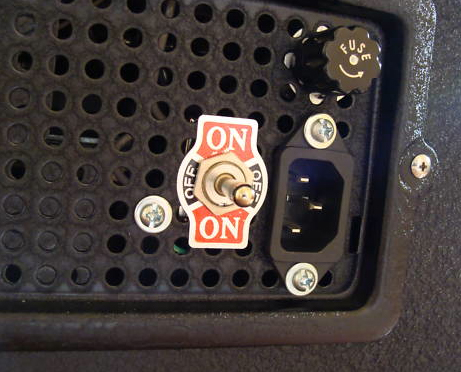

Speaking of Roberts...how about this conversion of a Roberts 997 to play an iPod by W. B. Morton
Roberts 997 reel tape recorder iPod conversion Roberts 997 reel tape recorder iPod conversion Roberts 997 reel tape recorder iPod conversion
(summary from ebay listing used with permission from W.B. Morton) Here is a Roberts Model 997 Reel to Reel deck that has been repurposed to play music files via a universal iPod docking station. Past meets present! Plays loud enough for a small office, dorm room etc. I played an iPod and CD player through the mic inputs and everything sounded fine although there is some distortion if the volume is turned all the way up.
The Roberts 997 tape transport and record/play heads were in terrible shape, so the following was done to put the separate right and left single ended amps to work (and make the resulting case look better):
1. Removed the reel motor and associated drive wheels.
2. Remove forward/reverse link mechanisms.
3. Keep the play/record and forward/reverse switches in place for any future experimental tinkering.
4. Kept the link arm connecting the play/record switch to the sliding switches on the separate amps (again for any future experimenting).
5. Lock the amp sliding switches in place in order to fix the amps into the 'play' position. This can be easily undone if the link arm is to be enabled again.
6. Removed the 6267 (preamp) and 6AR5 (bias oscillator) tubes - not needed for current purposes.
7. Replaced the 12AD7 dual triodes in each channel with 12AU7 tubes. The original dual triodes were bad anyway and the 12AU7's work just dandy.
8. Pulled all of the exterior textured vinyl covering off (no easy task) and covered the exterior with linoleum for a smooth surface.
9. Painted the exterior and body panels with black wrinkle-finish paint.
10. Painted the interior of the cover with regular black spray paint.
11. Added a hinged fold-down shelf to the front of the chassis (where the reels were). This is where the iPod dock is placed when in use.
12. Added a 3-prong power receptacle and moved the fuse to the back panel.
13. Added a double throw switch to allow earth grounded operation or to simulate historical 2-prong operation. The 'up' position connects earth ground and power, the 'down' position connects only power, the center position disconnects both power and ground. The 'down' position will avoid ground loops depending on what other equipment may be used as a source and how that equipment is connected to earth ground itself.
14. Installed a duplex wall socket inside the chassis to accommodate power connection to the iPod dock via its USB power adaptor and to apply power to the amps.
15. Kept the internal speakers in place. Just for fun.
16. Kept the external speaker connection plate on the right side of the chassis. Just for more fun.
17. Kept the external doors for the internal speakers in place as the cavity behind each door is just large enough to hold the iPod dock and remote control when the unit is not in use.
18. Attached an iPod holder to the inside of the cover (the white thing inside the cover in the pictures). The sides of the holder are adjustable to securely hold various iPod models.
19. The front cover door is detachable just as it was when the unit was originally built.
The lucky winner of the auction will receive the repurposed player, a universal iPod dock (Apple part number MB125G/B including USB power adaptor, various cradle adaptors, remote), power cord, and coax cables to connect the 1/4" speaker out jacks to your speakers. For the input connections, RCA to 1/4" jack adaptors are included. I will also send the two 6267 tubes (tested marginally ok, each has a rubber damper) as well as the 6AR5 tube just in case further experimentation will be done. by W. B. Morton
Roberts duplicator
Here's another interesting Rheem tape recorder/duplicator (I assume) • These pics were donated by Nathan Luoto

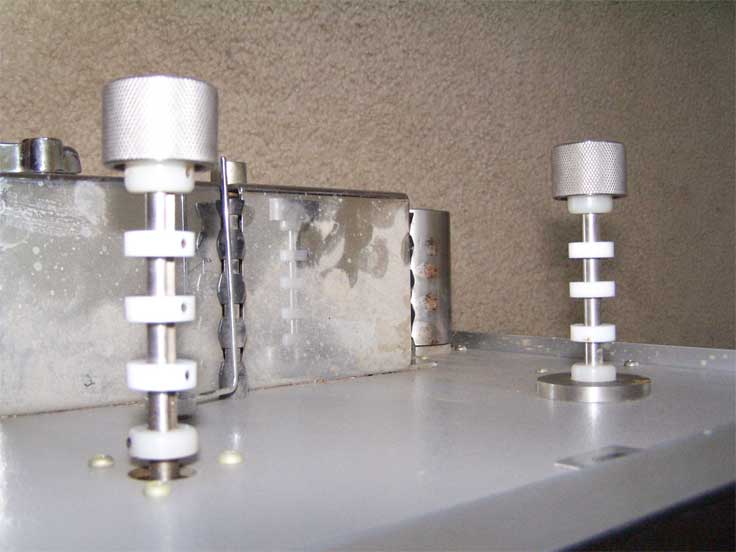
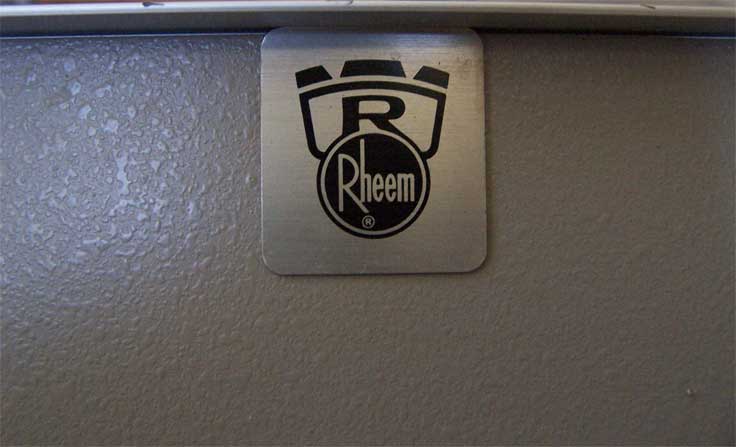
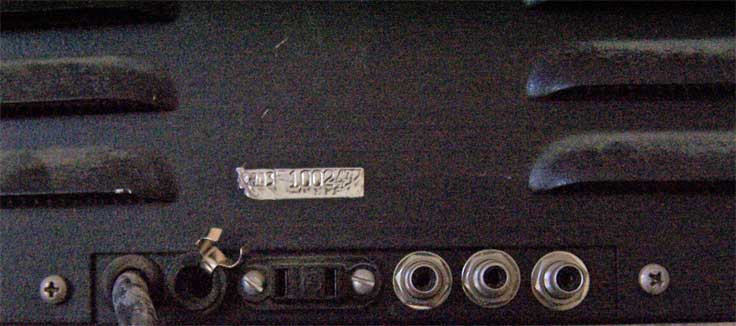

I need help identifying a Rheem model tape machine. It is built into a large black metal box, with a large nickel or chrome plated cover over the heads. It has only one lever to engage and disengage the pinch rollers against the capstan. It does not have transport controls. It appears that it was designed to have four separate tapes stacked and played together. Spacers to go between reels, four individual heads stacked parallel, and four pinch rollers. There are two level knobs, two VU meters, and two 1/4 phone connectors on the front, and three RCA connectors on the back near the fuse and power cable. The only other control is a power switch and an indicator lamp. I rescued this unit from a pile of scrap/electronic recycling.
-Nathan
Part 2 of 2 • Go to Part 1



